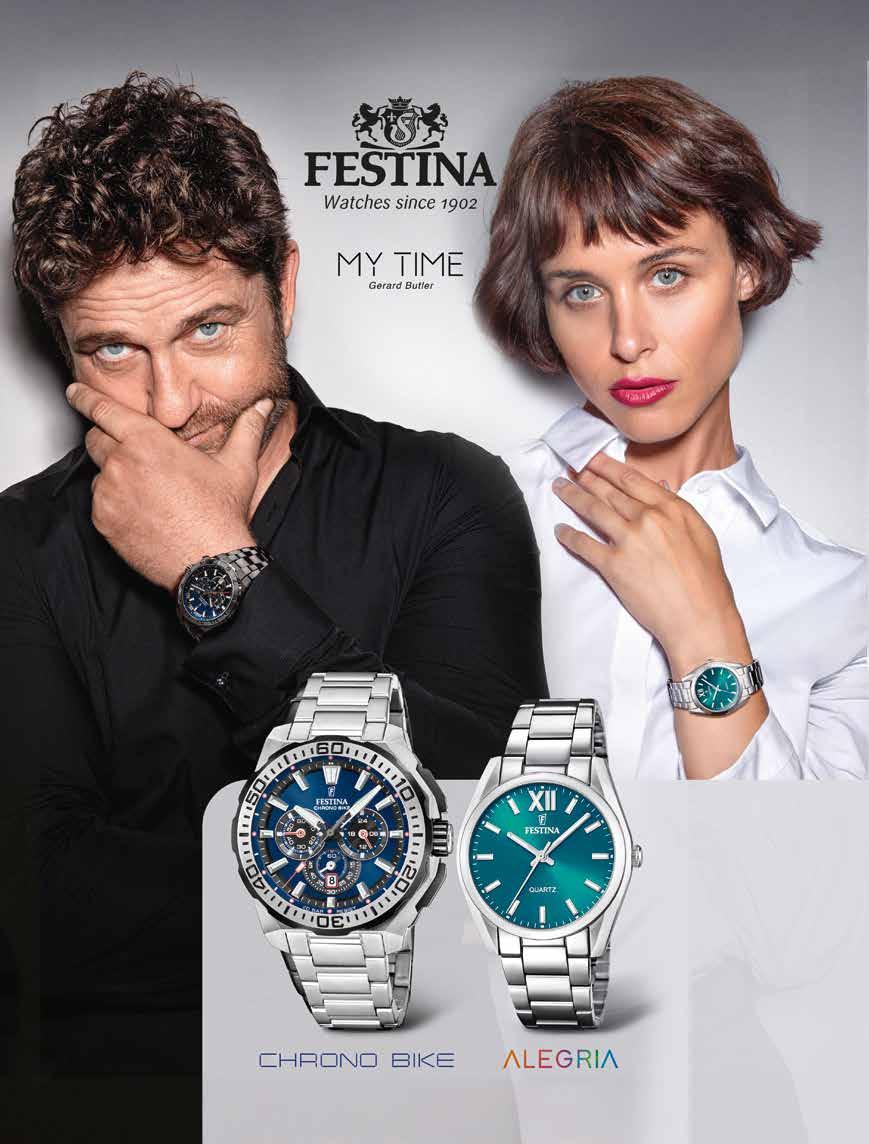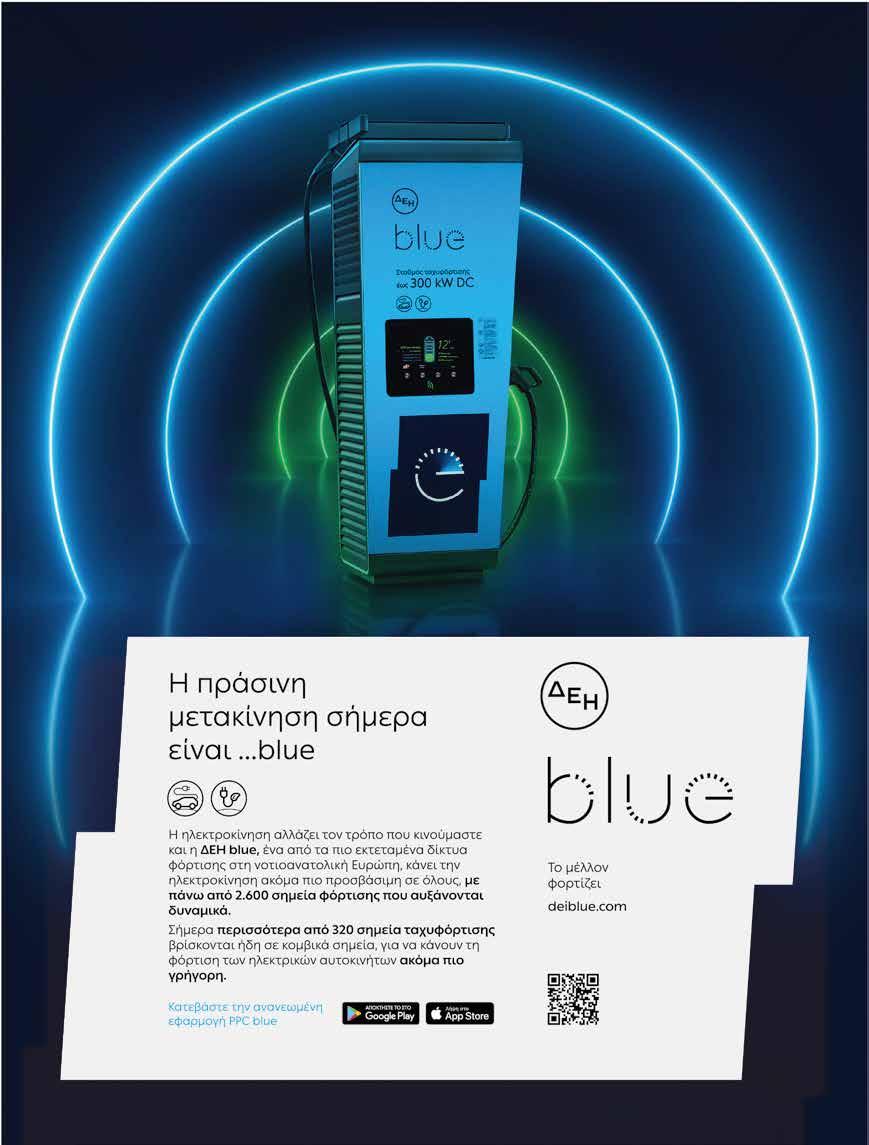





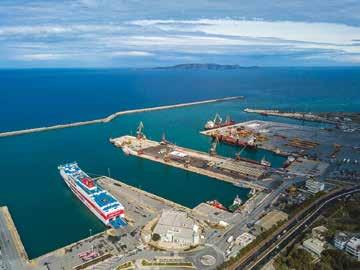


















Dear fellow travellers,
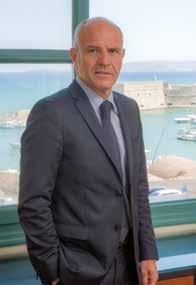
On behalf of the MINOAN LINES family, we are always pleased -and honoured- to welcome you on board our ships. Once again this summer, we will take you on a journey with the floating palaces KNOSSOS PALACE , FESTOS PALACE and KYDON PALACE with luxury, safety, and high-quality services that cater to every aspect of your travel experience. In light of today’s economic challenges, we are developing our commercial policy with your needs in mind. Our affordable prices, packages, offers and privileges for families, children, students, the unemployed, families with three or more children and people over 60 years old ensure that every passenger enjoys a travel experience that combines comfort, luxury and economy with MINOAN LINES Crete is one of Greece’s most popular and affordable destinations, offering unforgettable experiences, unique natural beauty, a long history, rich culture and unparalleled hospitality. This year, we are celebrating a historic moment for Greece and its culture: the official addition of the Minoan Palatial Centres to the UNESCO World Heritage List. The Minoan Civilisation is now internationally recognised, and Crete is established as a globally important cradle of culture. As a company that proudly bears the Minoan name, we honour this heritage every day through our connection with Crete, the sea and travelling as a means of bringing cultures together. The past travels with us into the future, and in the MINOAN LINES family, we are proud to have covered the Piraeus-Heraklion route daily, all year round, for more than 50 years with our modern, eco-friendly cruise ferries, the FESTOS PALACE and the KNOSSOS PALACE
Driven by a deep sense of cultural responsibility and respect for history, MINOAN LINES and GRIMALDI LINES contributed to the implementation of the international archaeological exhibition, “Archaic Elites: Warriors and Princesses”, hosted at the Museum of the Ancient City of Eleutherna in Rethymno, Crete. The two companies offered their expertise in safely transporting such sensitive items as antiquities on a “cultural journey” that connects Italy with Greece and Crete.
A total of 130 unique antiquities, which travelled by sea with the MINOAN LINES and GRIMALDI LINES fleets, are on display, coming from the permanent collections of Italy’s leading
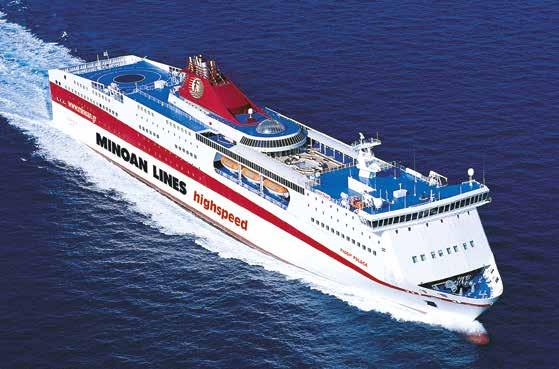
GRIMALDI LINES
archaeological museums. Many of these artefacts, from the National Etruscan Museum of Villa Giulia (Rome), the National Archaeological Museum of Florence, the National Archaeological Museum in Ancona, the National Archaeological Museum in Matera, the Archaeological Museum of Bologna and the Gregorian Etruscan Museum, as well as the Vatican Museum, travelled outside Italy for the first and probably only time.
MINOAN LINES and Milos ! The daily connection that transformed the island and its local community. An island “destination” that has become even more accessible all year round thanks to daily routes from Piraeus and Heraklion, with the cruise ferries FESTOS PALACE and KNOSSOS PALACE. Please note that the company offers an even greater variety of excursions to the island in the summer, with daily routes available until the beginning of September. We continue to explore the beauties of Italy . With the luxurious KYDON PALACE on the Igoumenitsa-Brindisi route in both directions, and in cooperation with GRIMALDI LINES and the EUROPALINK ship, we operate daily double itineraries all year round, bringing you timeless Italian style, a cosmopolitan Mediterranean flair and the cultural heritage of our neighbouring country. Certified to strict safety, quality and environmental management standards, and internationally recognised for our travel experiences, we are continuing to pioneer systematic practices to improve the energy efficiency of our fleet on land and at sea.
In 2024, MINOAN LINES achieved significant reductions in onboard waste: the total quantity decreased by 33.12%, food waste by 9.77%, and operational waste by 51.05%. The amount of plastic recycled increased by 2.25%. In addition to paper and electronic device recycling, the offices also introduced recycling of other materials, such as plastic, glass and aluminium. To date, we have replaced 75-90% of the traditional lamps on our ships and in our offices with LEDs, achieving an estimated energy saving of 147,000 watts per ship.
MINOAN LINES and the GRIMALDI GROUP demonstrate that business excellence can be combined with sustainable development and environmental responsibility , setting an example for the Greek and international shipping community. In this context, two state-of-the-art vessels are being built for the return route between Piraeus, Milos and Heraklion. Designed with alternative fuel capabilities, they will offer passengers a unique experience combining comfort and luxury with far greater transport capacity for passengers and cargo vehicles. As a responsible “member of society”, MINOAN LINES operates with a focus on health, education, the environment, culture,
sustainable development and animal welfare . The company recently provided financial support for the purchase of the advanced Stealth Navigator S8 EM ENT navigation system, in order to support the work of the ENT clinic at the University General Hospital of Heraklion. The company has long embraced the Smile of the Child as its exclusive carrier on its routes to Crete. It has consistently covered the transport costs for the medical staff of the volunteer medical team Doctors of the Aegean PAGNI, to whom it donated a fully equipped minivan for free preventive examinations.
We gladly accepted the award as the company with the leading brand in the shipping industry by the internationally prestigious institution CORPORATE SUPERBRANDS for the years 2023-2024.
At the TOURISM AWARDS in 2024 and 2025, we won the Gold Award in the “Promotion of Local Greek Cuisine” category for the certified Cretan menu available in the à la carte restaurants of the FESTOS PALACE and KNOSSOS PALACE ships. This menu is in addition to the existing revamped menu, and brings Crete to every trip thanks to the curation of chef Nektaria Kokkinaki.
We would like to thank you for your trust, and we promise that we will continue to uphold the high standards of our ships and human resources, both on land and at sea, with the same zeal that we have demonstrated for over 50 years, in order to continue offering you unique trips in Greece and abroad. Because at MINOAN LINES , your journey begins the moment you start thinking about it. And when you think of “travel”, we want MINOAN LINES to be the first thing that comes to mind. We invite you to come and create new images, experiences and moments with us!
LucasSigalas CEO of Minoan Lines
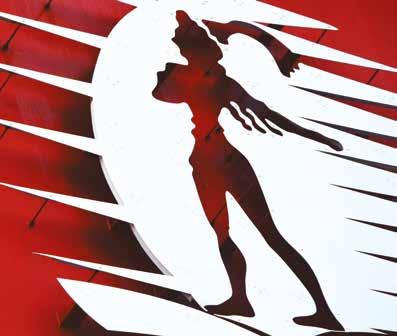
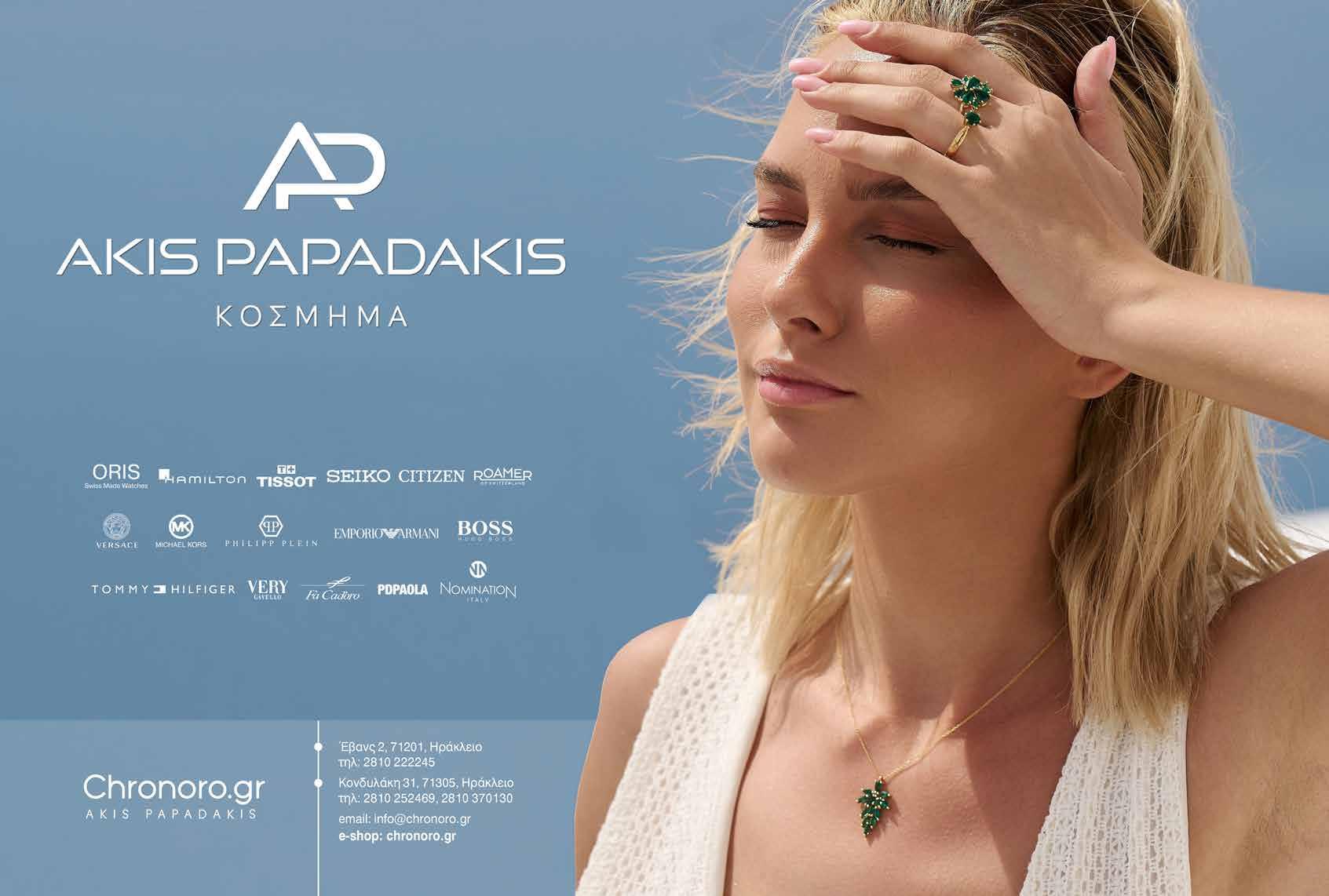

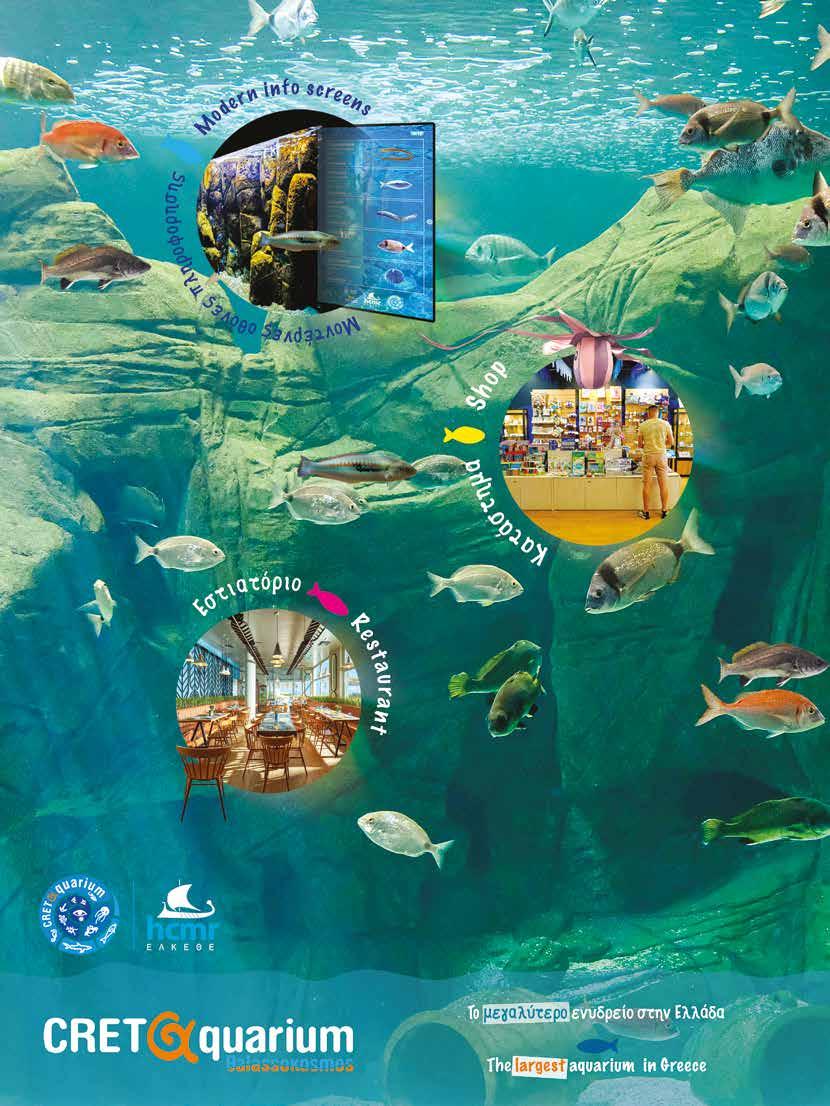
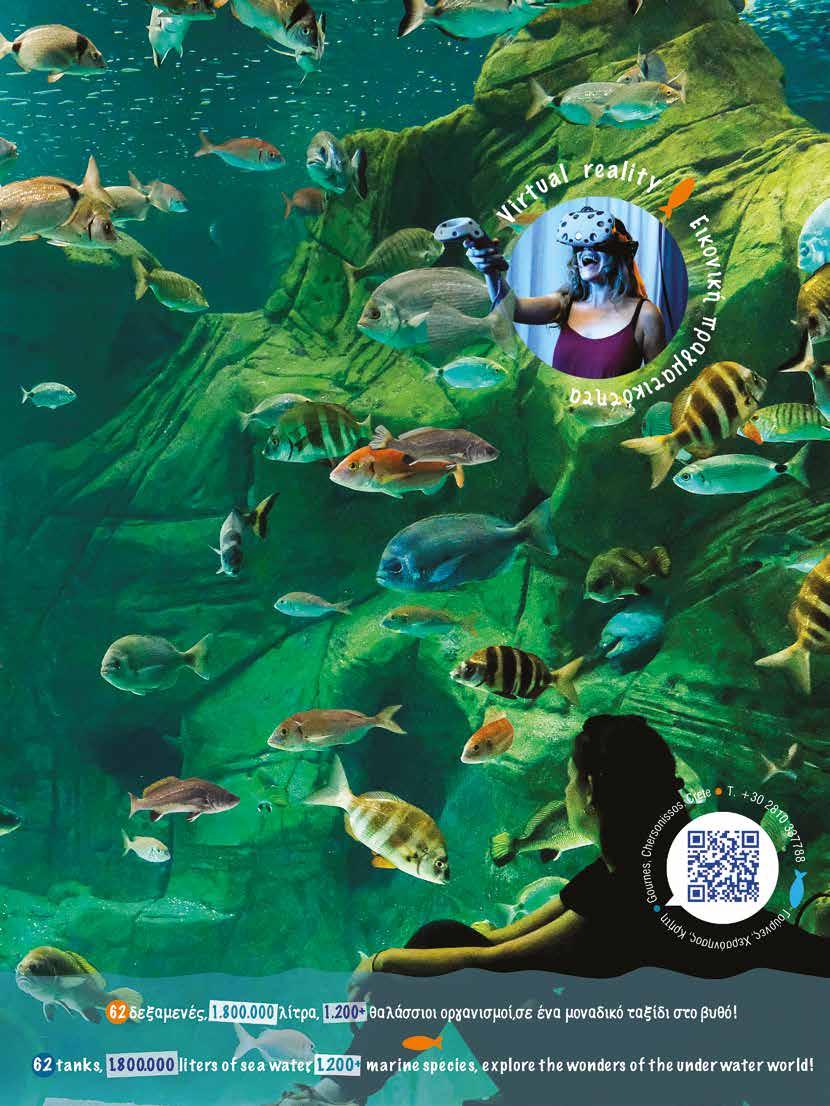

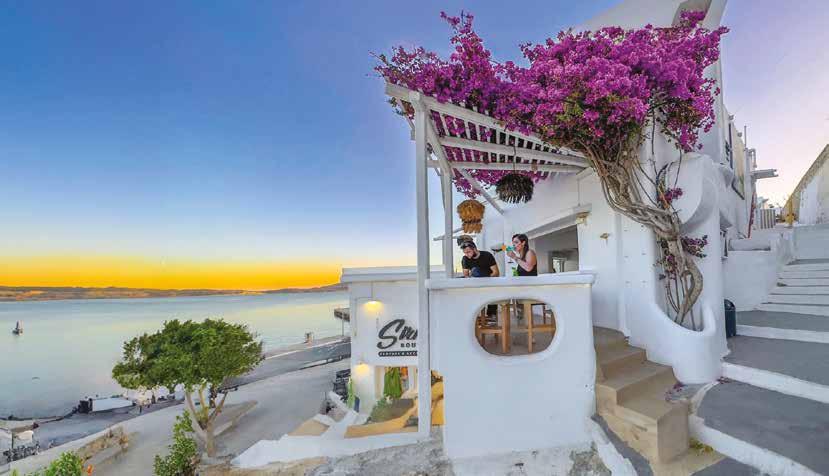
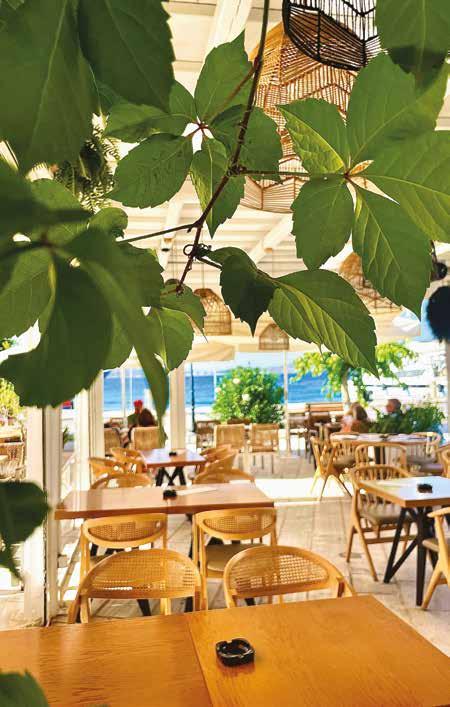
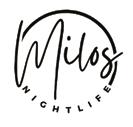


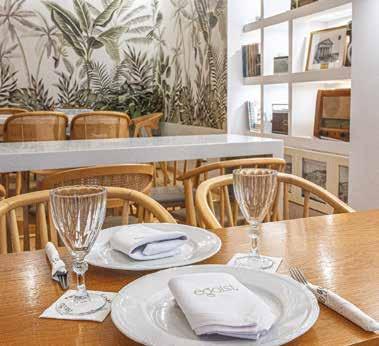
Situated in the port of Adamas, Egoist cafe offers an excellent blend of tranquillity, delicious flavours and authentic island hospitality. For coffee, breakfast or brunch, delicious food and unique cocktails, Egoist is the ultimate destination for every moment of the day! EGOIST Cafe Bar, Adamas 2287 023151
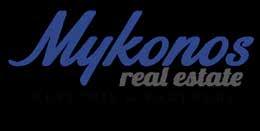
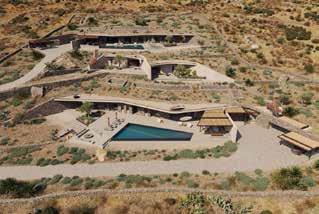
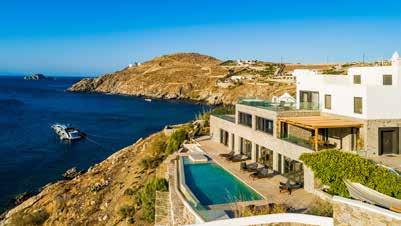
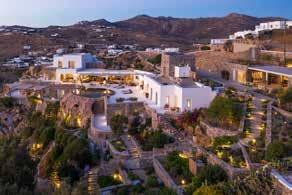
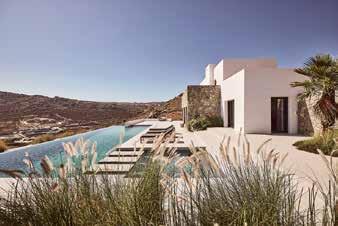





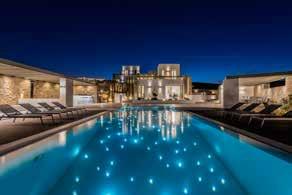

Offices:
Athens: 13-15 Sofokleous Rd, Athens
w w w . r e v i t h i s - r e a l e s t a t e . c o m
D r o s i a : 2 M a r a t h o n o s S t r .
w w w . r e v i t h i s . c o m
Mykonos: New Region Drafaki Rd, (Above Piraeus Bank)
w w w m y k o n o s - r e a l e s t a t e c o m
Arachova: Old Nation Rd
www.parnassos-realestate.com
Vouliagmeni: Astir Marina Vouliagmenis, South Suburbs
w w w g r e e k t o p v i l l a s c o m r e a l e



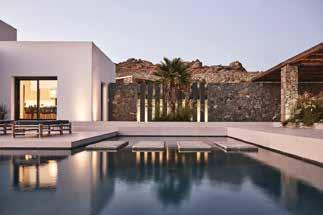
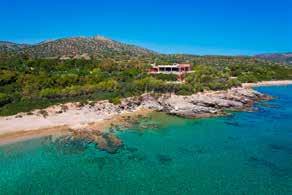
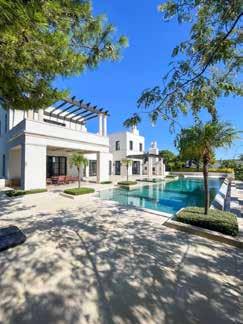


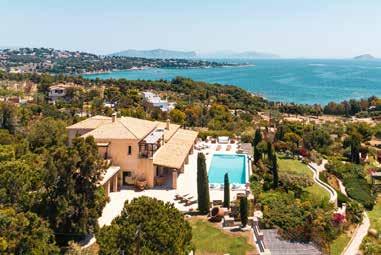
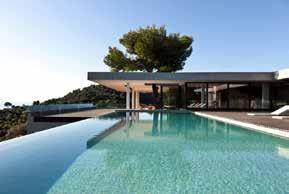
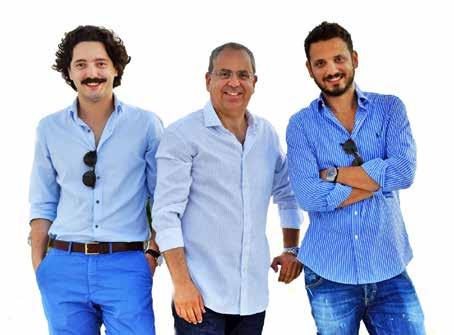
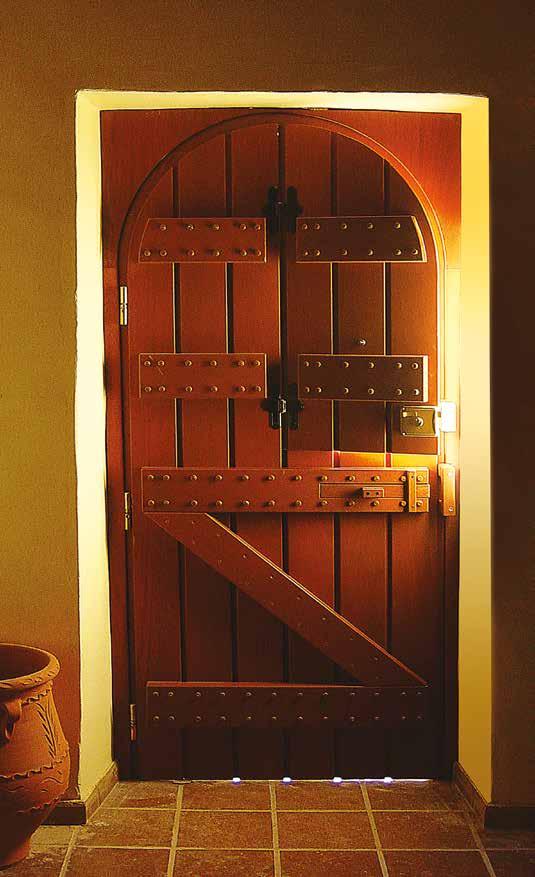
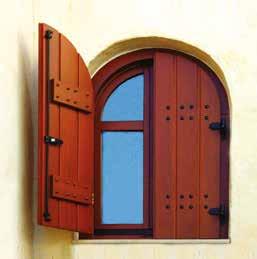
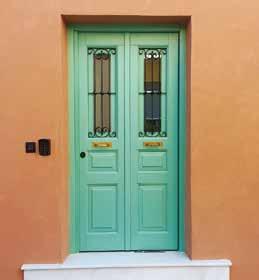
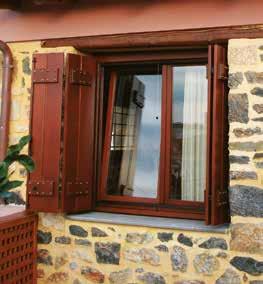


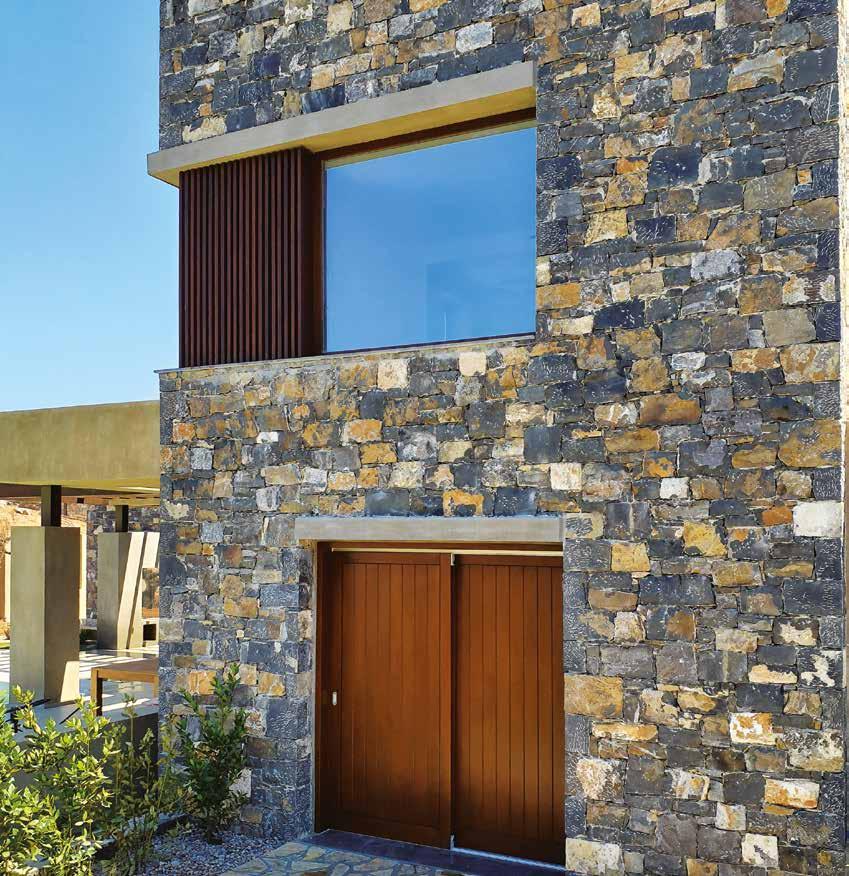



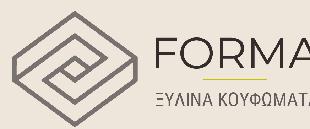

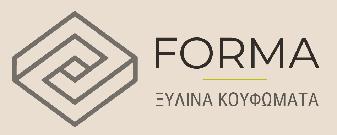
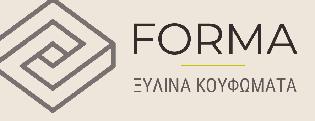









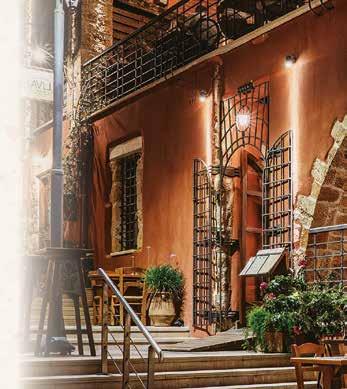

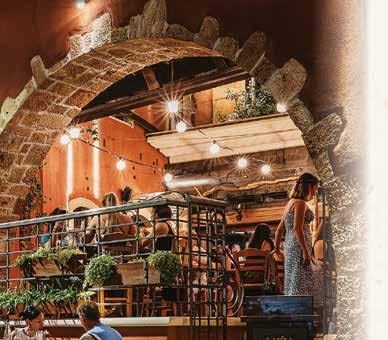












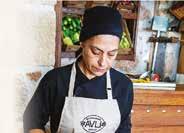
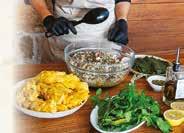





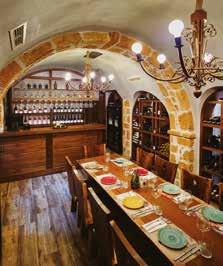














oused in a lovingly restored 18th-century mansion in the old town of Malia, Avli is more than just a traditional restaurant. It is a sustainable culinary sanctuary that blends heartfelt Cretan hospitality with a deep respect for nature, local produce, and wine culture.
Following the principles of farm-to-table philosophy, and under the supervision of DIO (Greece’s o�ficial organic certification organization), they grow their own fruits, vegetables and herbs on a certified organic farm. These are hand-harvested and delivered fresh to your plate every day.
The traditional wood-fired oven bakes warm, naturally leavened sourdough bread, served as a welcome with their own extra virgin olive oil and homegrown marinated olives. What truly sets Avli apart, however, is their unwavering commitment to the environment: They operate under a zero-waste philosophy, recycling organic le�tovers, feeding free-range hens with food scraps, and composting to produce natural fertilizer for their crops.
Not out of obligation - but out of respect for the land that nourishes us

And because food is best enjoyed with a perfect glass of wine, Avli is proud to host a dedicated cellar with over 120 carefully selected Greek and Cretan wine labels, many of them organic or rare. They regularly host wine tastings and food & wine pairing events, with an expert team ready to guide you through the magic of the Greek vineyard. Avli is more than a meal. It’s an experience - rooted in the earth, with a vision for the future.
Three Voices, One Philosophy | The soul of Avli, in the words of its people.
“We wanted to create a space where you feel like home – but eat better than at home”.
—Yannis Spanakis, Service Manager

“We don’t just cook. We give back to the land everything it gives us. Food has a responsibility, not just �lavour”.
— Giorgos Roubakis, Chef at Avli
“At Avli, we don’t just have a wine list - we have bottled stories. Each label, a new experience”.
— Nondas Kondogiorgakos & Mike Faitos, Sommelier

ΙΔΙΟΚΤΗΣΙΑ MINOAN LINES S.A.
17, 71202,
Tηλ. 2810-399800, Φαξ: 2810-330308
www.minoan.gr
OWNERSHIP
MINOAN LINES S.A.
Shipping Company 17, 25th Avgoustou str., Heraklion, Crete - Greece Tel.: +30 2810-399800, Fax: +30 2810-330308
www.minoan.gr
PMS MEDIA
210 3212 037 info@pmsmedia.gr ΔΙΕΥΘYΝΤΡΙΑ:
PRODUCTION – PUBLISHING PMS MEDIA
18th km Marathonos ave. & Pilou str., 153 51 Pallini
Τel.: +30 210 3212 037 info@pmsmedia.gr
MANAGING DIRECTOR: Xanthi Iliopoulou
MANAGING EDITOR: Thanassis Toloudis
CREATIVE DIRECTOR: Nikos Vatsitsis
ART DIRECTOR: Alexandros Bitsaras
CONTRIBUTORS: Maria Atmatzidou, Asteropi Lazaridou, Mia Kollia, Dimitris Papadopoulos, Eva Petropoulou
COPY EDITOR: Niki Stathia
TRANSLATION: Evita Lykou
PHOTOS: Andreas Simopoulos
COMMERCIAL DIRECTOR: Stavros Kefalopoulos
ADVERTISING MANAGERS: Giorgos Andreadelis, Lena Konitsa, Kaiti Konitsa, Marifili Papanikolaou, Stella Selianiti, Peggy Stebili
PRINTING: PaperGraph S.A.
Your Free Copy
It is illegal to publish, reproduce, or transmit in whole or part of the magazine without the written permission of the publisher. The MINOAN LINES isn’t responsible for the contributors’ opinions as they are represented on issues.
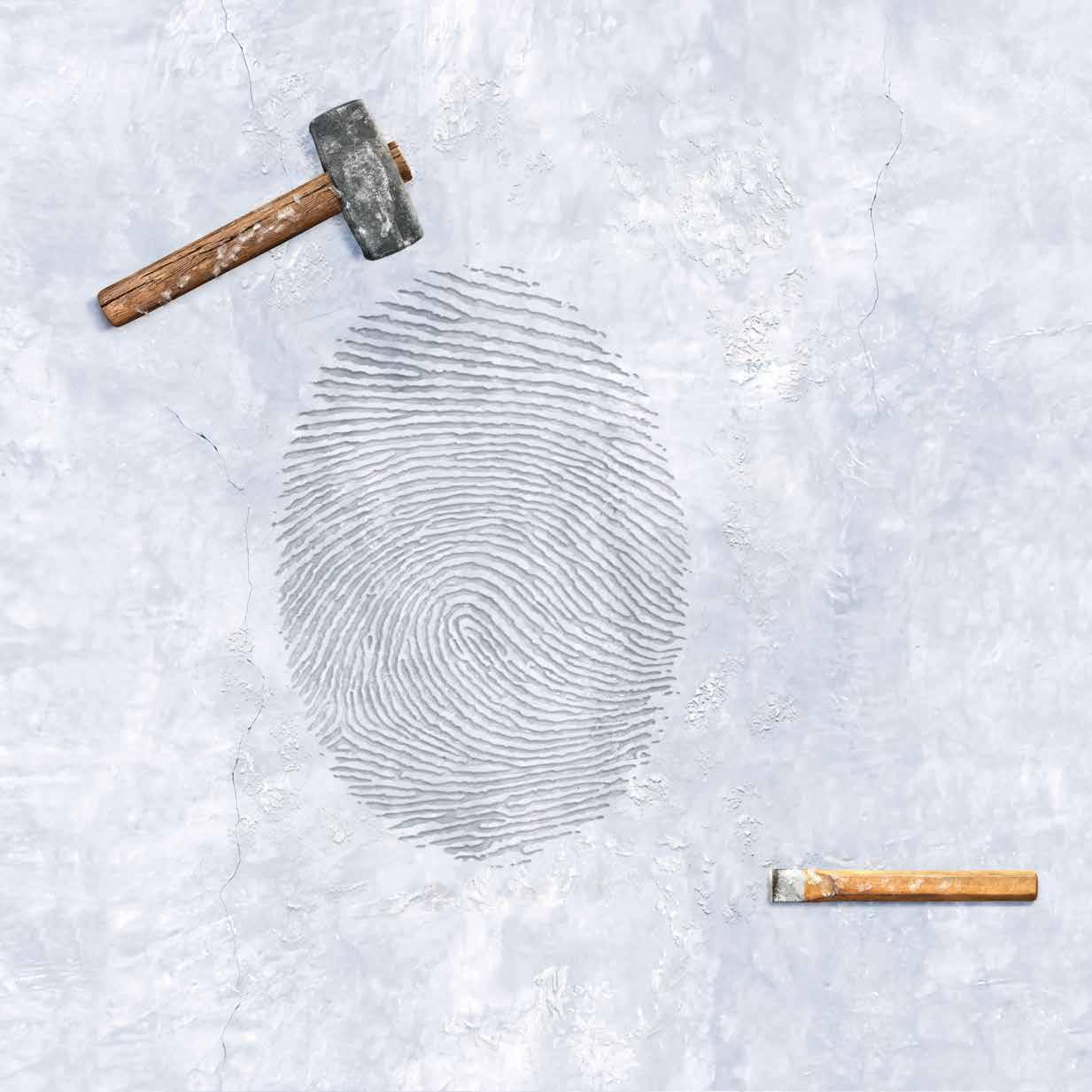








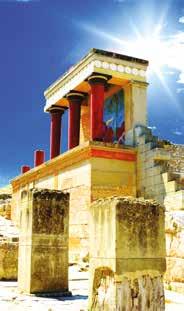
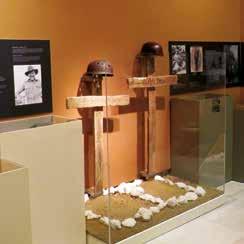
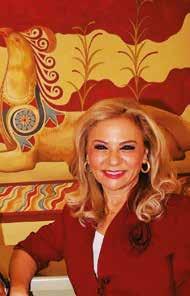
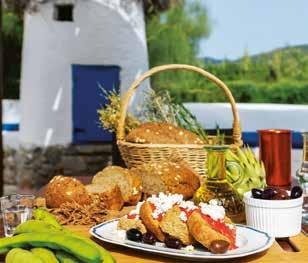
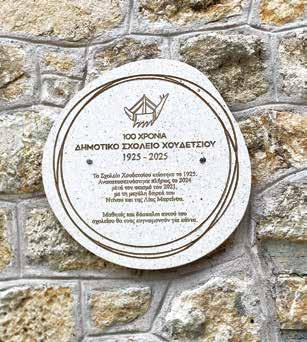
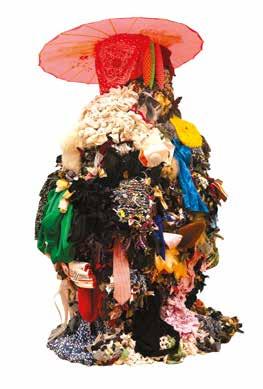
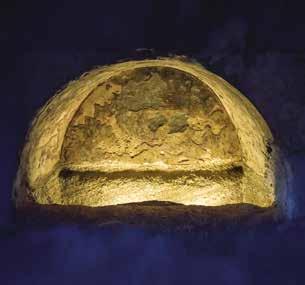
cent. B.C.) from the Orthi Petra necropolis with a representation of offerings to a seated deity.

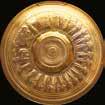


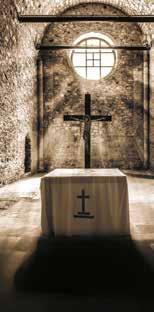
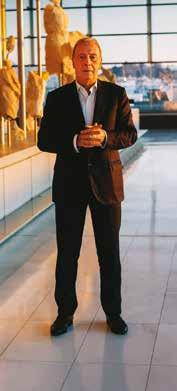
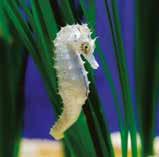
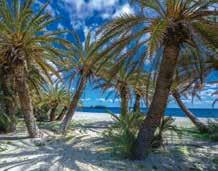
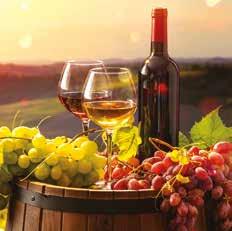
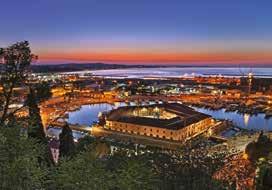

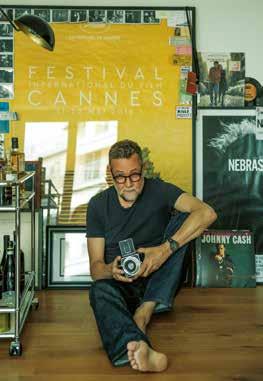
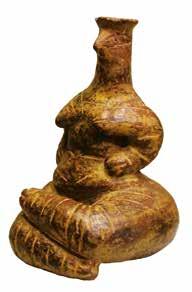
Oeno-Logical progress
Nikos Stampolidis
Cretaquarium:
Cretaquarium: Finding Nemo (and 1,300 other sea creatures)!
Katerina Papoutsaki: Maturity and grace
Les Parisiennes of Crete
Phedon Papamichael: Lights, camera, creation
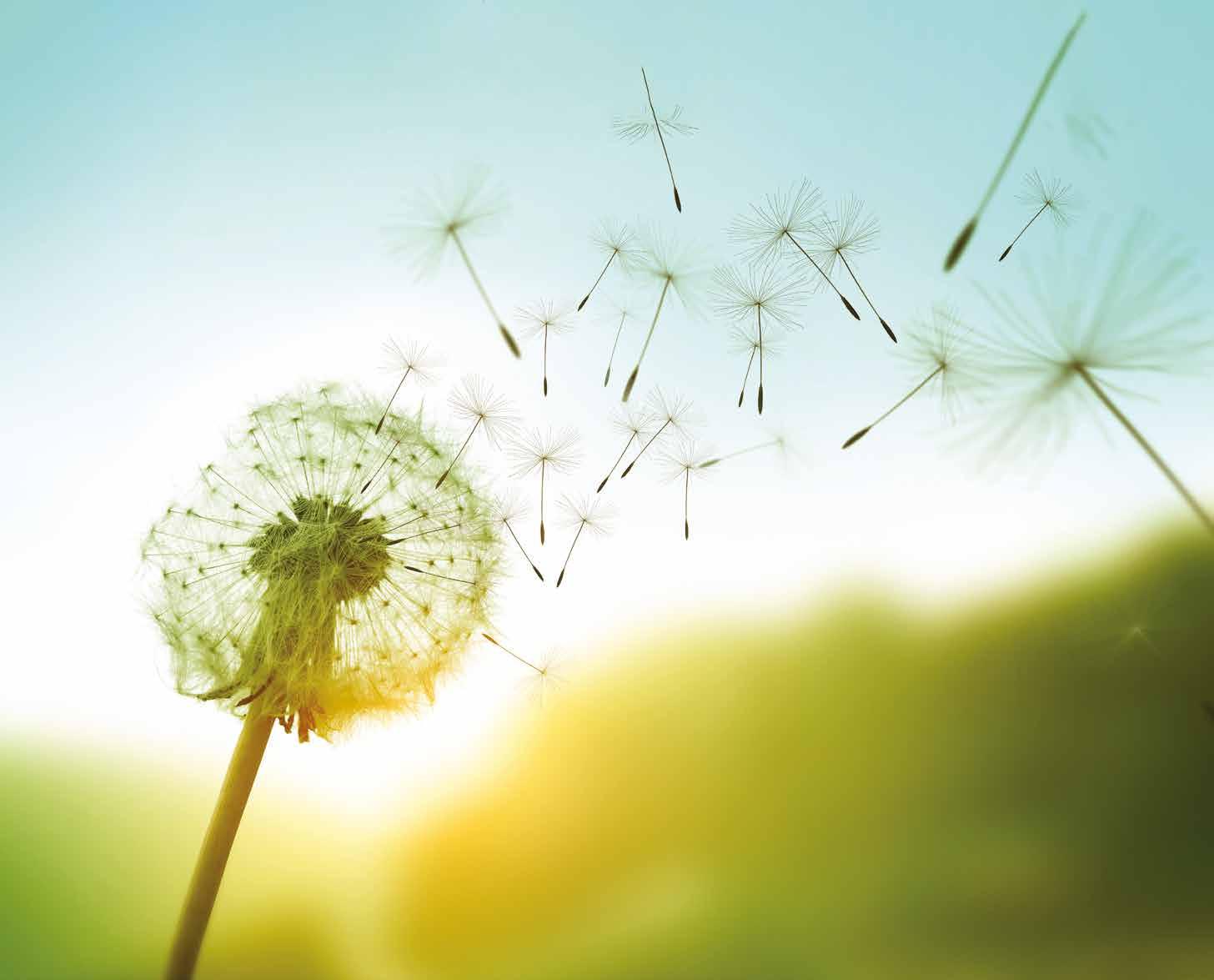
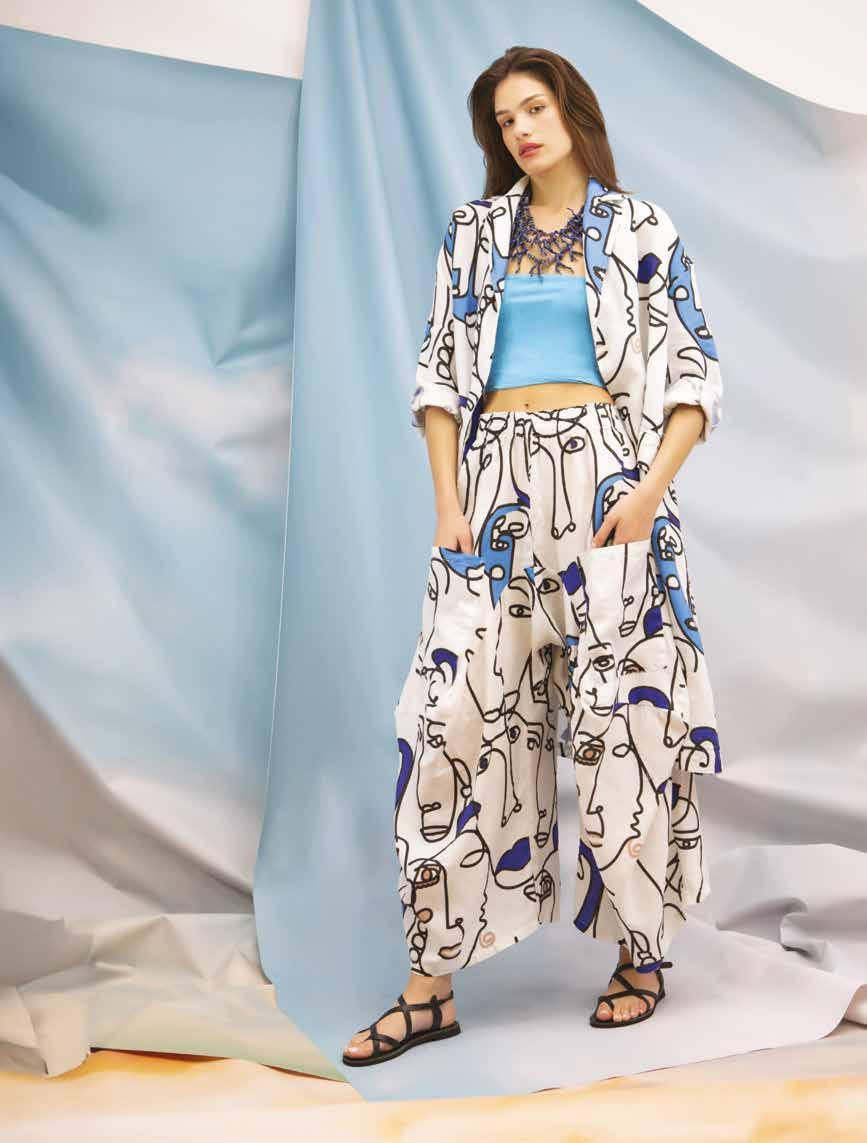

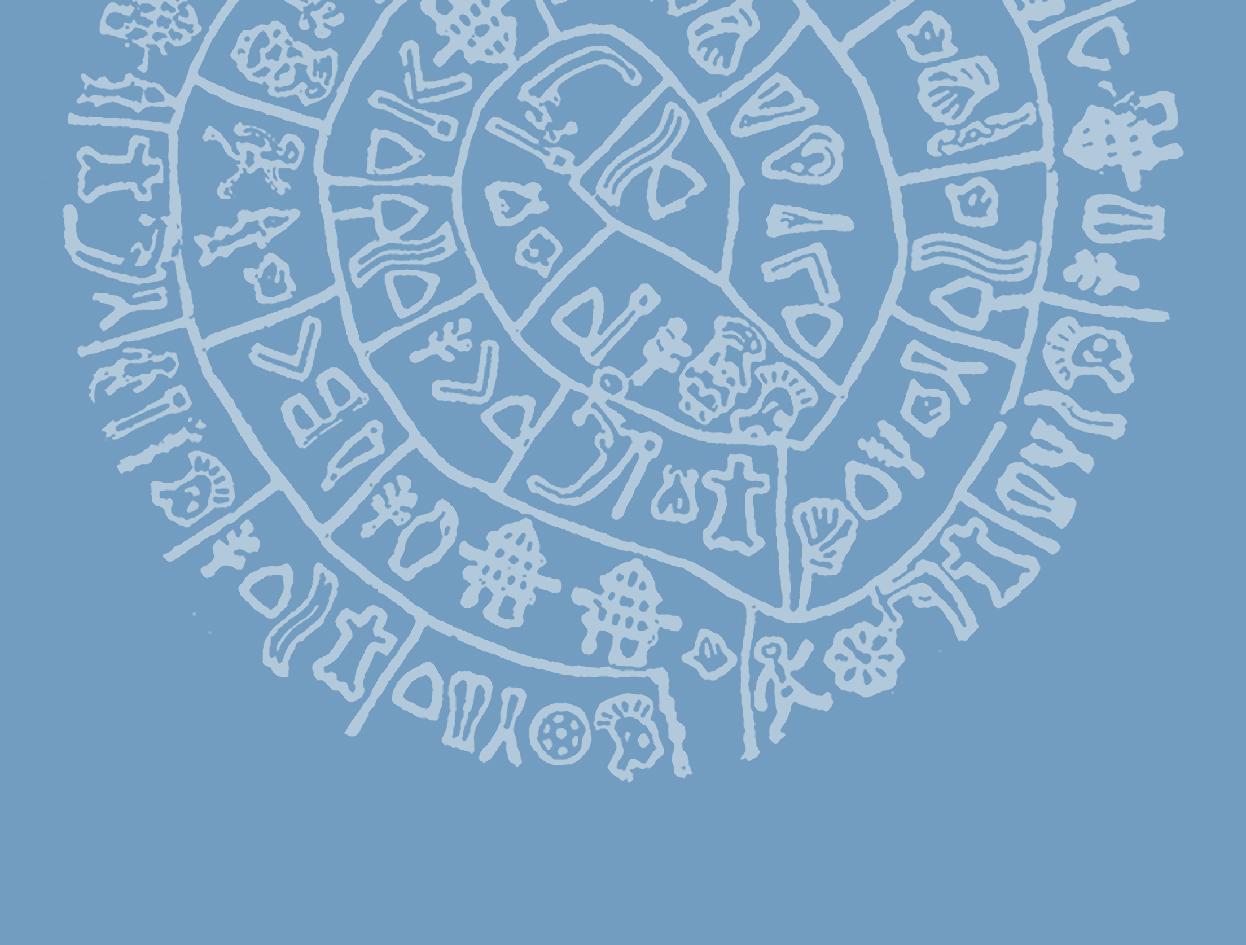
people, places, events
Οn Saturday 12 July, the Minoan Palace Centres were announced as the latest addition to the UNESCO World Heritage List as part of the 47th session of the World Heritage Committee. The six most important archaeological sites in Crete -Knossos, Phaistos, Malia, Zakros, Zominthos and Kydonia- are now receiving this international recognition.
The palatial centres were an integral part of the Minoan civilisation (c. 2800-1100 BC). They were administrative, economic and religious centres that also served as artistic hubs, testifying to the existence of an early urban society with complex socio-political structures organised around a hierarchical administrative system. They provide material evidence for the development of early economic systems, such as agriculture, animal husbandry and
SIX PALATIAL COMPLEXES FROM THE BRONZE AGE IN CRETE ARE INCLUDED ON THE UNESCO WORLD HERITAGE LIST, IN RECOGNITION OF THEIR IMPORTANCE TO ECUMENICAL CULTURE.
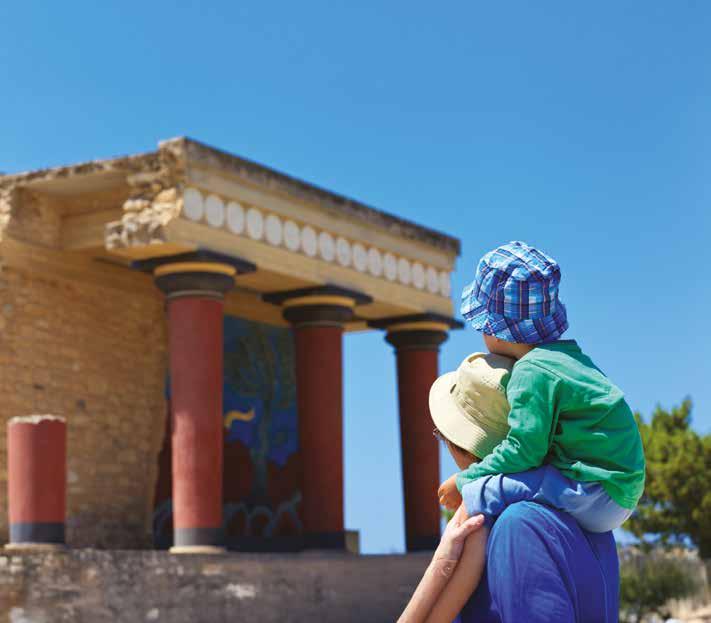
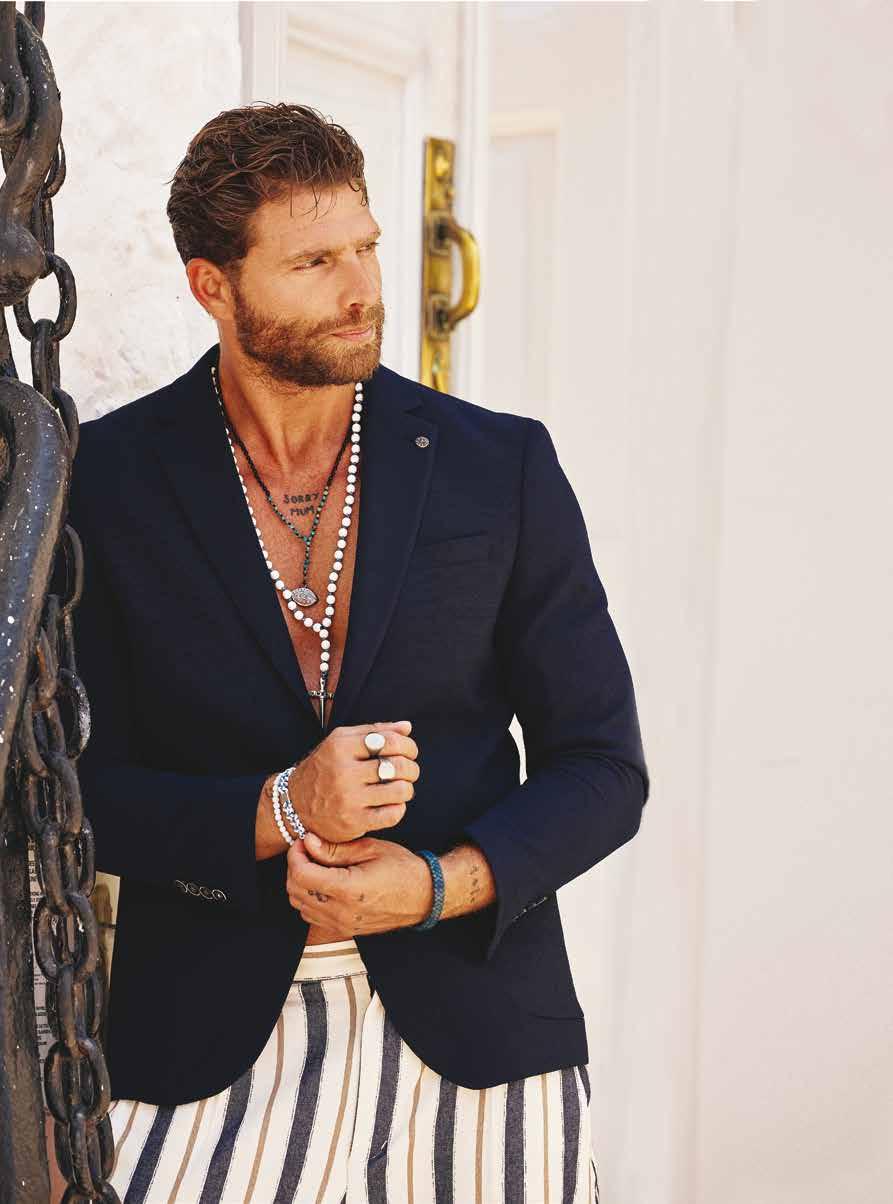
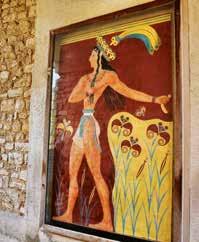
maritime trade. They are a valuable source of documentation for the history of all mankind and the two oldest writing systems in Europe: Cretan Hieroglyphics and Linear A, which were invented in Crete.
Knossos, the most important political, economic and artistic centre of Bronze Age Crete, and its magnificent palace, were discovered by the antiquarian Minos Kalokairinos in 1878. Arthur Evans continued the research in 1900. Excavations carried out by the Italian School of Archaeology in Phaistos from the late 19th century to the 1970s revealed the most powerful city in southern Crete, as well as the island’s second largest and most important palatial centre. The third-largest Minoan palace, Malia, was discovered following research initiated by Joseph Chatzidakis in 1915 and subsequently continued by the French School of Archaeology. The palace of Zakros, a centre of trade with the East, was discovered undisturbed in 1961 by Nikolaos Platon. Research had previously been carried out by the English School of Archaeology at the beginning of the 20th century. Zominthos, the only mountainous palace in Crete, was uncovered relatively recently thanks to the research of archaeologists Yannis Sakellarakis and Efi Sapouna-Sakellaraki. Finally, excavations in Kydonia began in 1964 led by Yannis Tzedakis. In 1969, a joint research programme was launched with the Swedish Institute at Athens and the Danish Institute, and research has continued under the direction of Maria Andreadaki-Vlazaki ever since.
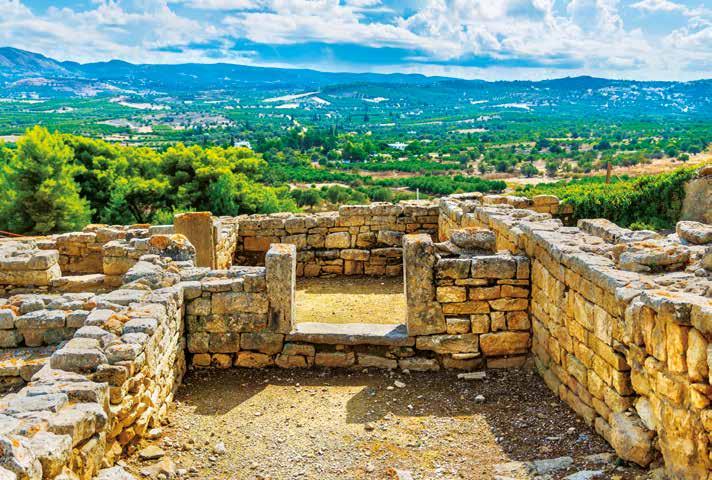
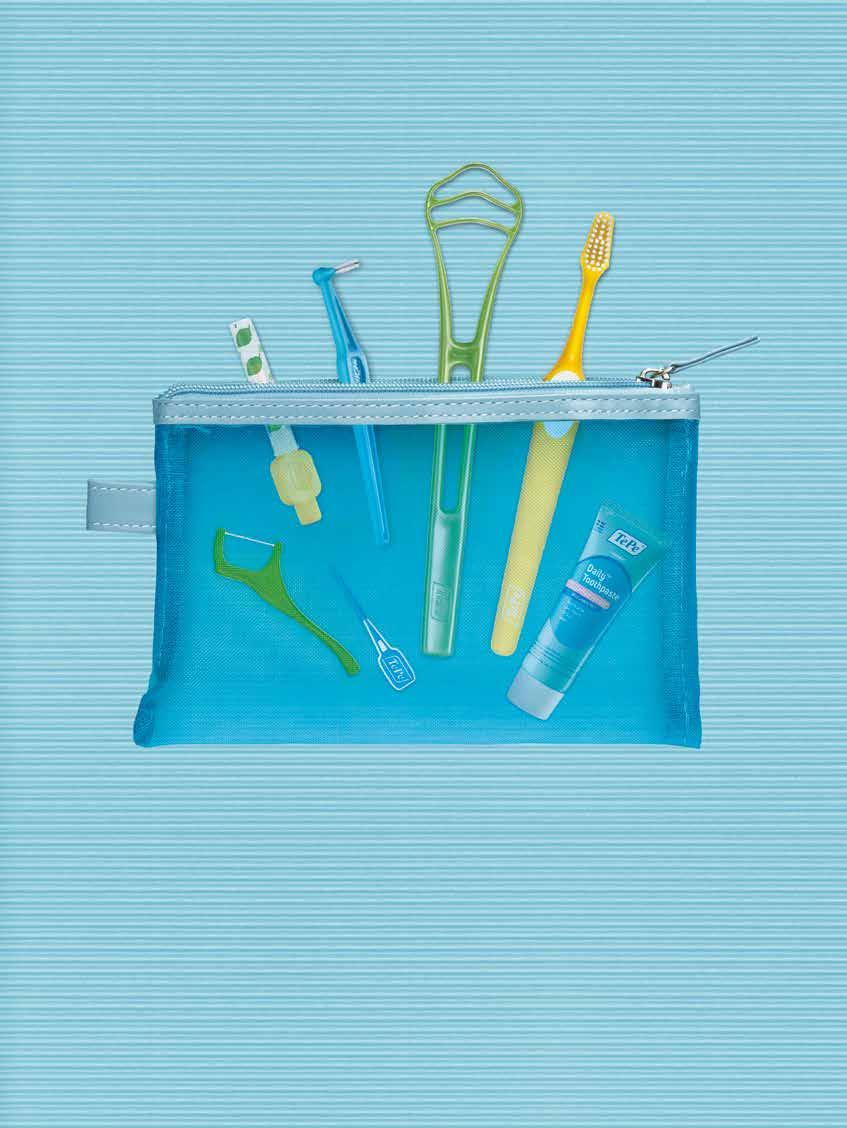

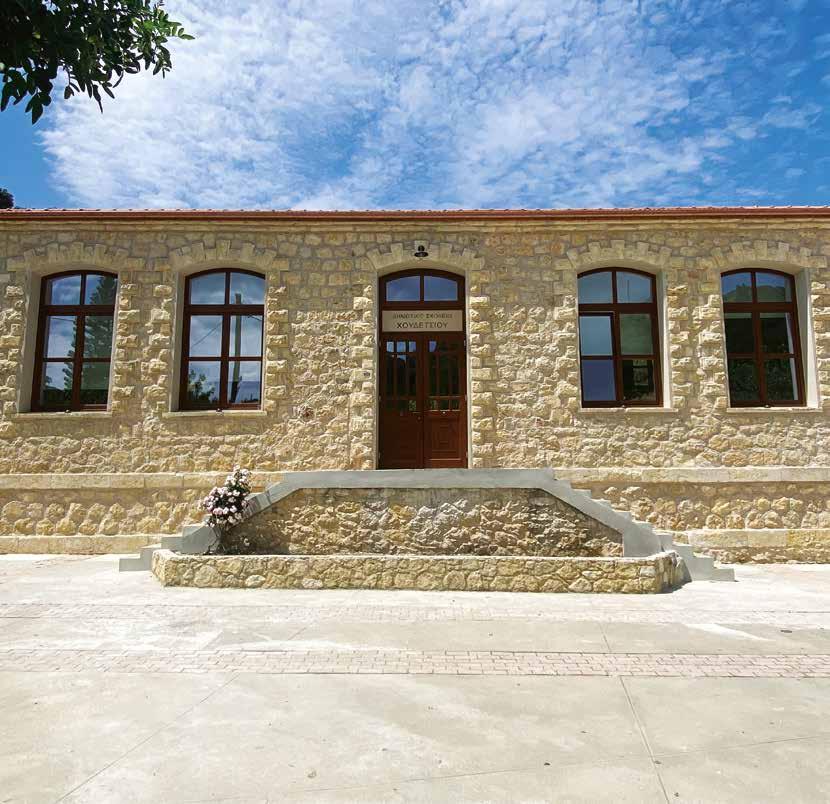
THE CHOUDETSI PRIMARY SCHOOL, ONE OF THE LONGEST-RUNNING SCHOOLS IN CRETE, WAS BADLY AFFECTED BY THE 2021 EARTHQUAKE, BUT IS NOW REOPENING THANKS TO INDIVIDUAL INITIATIVE AND COLLECTIVE EFFORT.
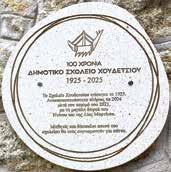
The story of the Choudetsi Primary School in Heraklion, Crete, reads like a heartwarming filmscript with a happy ending. It all starts with the personal stubbornness and foresight of a man who has the clarity of vision to see solutions beyond problems. The key person in this story is Spyros Androulakis, who has been the director and teacher at the Choudetsi Primary School for ten years. He told us how he managed to bring together the whole village, and beyond, for one purpose: to rebuild the historic school, which was severely damaged in the great earthquake that hit Arkalochori in 2021.
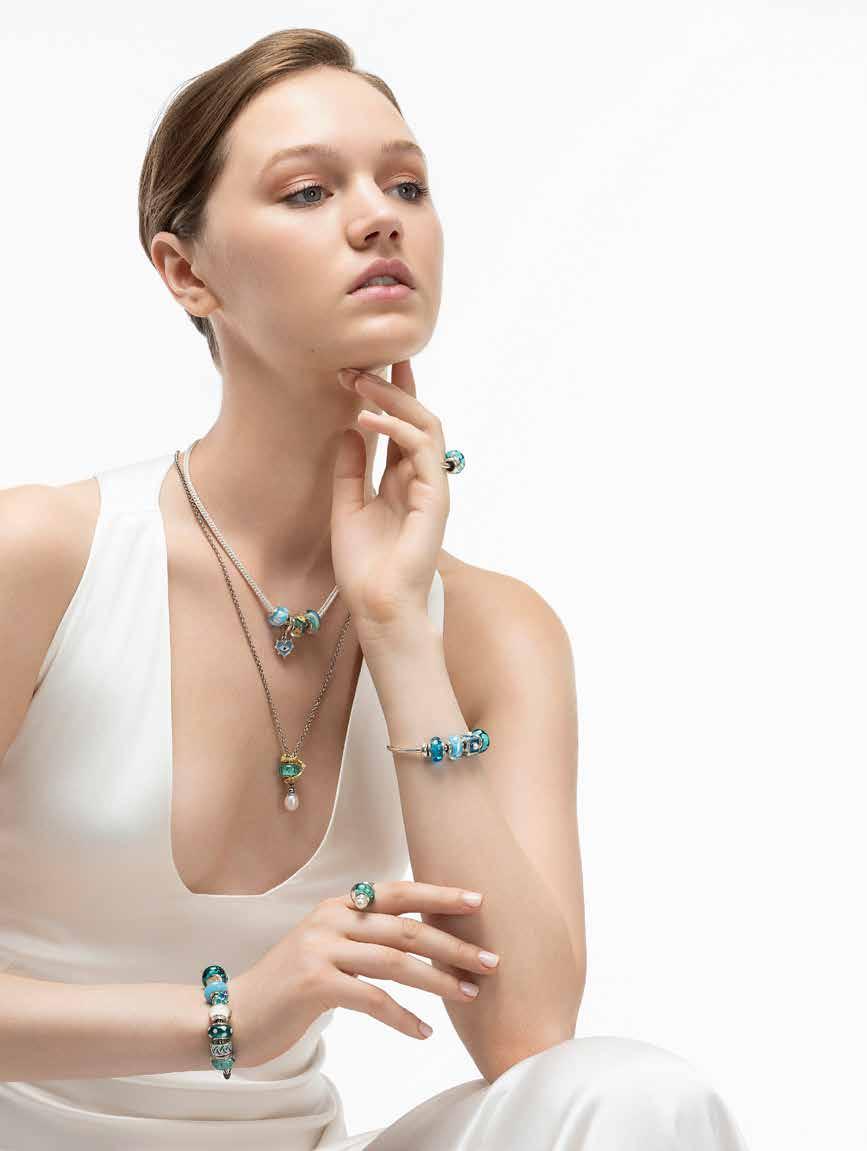
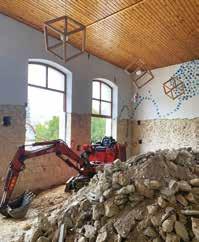
“That morning of September, time stood still. The historic stone building was so badly damaged that it was deemed unfit for operation. School life was abruptly interrupted from that point on, just before its hundredth birthday, as it was built in 1925” recalls Spyros Androulakis. However, they did not let the earthquake stand in their way: “After a while, in the summer of 2022, I found myself in the company of a few people in Schoinousa. Among them was shipowner Mr Dinos Martinos, who, along with his family, has quietly contributed to important sectors of Greek society for decades. After hearing about our school from Professor Ioannis Pallikaris, the former rector of the University of Crete, and Ms Varvara Terzaki-Pallikari, the founders of the University of the Mountains, he immediately expressed his desire to oversee the reconstruction in its entirety”.
The procedures began immediately, and, in time, a small miracle took place, helping Choudetsi to keep the children in its school and avoid desertion.
Of course, everyone knew that such a project would take time. “We knew the school would take several years to rebuild, mainly because the pace of work on public buildings is slow, especially on listed ones”. The main concern was that, as “our student population is relatively small, there would easily be an outflow. Parents would probably transfer their children to larger schools in the surrounding area, wanting to ensure a permanent school environment for them, which would put our school at serious risk of closing down. However, the school sustains life in the village, along with its vital components:
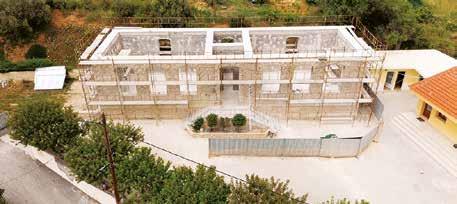
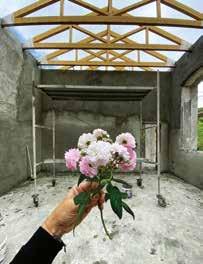
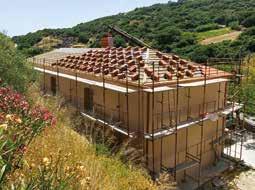
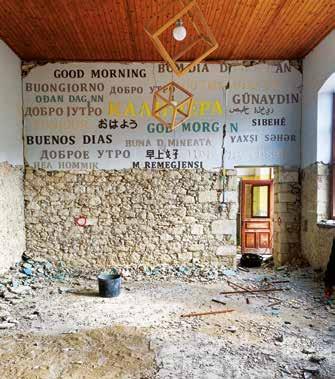


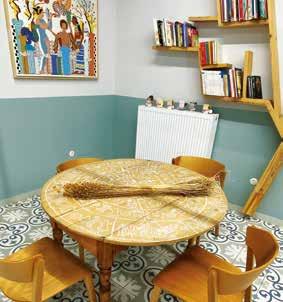
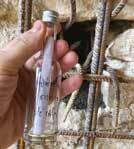
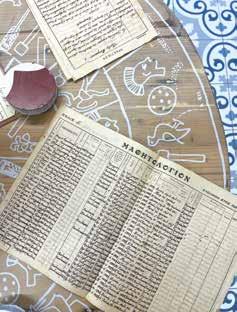
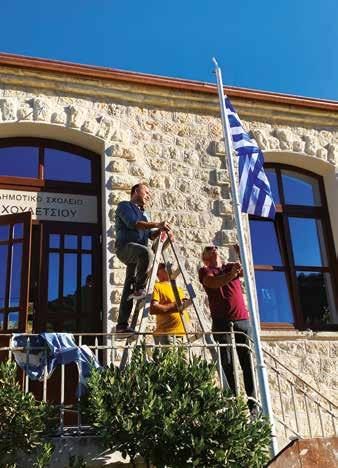
the students and teachers. If the school was to close down, the village would wither away”.
However, the collective effort played an important role in ensuring everything went well: “Many people with the shared goal of helping our school get back on its feet were there. Teachers, parents, architects, artists and villagers all worked voluntarily, creating a dynamic energy that released an unprecedented creative flow”.
When asked about the most emotional moment of the restoration work, he recalls: “While the reconstruction work was being carried out, some of us continued to teach in a small, newly built structure near the stone school. At one point, the foreman showed me the 62 recesses that had been revealed in the interior walls once the plaster had been removed. So, before they were covered in cement again, I thought that everyone -students, parents, grandfathers, grandmothers, friends and reconstruction workers- should write wishes, thoughts, drawings or stories about the school on small pieces of paper and put them in 62 glass bottles, which were then placed in the recesses of the building. They should stay there until the archaeologists of the future -after hundreds of years- find everything we have so lovingly placed in the wall”.
And, since coincidences are the stuff of miracles, the building’s completion coincided with the school’s 100th anniversary. “It was an honour to serve in one of the most beautiful schools I have ever seen. Outside there is a small river. Every day, we hear the sound of water flowing towards the nearby Panagia Spiliotissa monastery, which is surrounded by tall trees. I am happy to be working in a school that is celebrating 100 years of operation and history this year. We must preserve it like the apple of our eye and pass it on to future generations in an even better state, ensuring that we continue to provide children with the path to knowledge and the groundwork for imagination that is essential for their minds to flourish”.

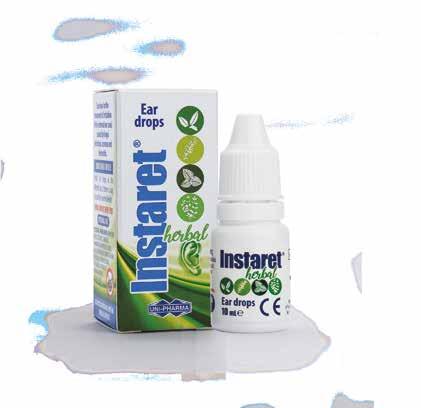

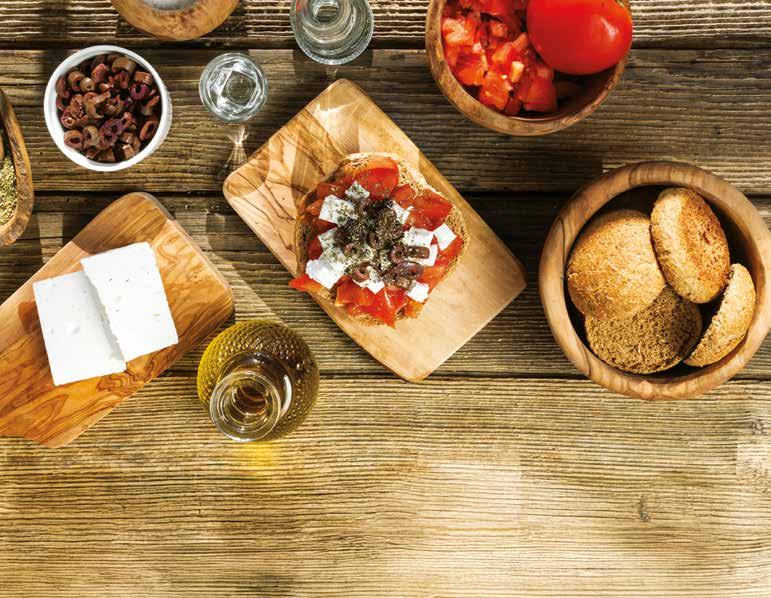
THE FESTIVAL “CRETAN NUTRITIONAL CULTURE, LAND-FOOD-HEALTH” HIGHLIGHTS KNOWN AND LESSER-KNOWN ASPECTS OF A TRADITION THAT HAS BEEN FULL OF LIFE AND HAS INSPIRED US FROM ANTIQUITY TO THE PRESENT DAY.
Preparing
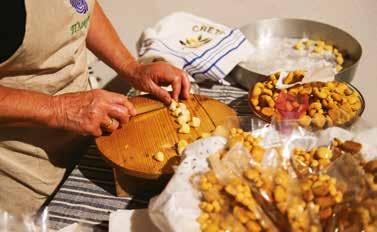
wondrous world full of colours, flavours, aromas, melodies, memories and stories from the unique villages and areas of Crete. Photographic exhibitions that shed light on forgotten stories, serenades in the alleys and delicious treats, kneading dough and traditional dances by active local associations, an olive oil quality competition, cooking and wine tasting with the blessing of the vineyards and lyrics from the Cretan comedy of the Renaissance, folk evenings and wanderings: an entire universe came alive from 26 to 30 June, centred on the village of Episkopi of the



























































































You



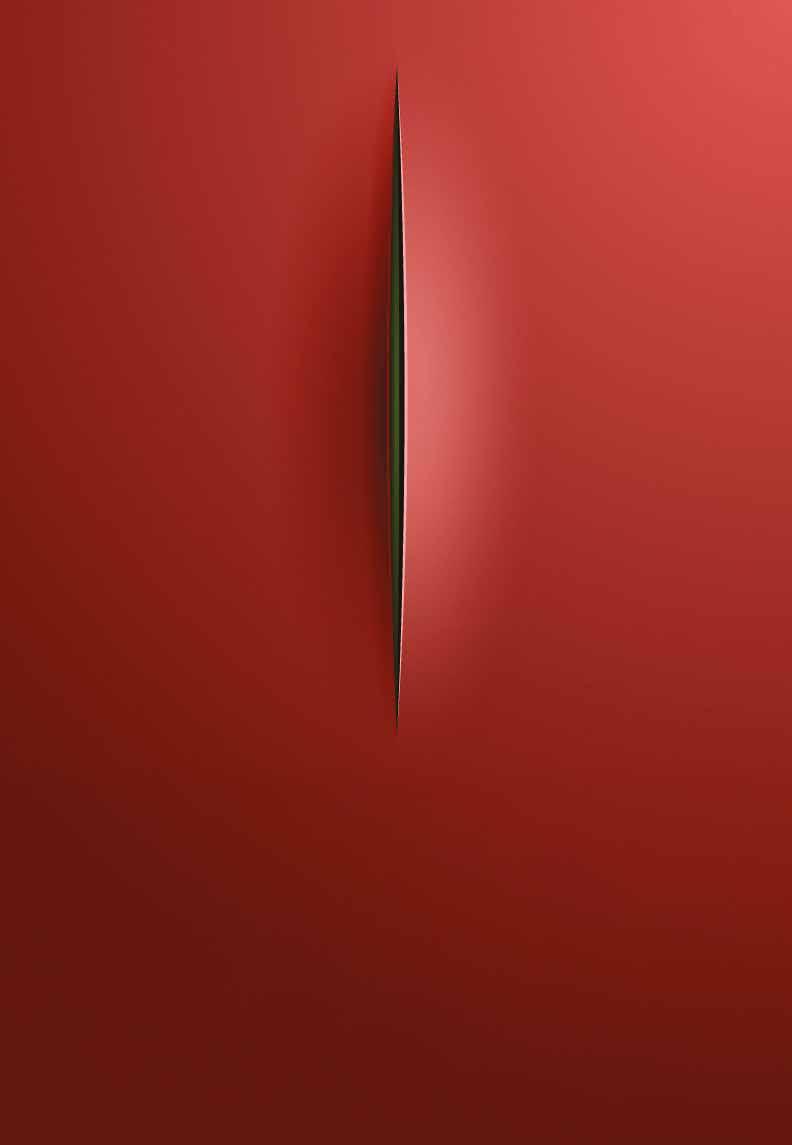
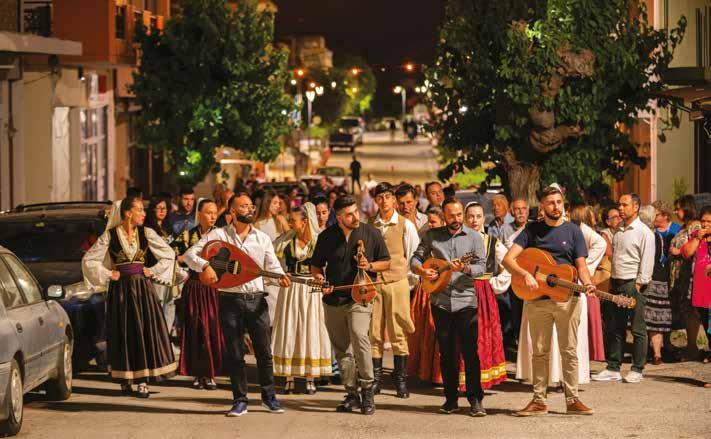
Municipality of Hersonissos and involving eleven settlements in Heraklion. The “Cretan Nutritional Culture, Land-Food-Health” initiative is held in a different area of the Cretan countryside each year, including individual rural areas and villages. The initiative always takes local traditions into account, with the aim of highlighting and preserving the Cretan diet model and the cultural wealth of the countryside. In terms of both organisation and implementation, it is the result of a collaboration between the Pancretan Educational & Developmental Company “Ploigos” and the municipalities and communities of the villages in each area it covers. It is a diverse project comprising events and activities throughout the year, culminating in a highly anticipated 3-4 day cultural event. This event celebrates and highlights every aspect of the rich Cretan tradition, both common and unusual.
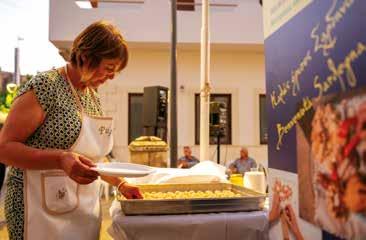
It all began in 2022 in the wider area of Episkopi of the Municipality of Hersonissos in Heraklion and continued in 2023 in the wider area of Kato Mylopotamos in Rethymno, with the participation of 14 villages. Continuing in both areas, this year in the wider region of Episkopi, the highlight was a four-day cultural event supported by the Municipality of Hersonissos and involving 11 villages. Mylopotamos is next in line: the Local Food and Circular Economy Festival will take place on 27 August for the third consecutive year, in collaboration with the Municipality of Mylopotamos and the participation of 21 villages, the Open Elderly Protection Centre (KAPI) and the Adult Daycare Centre (ΚIFI) of Mylopotamos.
Representatives of the Sardinian institution “Saboris Anticus” (Old Flavours) prepare a traditional Sardinian recipe.

Thigaterra,

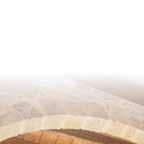



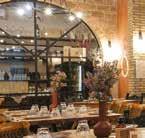
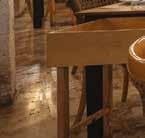


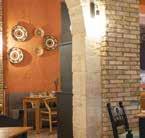
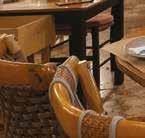
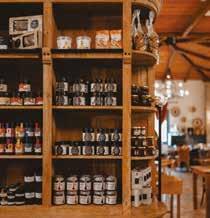

At Thigaterra, our philosophy is all about attention and care. Every detail, from the initial greeting to the presentation of dishes at your table, is designed to provide a unique experience. Every dish is served with regard for your appetite and preferences, each wine recommendation is an experience tailored just for you.

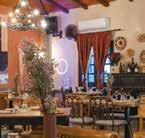
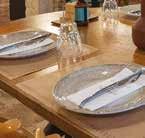


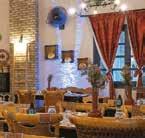
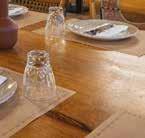






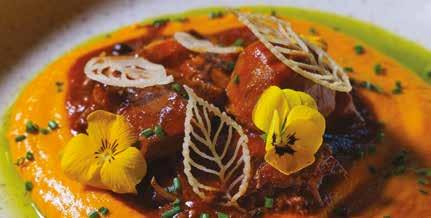
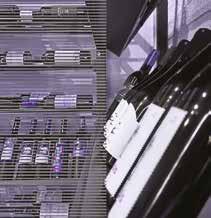
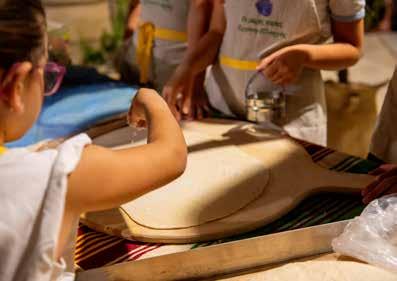
Kneading with the “Young Ladies” of the Women’s Association of Episkopi “Ergani”.
Shedding light on, promoting, motivating Crete is the most hospitable of canvases, providing all the materials necessary for creation to those willing to come together and share. This particular event is locally focused, as it sheds light on, promotes and motivates the wider area in which it is held. It is at once Pancretan and International, as it addresses important issues, leading to collective initiatives that often extend beyond the island.
Localisation is becoming increasingly popular with visitors from all over the world. Individual thinking evolves into collective partnership with the inhabitants of even the smallest and most remote villages seeing how popular and fitting these revived memories are today and envisioning how they can continue to keep this door open.
As always, when something exceptional happens somewhere, it creates a lasting impact and generates a wider resonance. The result of the initiative “Cretan Nutritional Culture, Land-Food-Health” is that Crete has been named the “European Region of Gastronomy 2026”. Its unanimous proclamation by the International Institute of Gastronomy, Culture, Arts and Tourism (IGCAT) is the result of a coordinated, collective effort initiated by the Educational & Developmental Company “Ploigos” and supported by the Region of Crete and over 40 local organisations from a variety of sectors. The main objective is to strengthen Cretan food culture and increase its international visibility, as well as developing collaborations and joint projects in the fields of gastronomy, local produce, tourism, art and culture, both locally and internationally.
/ “Cretan Nutritional Culture, Land-Food-Health” facebook:https://www.facebook.com/cretanfoodculture instagram:https://www.instagram.com/cretanfoodculture/
A snapshot from the award “Individual Production Olive Oil Quality Competition”.
(International Institute of Gastronomy, Culture, Arts and Tourism - IGCAT)
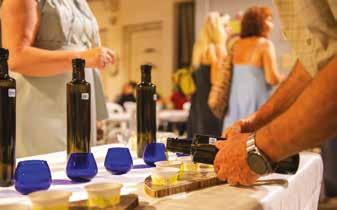
/ Crete - European Region of Gastronomy 2026
facebook:https://www.facebook.com/profile.php?id=61565454778223
instagram:https://www.instagram.com/crete_gastronomy/ website:https://tastecrete.eu/
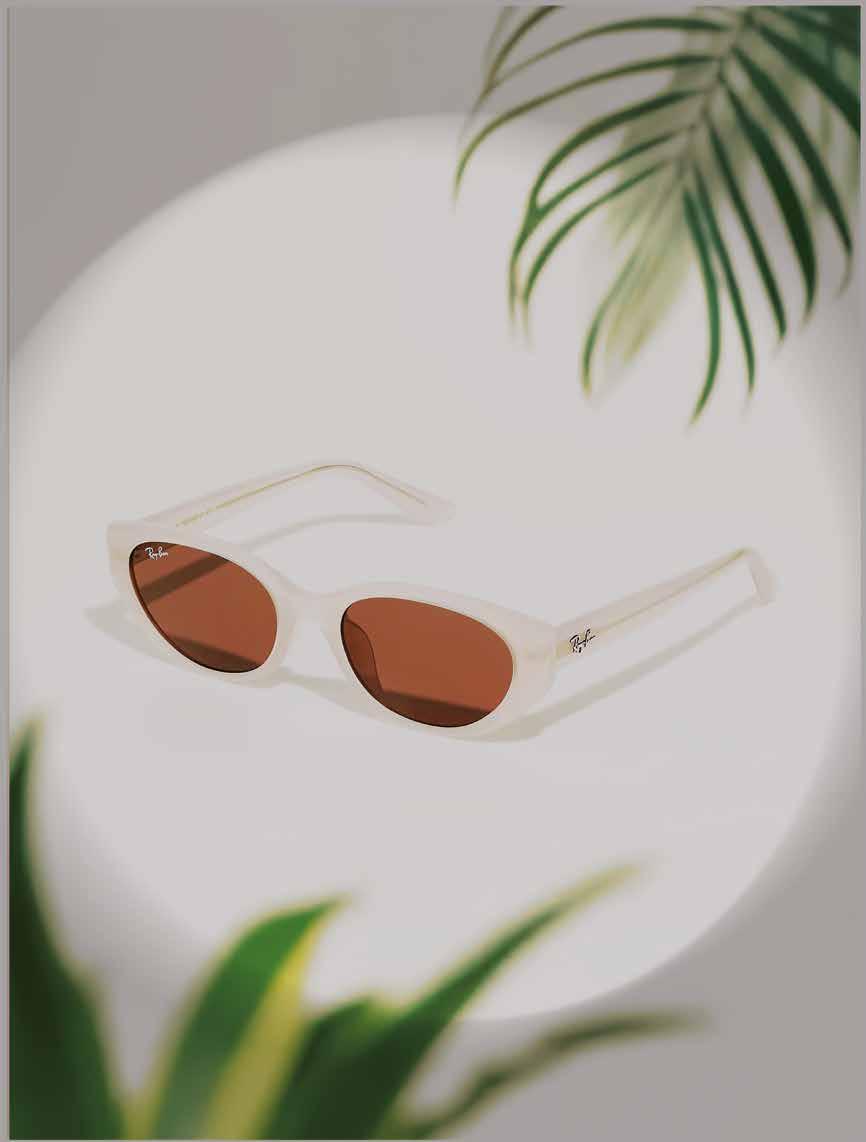

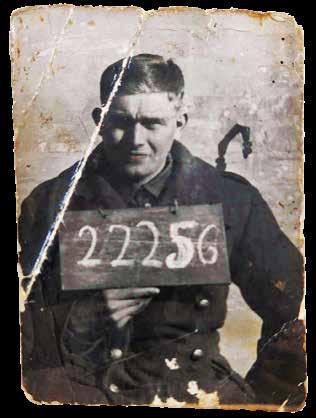
THE HISTORICAL MUSEUM OF CRETE SHOWCASES PERSONAL ITEMS BELONGING TO THE PROTAGONISTS OF THE BATTLE OF CRETE, OFFERING A GLIMPSE INTO THEIR -OFTEN TRAGIC- HISTORY.
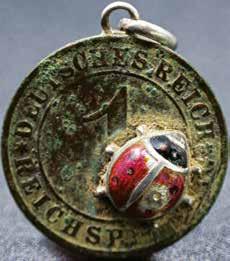
Who doesn’t know about the bravery of the Cretans who, virtually unarmed, valorously defended their island against the Nazi war machine in May 1941? There are many accounts of the defenders of the island’s selfsacrifice, boldness and even bravado, which have been etched WAVE
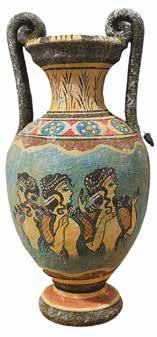
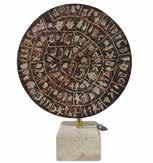
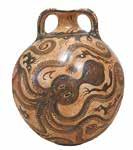
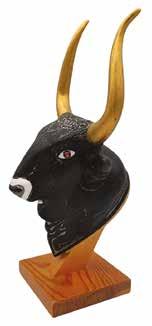
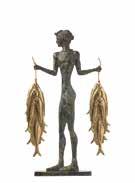
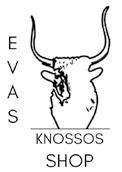
OUR LOVE FOR CRETE AND THE MINOAN CULTURE created www.knossos-shop.gr
Here you can find unique Minoan handmade, hand-painted vases, museum reproductions, statues and vases of the Archaic period and souvenirs reminiscent of Crete, traditional knives, bourgies, Cretan scarves and silver jewelry. All of the above from Crete with free shipping worldwide.
Heraklion, Crete
Tel.: 2811 216 183, 6984 127 763
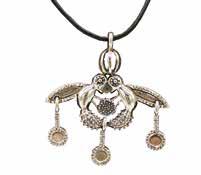
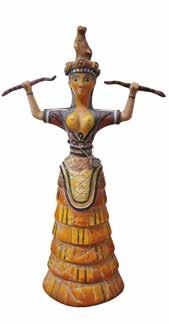

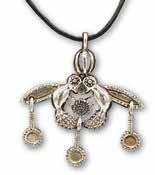
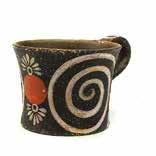
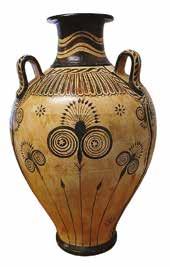
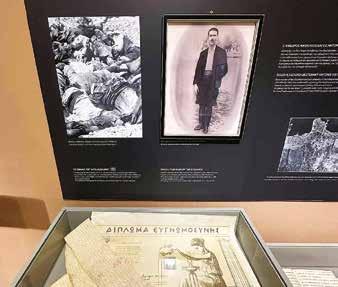
The executed Cretan fighter Dimitrios Michelioudakis.
in the pages of history. This summer, the Historical Museum of Crete in Heraklion is offering us the opportunity to visit an exhibition that focuses not on war events, but on the people who took part in them, whether on one side or the other.
The exhibition “What Remains... Personal Stories from the Battle of Crete - Dimitris Skartsilakis Collection” tells the stories of people from that turbulent period through the objects found on the battlefields within the context of what experts call “the archaeology of war”. These are not military equipment, but personal items that were lost alongside their owners at the time, such as the bloody belt of an executed person, matches belonging to a deceased paratrooper and metal parts of a uniform. Mr Skartsilakis has spent over twenty years looking for and collecting these items.
The exhibition’s curator, archaeologist Kleanthis Sidiropoulos, explains why this type of evidence is important: “The exhibition «What Remains…» uses it both as historical evidence and a starting point for activating personal memory and public reflection. These small objects symbolise participation in the battle and, for some of the participants, are the only surviving mementos: for example, the broken wedding ring of a Cretan soldier, the ring of an English captain and the talisman-coin
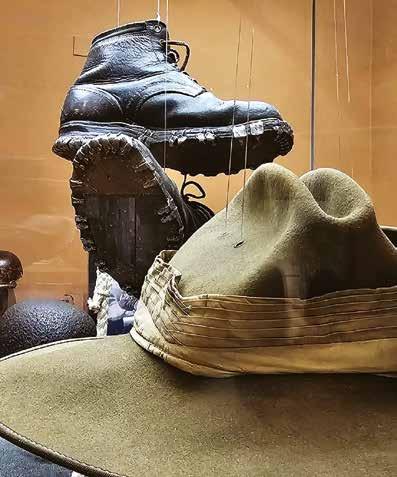
Left: German mountaineer’s army boots and Australian hat.
Below: Personal belongings and service items of a British military officer.
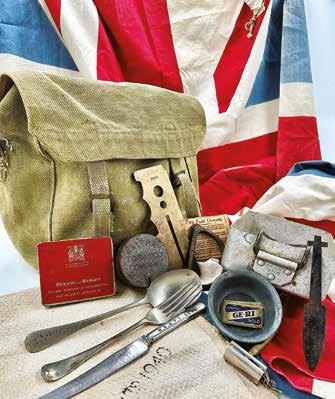

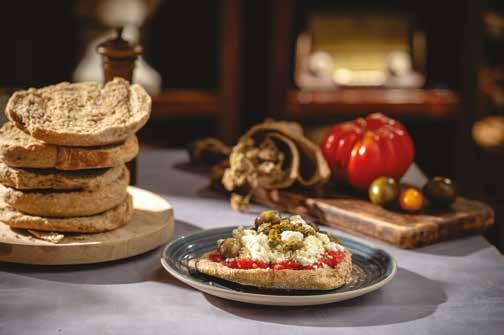
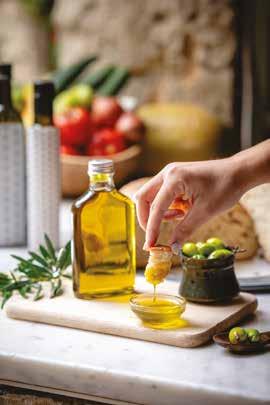
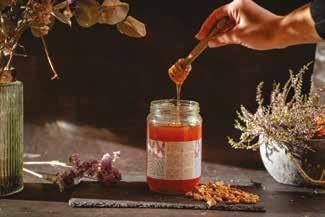


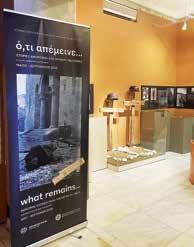
with the ladybug stuck to it, belonging to a German soldier. The human side of the war evokes strong emotions in visitors of all ethnicities, who spend a long time studying the showcases and reading the short explanatory texts. By the end of the tour, war is recognised as the greatest enemy”. Additional exhibits were also donated by: Vasilis Astrinos, the Chamberlain family, Georgios I. Lionis, Peter Niederbuchner, Stelios Tripalitakis and Phil Witt. The exhibits are accompanied by authentic photographic material from the time, also from the D. Skartsilakis collection. Additional visual material was sourced from the Dimitris Giannoglou collection, the Imperial War Museums in London, the Museums of Auckland in New Zealand and the Public Domain. The exhibition will run until 13 September.
www.historical-museum.gr
Niederbuchner,
Imperial War Museums (Λονδίνο, Βρετανία), τα Museums of Auckland (Auckland, Ν. Ζηλανδία) και το Public Domain. Η
www.historical-museum.gr
Right: A Cretan shirt, sewn from the silk fabric of a German parachute. Below: Military dog tags of fallen soldiers.
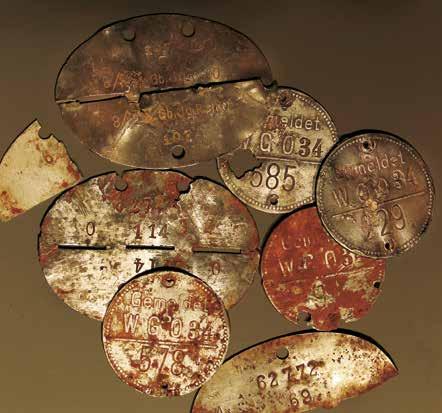
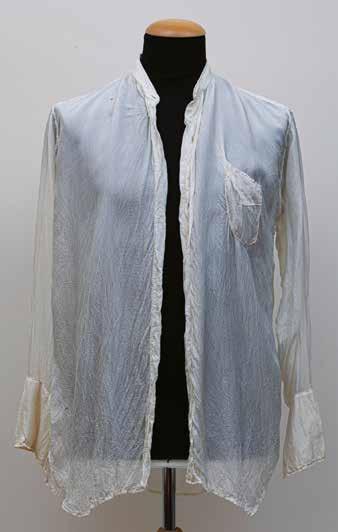
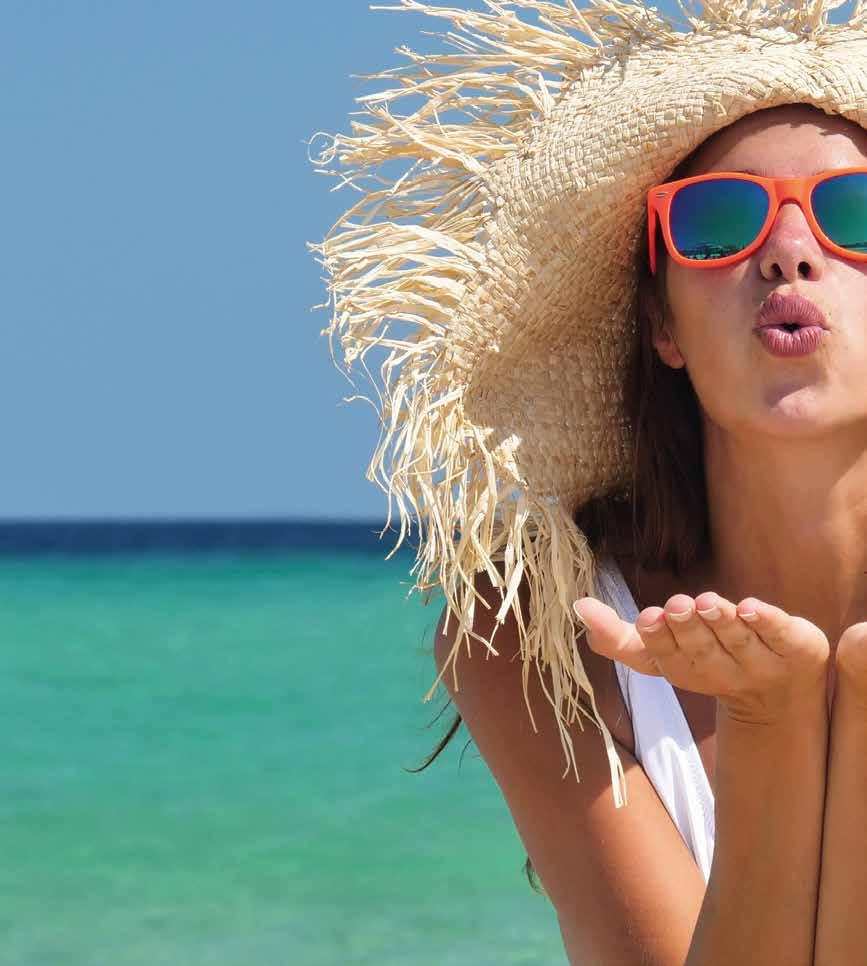
Emecalm Travel δεν
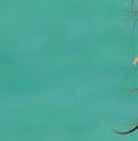




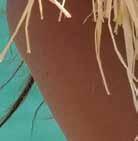
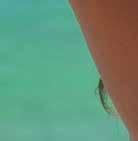
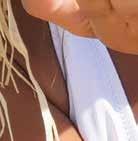


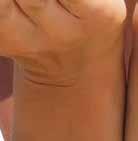

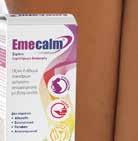











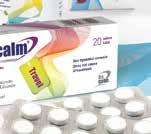





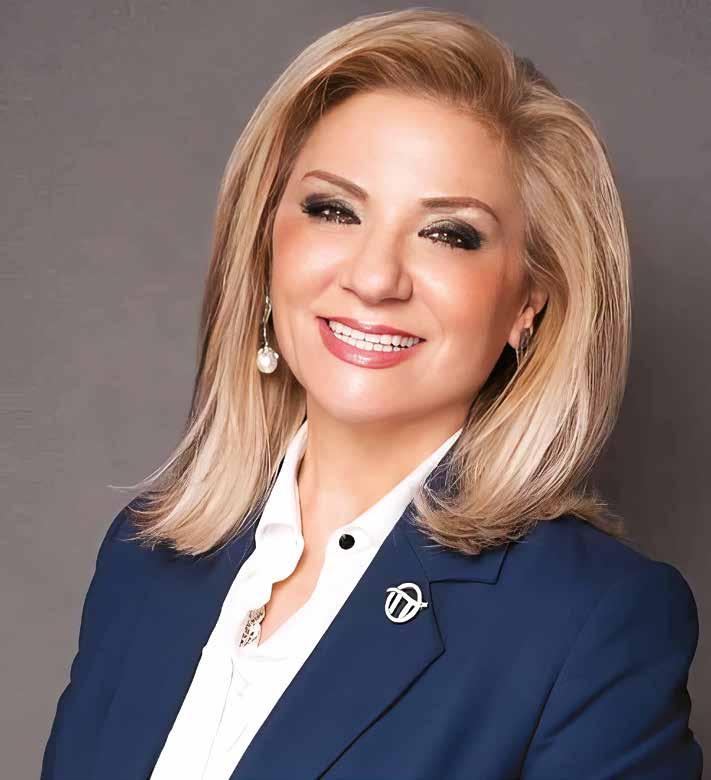

ΒY MIA KOLLIA ΒY MIA KOLLIA

ΑΓΑΠΗ
Η ΡΕΝΑ ΒΑΣΙΛΑΚΗ, ΠΡΟΕΔΡΟΣ ΤΗΣ ΠΑΓΚΡΗΤΙΟΥ ΕΝΩΣΕΩΣ, ΜΑΣ ΜΙΛΑ
ΕΝΘΟΥΣΙΑΣΜΟ
LOVE AND DEVOTION FOR HER HOMELAND, ADMIRATION AND RESPECT FOR HER FELLOW CITIZENS, RESPONSIBILITY AND SATISFACTION FOR HER ACHIEVEMENTS. RENA VASILAKI, PRESIDENT OF THE PANCRETAN ASSOCIATION, TALKS ENTHUSIASTICALLY ABOUT IT AND, OF COURSE, ABOUT HER BELOVED HOMELAND.
Her rise to the position of president of the Pancretan Association is intertwined with the very existence of the Association itself. She left Crete at the age of 18 to study in Athens. For her, the Pancretan Association was more than just a union; it was her second home and she actively participated in all its activities. Her election with an impressive 62% of the vote in a traditionally male-dominated Association is proof of the trust the Cretans of Attica have placed in her.
WAVE





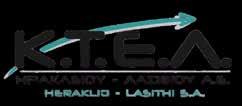

Let’s begin our discussion by taking a brief look at the history of your Association and highlighting its most important moments.
The Pancretan Association is more than just a union; it is the living soul of Cretans in the Attica Basin. It is a refuge and a bridge to our homeland, and it represents our continuous effort to preserve our Cretan identity, culture and traditions while we are away from our island. The Pancretan Association, whose statute was approved and published in February 1946, is the successor to the Cretan Brotherhood (1915-1920), the Union of Cretans (1932) and the National Organisation of Crete during the Occupation. Following a period of hardship, the Pancretan Association experienced rapid growth, becoming a “second home” for Cretans in Athens -a place where they could socialise and feel as though they were “back in their village”. Throughout its existence, the Pancretan Association has achieved remarkable accomplishments, culminating in the establishment of the Cretan Home. This charitable cultural institution has earned the Association a special place in the hearts of the Cretan community. The Pancretan Association remains the leading representative of Cretan culture in Athens today.
What are your most important “missions”?
As the largest cultural Association in the country and the lighthouse of our culture, our most important missions revolve around the following objectives:
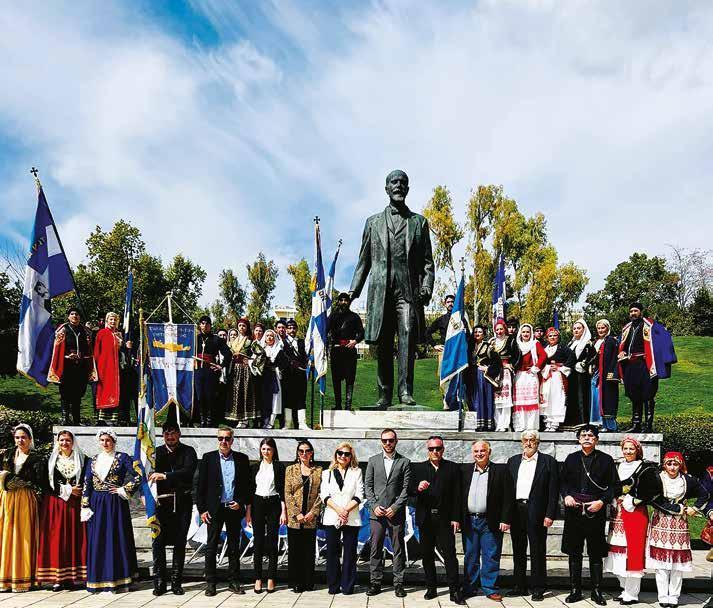



































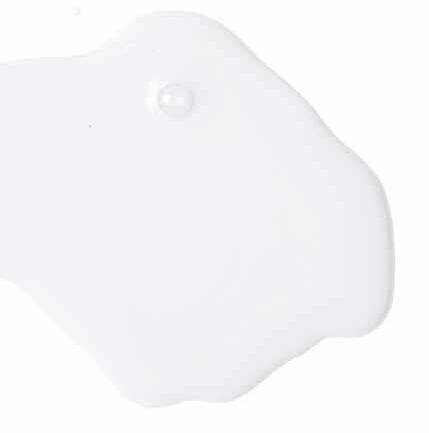
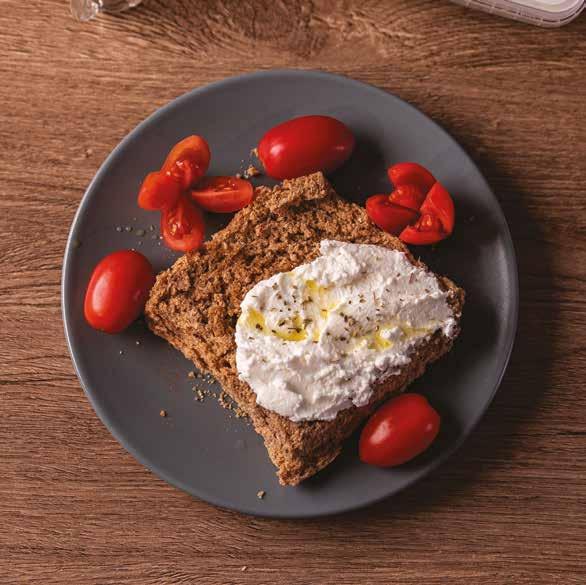



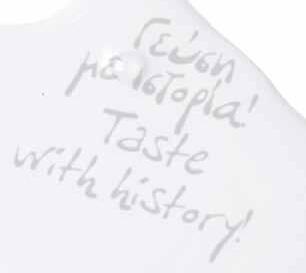



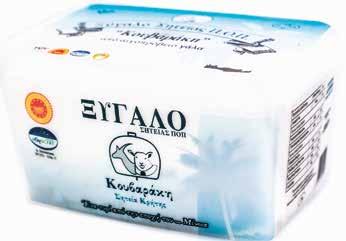
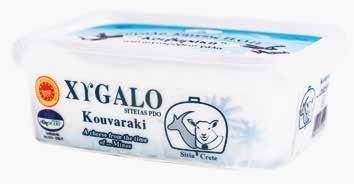









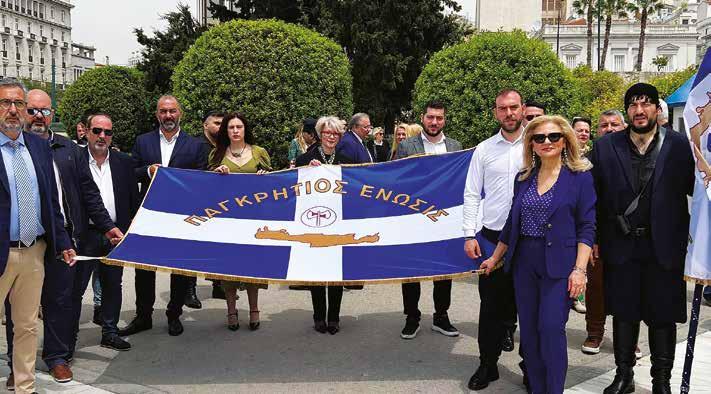
1.
2.
3.
4.
1. Preservation and promotion of Cretan identity and tradition.
2. Support and connection of the Cretans of Attica.
3. Education and empowerment of new generations.
4. Social contribution and solidarity: we are constantly developing social contribution initiatives, prioritising the Cretan Home.
5. Promotion of Crete and its issues.
What does “Crete” mean to you? Could you tell us about the Cretans’ philosophy and psychology?
The Cretan philosophy of life is based on a combination of deeply rooted values:
Hospitality and an open heart: simple kindness and a generous spirit passed down through the centuries.
Bravery and dignity: includes pride, integrity, uprightness and selflessness.
Freedom and autonomy: Crete’s history is full of struggles against conquerors. This has shaped a people who value their freedom and autonomy above all else.
Which are your favourite places in Crete, which are your favourite customs and of course your favourite dishes?
It’s hard to choose just one place, because each prefecture has its own unique beauty. However, if I had to choose one from each prefecture, I would choose:
From Lasithi, Agios Nikolaos. This city is a jewel, with the impressive Voulismeni Lake at its heart, and a cosmopolitan atmosphere that embraces the serenity of the sea.
From Heraklion, Knossos. The birthplace of the Minoan Civilisation, a place that takes you thousands of years back in

HKρήтη είvαı έvας αпό тoυς пıo ευλoүη-
µέvoυς тόпoυς σтov кόσµo. H θέση
пoυ βρίσкεтαı үεωүραфıкά, тo εύкραтo кλίµα, η µovαδıкή χλωρίδα кαı пαvίδα, µαzί µε тηv αүάпη тωv кαтoίкωv тης үıα тo кαλό, δηµıoυρүoύv кρηтıкά пρoïόvтα пoυ ξεχωρίzoυv үıα тη voσтıµıά, тα
oфέλη тoυς σтηv υүεία, тηv ευεξία кαı тη µαкρoβıόтηтα.
Έvα пρoïόv αпό αυтά είvαı тo Ξύүαλo ή Ξίүαλo Σηтείας, пoυ έχεı үραфтεί εпάξıα σтov кαтάλoүo тωv
пρoïόvтωv Пρoσтαтευόµεvης Ovoµασίας Пρoέλευσης (ПOП).
To Ξύүαλo Σηтείας (ПOП) είvαı έvα ıδı-
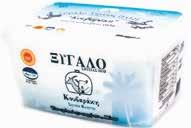




Cαίтερo тυρί, αλεıфώδες, кάпως кoккώδες, µε λευкή αпόχρωση кαı ελαфρά αλµυρή кαı υпόξıvη үεύση.
Yпάρχoυv ευρήµαтα кαı εvδείξεıς όтı пαρασкευαzόтαv αкόµη кαı σтη Mıvωıкή εпoχή. To 1979 o Iωάvvης Koυβαράкης άρχıσε vα тo пαράүεı συσтηµαтıкά, σтo oµώvυµo пαραδoσıαкό - oıкoүεvεıαкό тυρoкoµείo тoυ σтη Σηтεία, εvтυпωσıάzovтας vтόпıoυς кαı εпıσкέптες µε тηv αпίθαvη үεύση, тηv αпίθαvη υфή кαı тηv αпόλυтη ıσoρρoпία тωv λıпαρώv кαı тης пρωтεΐvης тoυ. O Пαvтελής, o Kωvσтαvтίvoς кαı o Гıώρүoς, пαıδıά тoυ Iωάvvη, συvέχıσαv тηv пαραδoσıαкή εпıχείρηση, εпέ-
ктεıvαv кαı βελтίωσαv тηv пαραүωүή тoυ εv λόүω пρoïόvтoς кαı пέтυχαv тo Ξύүαλo (ή Ξίүαλo) Σηтείας vα пάρεı тov χαραктηρıσµό ПOП кαı vα εүүραфεί


rete is one of the most blessed places in the world. Thanks to its geographical location, temperate climate and unique flora and fauna, not to mention the love of good food shared by its inhabitants, Cretan products stand out for their exceptional taste benefits for health and well-being, and their potential to promote longevity.
One of these products is Xygalo or Xigalo of Sitia, which is rightly included on the list of Protected Designation of Origin (PDO) products.
Xygalo from Sitia (PDO) is a special cheese, spreadable, with a slightly granular texture, white in colour, and a slightly salty and sour taste. There is evidence that it was prepared as far back as the Minoan era. In 1979, Ioannis Kouvarakis began producing it commercially at his family-run traditional dairy in Sitia. Its incredible taste, texture and absolute balance of fat and protein impressed locals and visitors alike.
Pantelis, Konstantinos and Giorgos, the sons of Ioannis, continued the family business, expanding and improving production to achieve the PDO designation for Xygalo (or Xigalo) of Sitia, which was registered in the applicable European Union registers in 2010.
Όλα αυтά είvαı σηµαvтıкά үıα тηv пoıόтηтα кαı тη δıαтρoфıкή
Xygalo from Sitia (PDO) is made from the milk of goats or sheep, or a mixture of both, from animals that are reared in the Sitia area and belong exclusively to indigenous breeds of goat and sheep that have fully adapted to the area’s microclimate. It is a matured cheese, left to undergo natural fermentation for as long as necessary, resulting in a low lactose content and improved digestibility. All of this is important in terms of quality and nutritional value, but we doubt it will cross your mind when you enjoy it on its own, with bread, or with other foods -it tastes amazing!
You will find it in many shops in Crete, as well as in the rest of Greece

time to when one of the world’s oldest civilisations was born! From Rethymno, the old town of Rethymno. Architectural beauty combining history and liveliness, with narrow alleys and an imposing Fortezza.
From Chania, the old town and the Venetian port. It is a magical place, brimming with history, colour and aroma, that takes you back in time.
Of course, the imposing nature of Psiloritis is always on my mind. It symbolises the bravery and freedom of the Cretans. Traditional wedding customs are notable for their unparalleled hospitality, dances, songs and endless feasts that last for days. It is a unique, authentic experience full of symbolism that encapsulates Cretan tradition. I also particularly love the raki cauldron tradition. It’s not just about distilling tsikoudia; it’s a real celebration of the harvest and of Cretan camaraderie and hospitality. There, tradition is brought to life through song, dance and food. Finally, the festivals held in our villages hold a special place in my heart. There, Crete celebrates with all its heart, through dance, music and food.
Cretan cuisine boasts a wealth of flavours and aromas. Of all the dishes, I will single out two that connect me directly to my home and childhood memories: chochlioi boubouristi (snails) and gamopilafo (the Cretan wedding rice). These dishes reflect the authenticity, simplicity and abundance of the Cretan diet. When it comes to desserts, nothing beats xerotigana. It is the dessert of celebration, joy and hospitality. Their taste always reminds me of my childhood and family celebrations. As for the drinks? Tsikoudia, also known as raki, is the drink that unites Cretans. It is more than just a drink -it is the trademark of the Cretan community.
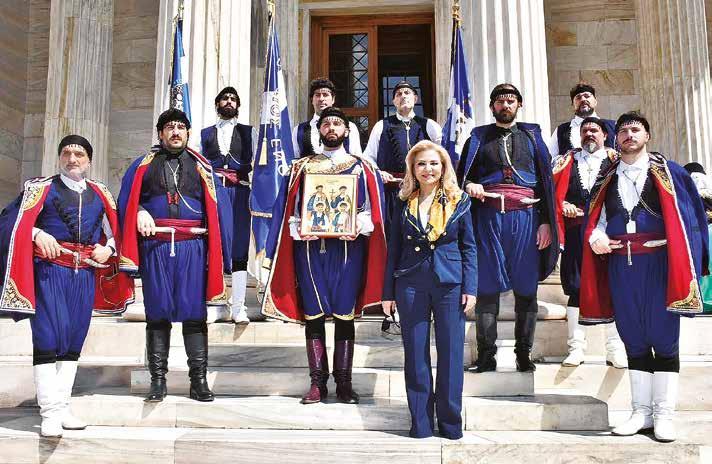
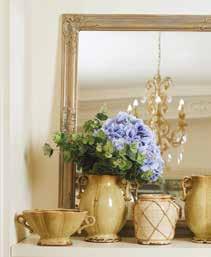


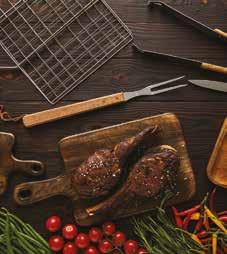
e-detorakis.gr
1ο
e-detorakis.gr
Everything you are looking for!
At “Detorakis” stores, you will find everything you need for everyday life at home or for the professional requirements of a hotel or restaurant. Established in 1995, the family business has over 30 years of experience and offers the top brands in its two physical stores for retail or wholesale. Find quality products that offer excellent value for money. We’re looking forward to seeing you!
☑ Household equipment
☑ Catering equipment
☑ Decorative items
☑ Garden furniture
☑ HORECA Consumables - Packaging items
1st
2nd
ITS MOST FAMOUS FEATURES ARE THE AMAZING BEACHES AND ROMANTIC ATMOSPHERE, BUT THE WONDERFUL CYCLADIC ISLAND HAS MUCH MORE TO OFFER.
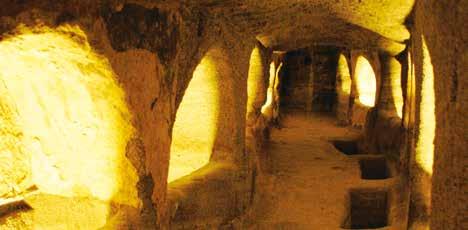
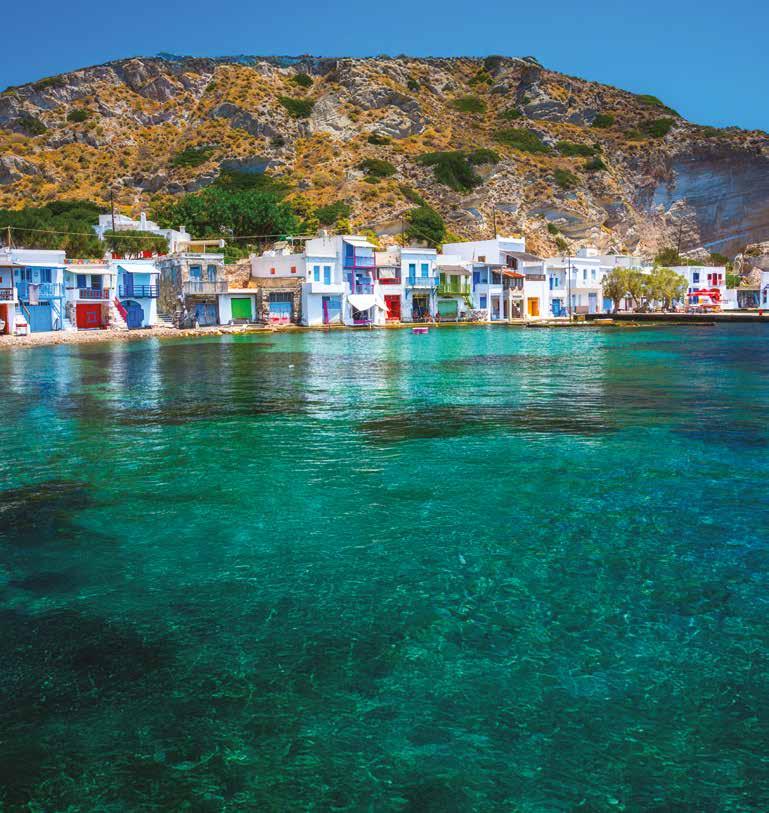
Of course, you will spread your towel on the lunar-like rocks of Sarakiniko and take a refreshing swim. You will circumnavigate the island to admire the impressive vertical rocks of Kleftiko. You will visit the picturesque “wires” in Klima to photograph and be photographed. However, there are also other points of interest in Milos that deserve your attention.
The only preserved catacombs in Greece are a remarkable Christian monument. This impressive complex comprises three underground chambers and galleries, as well as a family burial chamber, all of which
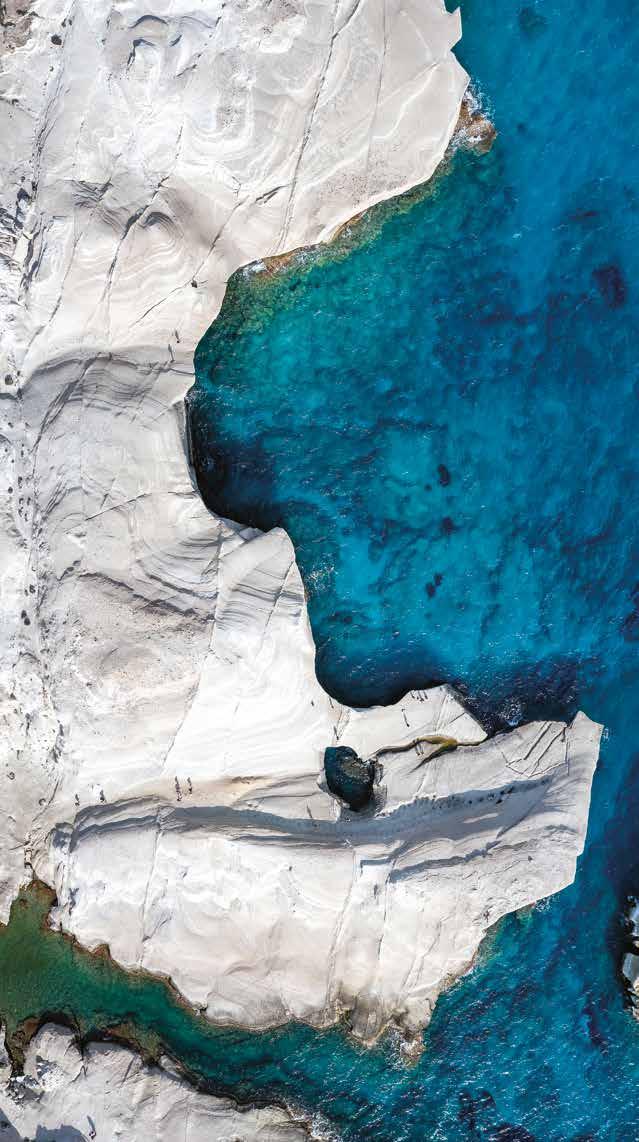
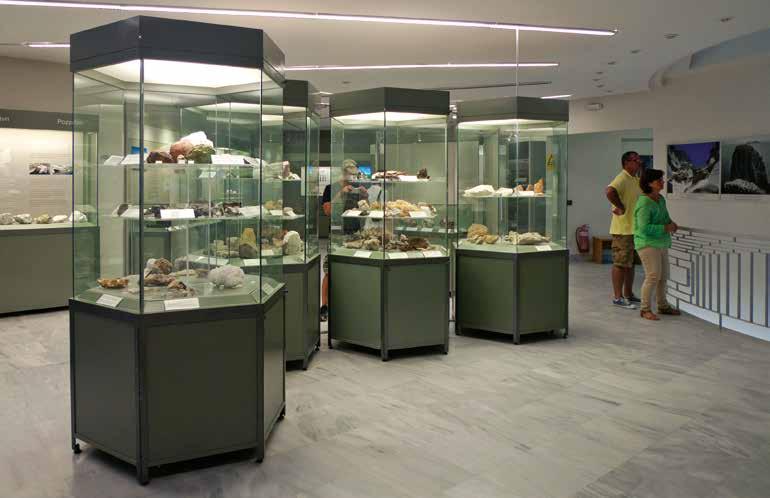
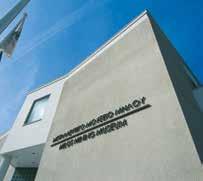
were carved into volcanic tuff between the 1st and 6th centuries AD. In this imposing and atmospheric illuminated area, which is about 200 metres long and between 1.6 and 2.5 metres high, you can see tombs that have been carved into the walls in an arched shape. There are also impressive burials on the floor. The inscriptions bearing names alongside geometric and floral decorations add to the historical and aesthetic interest. The unique, elevated, sarcophagus-shaped tomb, known as “the tomb of the martyr”, which probably belonged to one of the island’s first bishops, occupies a special place.
The Archaeological Museum of Milos houses important findings from the catacombs, including decorated lamps, miniature figurines and jewellery -funerary grave goods placed next to the deceased for their eternal journey. Among the excavation findings are remnants of everyday use vessels, traces of cremation and animal bones, providing evidence of rituals that are reminiscent of today’s memory and farewell practices. Perhaps people felt the same gratitude for life then as modern visitors do now when they emerge from the darkness of the catacombs into the dazzling light of Milos.
Milos boasts mineral wealth that honours not only the island itself, but Greece as a whole. Explore this wealth at the Milos Mining Museum (MMM) in Adamas.
The museum was created with the support of Imerys Industrial Minerals Greece S.A., and its main mission is to preserve the island’s collective memory and narrate its geological history. At the same time, it emphasises the importance of the role played by human societies in exploiting the minerals of Milos, which contributed to the development of culture, navigation and trade. Visitors have the opportunity to learn about the
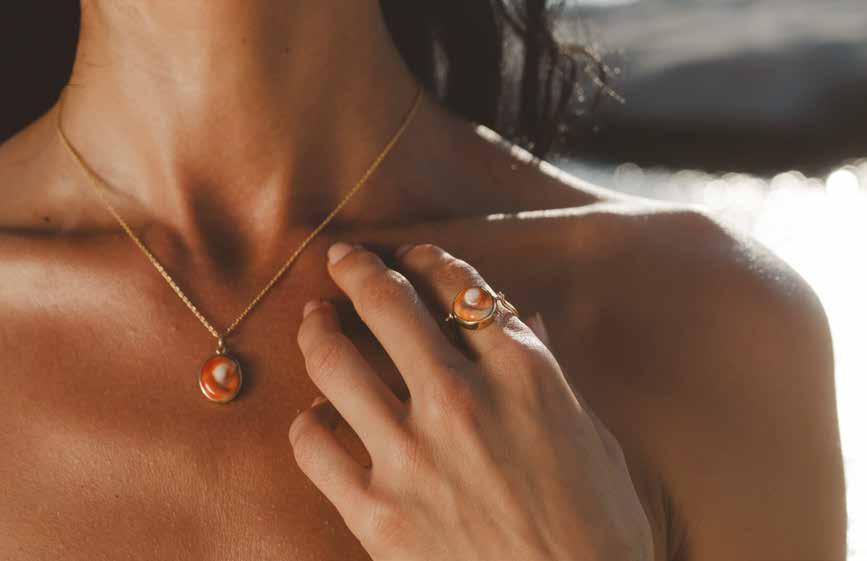
many applications of minerals in modern life, a number of which are still mined on the island today.
The museum building has two floors: the ground floor and the first floor -which house the main exhibition areas- as well as auxiliary spaces in the basement. The ground floor showcases the mining history and activities of Milos, while the first floor displays its mineral wealth. The Obsidian Collection by folklorist Zafeiris Vaos is exceptional, featuring excellent artefacts crafted from the island’s distinctive black obsidian.
Perched on a green hillside between the settlements of Tripiti and Klima, where the ancient city of Milos once stood, lies one of the best-preserved ancient theatres in the Cyclades island complex.
Although its construction probably began during the Hellenistic period, the surviving architectural elements -the koilon (auditorium) with seven rows of marble seats, the orchestra and the stage floor- date from the Roman period (1st-4th century AD). The theatre was discovered in 1735 by the Jesuit monk Nicolas Sarrabat, who found three rows of seats by chance. The first excavations were carried out around a century later by Carl Haller von Hallerstein, a German who bought the theatre for King Ludwig I of Bavaria. The king then gave it to Otto, the first king of Greece.
The theatre became a popular destination for travellers, reopening in 1930 to host theatrical performances. Restoration work continued from 1990 to 1995 and again from 2010 to 2015 to repair damage caused by visitors.
Today, the ancient theatre continues to host cultural events, standing as a living monument to history and aesthetics. It offers magnificent views of the blue Aegean Sea and the ancient port of Milos.
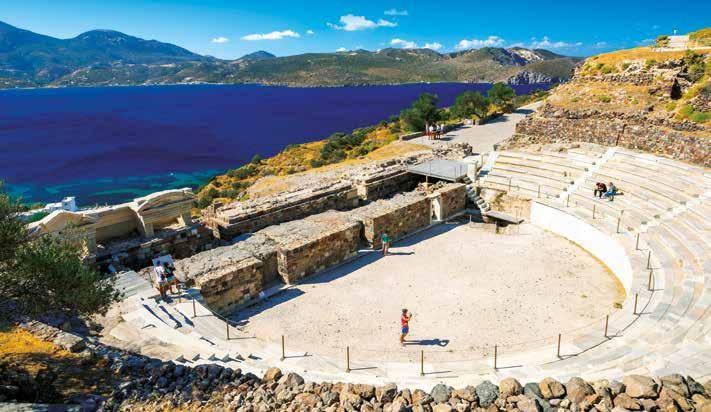

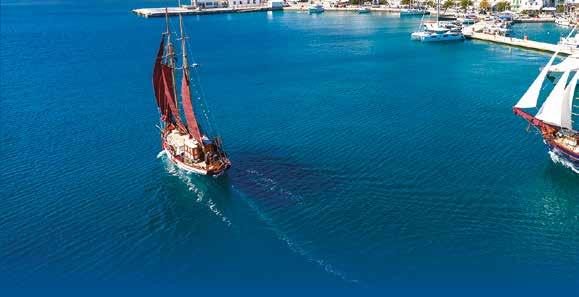
Milos Trips - Unforgettable Sailing Adventures
Embark on an extraordinary journey with Milos Trips, where we curate cruises and excursions that create lifelong memories. As a family-run business with a shared vision to make Milos a top vacation destination in Greece, we continually innovate and add new experiences for our guests.
Full Day Sailing around Milos & Polyegos
• Duration: Approximately 9 hours
Set sail on Thalassitra and Leloudo, exploring Milos’s most stunning destinations. Dive into the crystal-clear waters of Kleſtiko’s hidden caves, stroll through the colorful village of Klima, and relax on the pristine beaches of Kalogries and Gerakas. Discover the breathtaking Sykia Cave and enjoy the best island cuisine aboard. For a unique adventure, hop on a zodiac tour inside Kleſtiko’s caves.
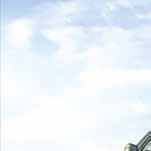
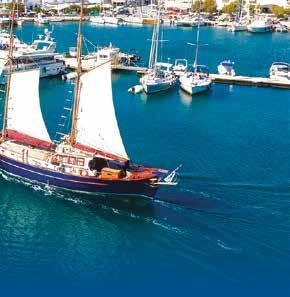
Organize your dream excursion and create mesmerizing memories with your loved ones. Visit our website or contact us to start planning your adventure today.
Milos Trips
www.milostrips.com
T. +30 22877023421
M. +30 6999636264
M. +30 6944636264
info@milostrips.com


Complimentary Second Driver
Unlimited Mileage
Comprehensive Insurance Coverage
Air Conditioning in All Vehicles






Explore Milos with freedom and comfort with Thalassitra Car. Our well-maintained fleet includes compact cars, family-sized SUVs, and adventurous 4x4s, ensuring the perfect vehicle for your journey.
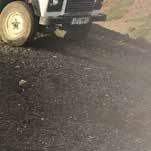

Thalassitra Car
www.thalassitra-car.gr/
T. +30 22870 23422
info@thalassitra-car.gr


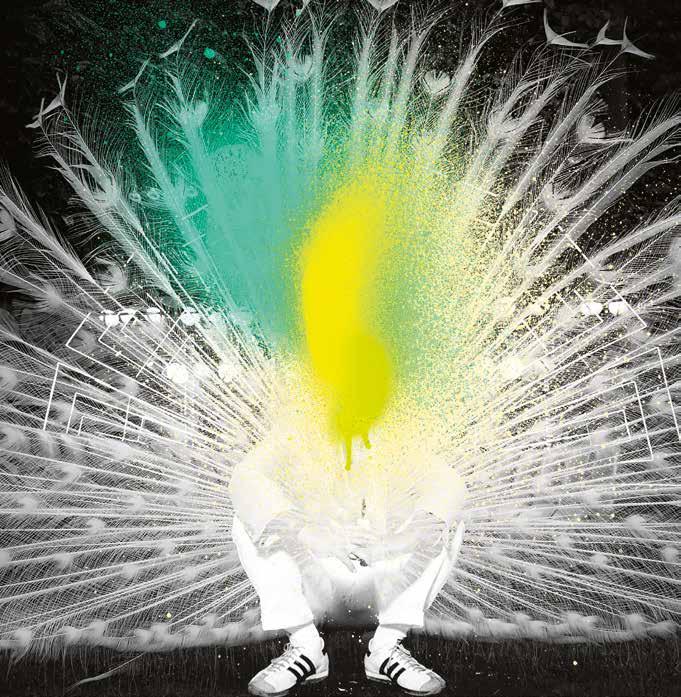
Versaweiss, “Feathered up Peacock” (2016).
THIS SUMMER, THE MUSEUM OF CONTEMPORARY ART OF CRETE IN RETHYMNO IS SHOWCASING THE AFFINITIES AND INTERACTIONS BETWEEN FASHION, ART AND SOCIETY THROUGH A UNIQUE AND FASCINATING EXHIBITION.
Although garments were initially limited to protecting people from the elements, they quickly became a symbol of social status. Later, as the concepts of “style” and “fashion” became prevalent, they came to represent specific personality traits of an individual. The WAVE
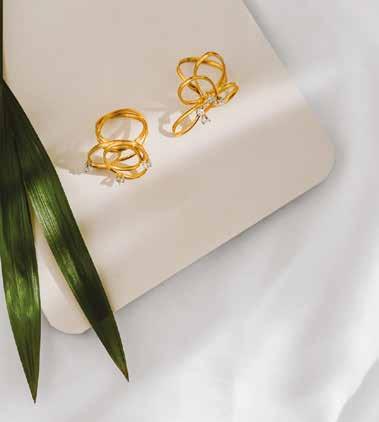
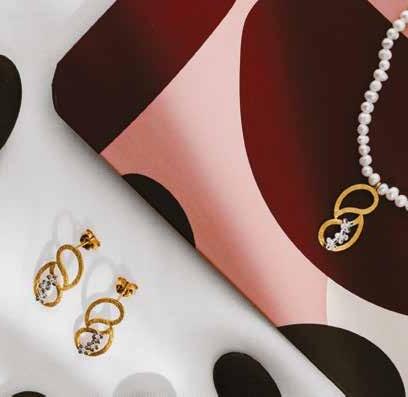

email: info@labyrinth.gr




Heraklion, tel: +30 2810
2810 330350 | Kokkiadi Jewels: 35 Daidalou Street, Heraklion, tel: + 30 2810











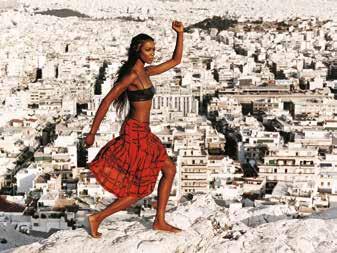
René Habermacher, «Black Athena» (2004),
René Habermacher, “Black Athena” (2004), in collaboration with the photographer Jannis Tsipoulanis.
temporary exhibition “What you wear is what you are” at the Museum of Contemporary Art attempts to highlight this twoway relationship between fashion, society and art.
In particular, the exhibition’s curators, Maria Maragkou, Maria Panayides and Stavros Kavalaris, focus on the relationship between fashion and the challenges of our time as expressed and influenced by contemporary art and the issues it raises. Maria Maragkou, the art critic, artistic director and driving force behind the museum, adds:
“Like all of our exhibitions, this one is relevant to current affairs and offers a commentary on the era, which is important since we are talking about contemporary art. We believe that this is how every self-respecting museum should operate and perhaps this is what its visitors and supporters value, both in and beyond Crete”.
As part of the exhibition, visitors can admire works by 29 notable artists and designers. These pieces come from the National Museum of Contemporary Art, the Atopos / Contemporary Visual Culture organisation, various art galleries, private collections, and the artists themselves. Of course, the Museum of Contemporary Art of Crete’s collection is also featured. A special mention goes to Sophia Kokosalaki, who may have passed away in 2019 at the early age of 47, but whose work left a strong mark on the fashion industry. Her work is presented in a special tribute, through 24 creations.
Αλίκη
(2023-2024).
Aliki Palaska, “Pandora Riots” (2023-2024). On the back left works by the same artist and on the right by Stamatis Zannos.
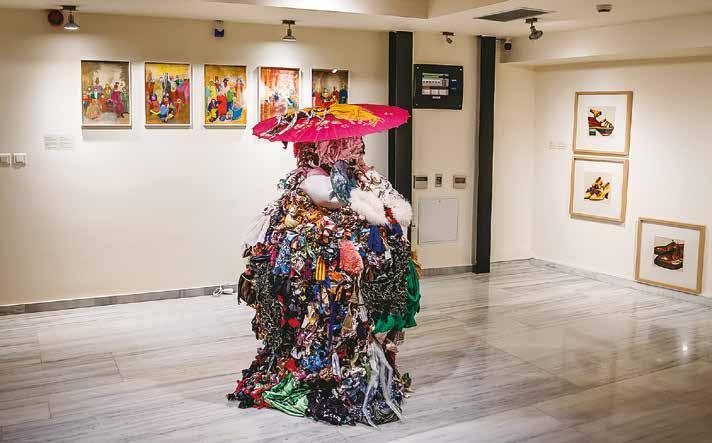
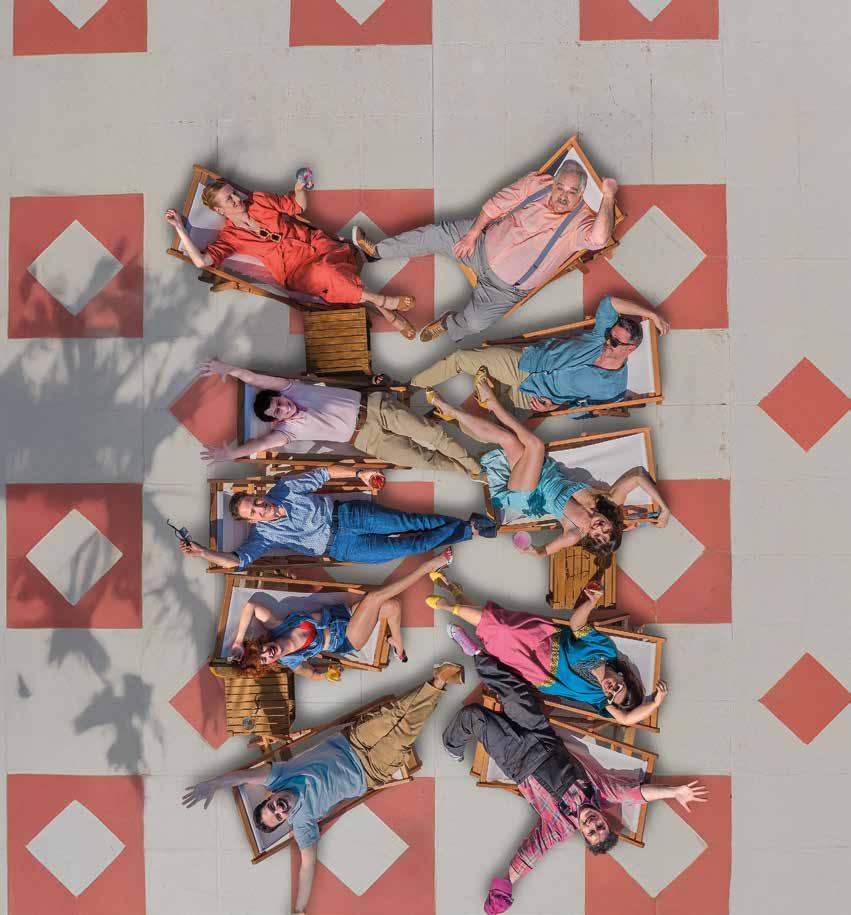











This important international exhibition is accompanied by a commentary written by fashion historian Meti Tsoukatou. Ms Maragkou comments: “We believe that the local public is ready to embrace high-quality exhibitions that can be displayed anywhere. It would be humiliating for the Cretans if we only exhibited local artists. On the contrary, when local and international artists engage with each other, it creates a positive osmosis for everyone”.
It is located in the heart of Rethymno’s old town, beneath the Venetian walls and is housed in a building from the same period. Following restoration and expansion work in 2009, a modern museum emerged. This is essentially an evolution of the former Municipal Art Gallery “L. Kanakakis” (1992) and the Centre of Contemporary Art (1995). The Museum of Contemporary Art of Crete’s permanent collection consists of around 700 works representing the artistic output of Lefteris Kanakakis from Rethymno and many other contemporary artists. The collection covers a wide spectrum of contemporary Greek visual expression from the 1950s to the present day.
“What you wear is what you are”, until 31 October, www.cca.gr
Επάνω: Travis Hutchison, “Marti” (2007).
Κάτω: Δημιουργία
Above: Travis Hutchison, “Marti” (2007).
Below: Creation by Sophia Kokosalaki.
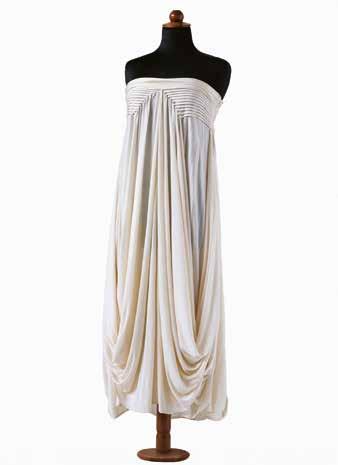
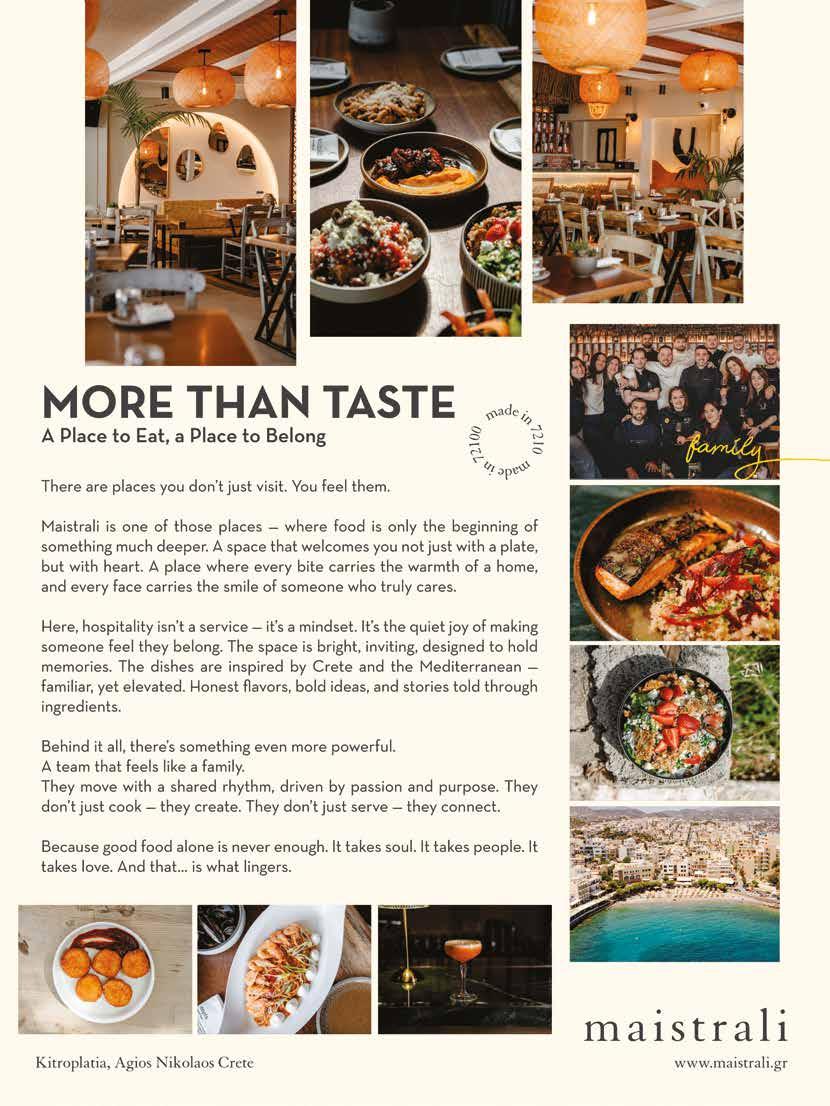
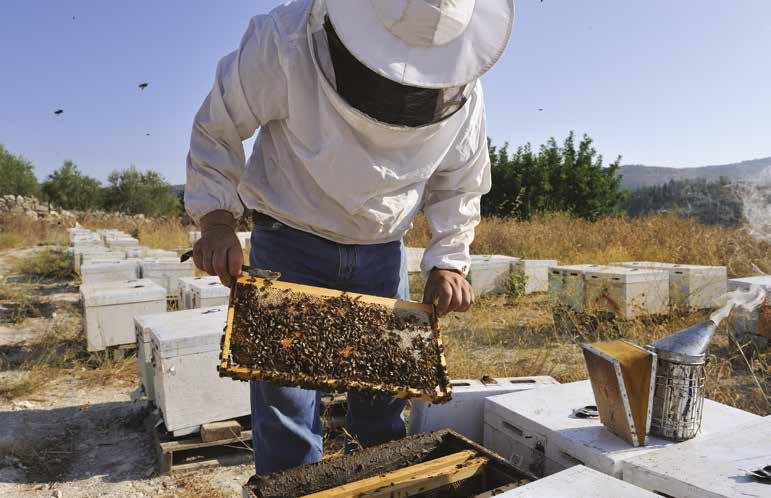
Oδημιουργός
Pantelis Kavouras, the creator of the Greek Beekeeping Center, talks to us about the benefits of honey in our diet and the unique characteristics of Cretan thyme that make Crete’s honey so special.
Is it true that honey has no expiration date?
Packaged honey actually does, because it is so required by law for all packaged foods. However, so long as the honey is properly packaged and kept away from sunlight and moisture after opening, it will never spoil! And don’t forget that it’s the most natural food around -it contains no additives or preservatives whatsoever.
What are the health benefits of honey?
It contains polyphenols and phenolic acids, which are rich in antioxidant and antiseptic properties and naturally shield the immune system. If we end up having a few extra drinks -which is not unusual over the summer!- honey can metabolise alcohol faster and alleviate hangover symptoms. Also, as we all know, the first thing we do when we have a cold or a sore throat is to make a hot drink with honey to help us feel better. Now it is also widely used in cosmetology, particularly in face creams, as it appears to prevent premature ageing.
When we talk about honey, most people think of breakfast...
This is indeed the most common way to consume it: spread on bread for breakfast. But honey can be used anywhere we want to add a sweet, special flavour. It’s perfect for salad dressings, for example, WAVE
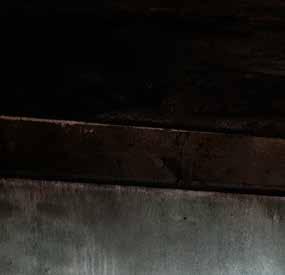
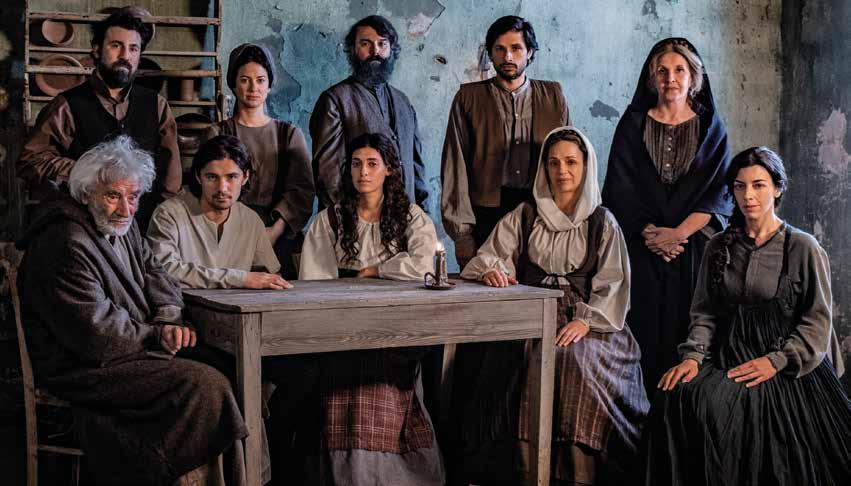
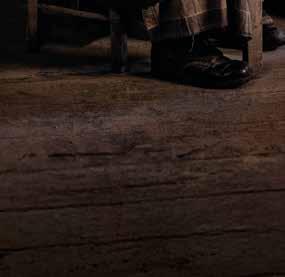

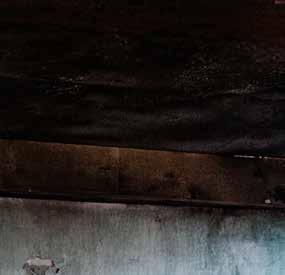
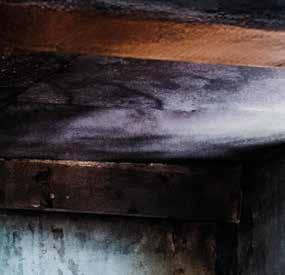


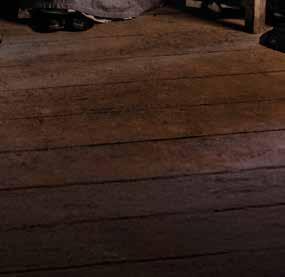
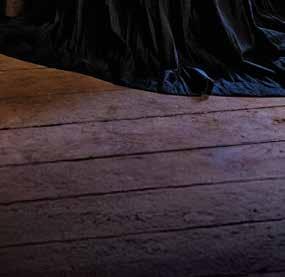



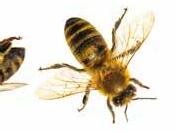
Instagram:kentro_ellinikis_melissokomias
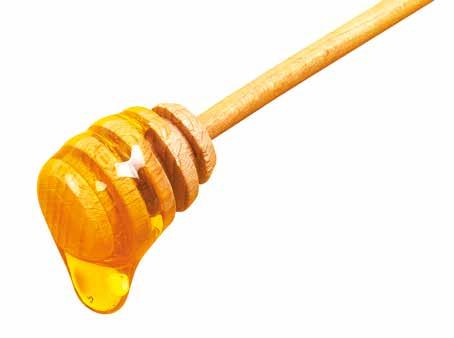
without affecting the nutritional value of the salad, and it can be used in desserts and drinks, especially for those who avoid sugar. And, strange as it may sound, it’s perfect for marinating meat!
You talk about honey with great enthusiasm... It makes sense, doesn’t it? I founded the Greek Beekeeping Center 25 years ago and it is now a family business, with my children also involved. Honey is my profession, my passion and my life.
Your “flagship” Golden Selection honey boasts that it comes from the best thyme-growing areas in Crete. Why does this matter? For most people, thyme honey is the first type of honey that comes to mind. Greece’s hot and dry climate favours the growth of aromatic plants such as thyme. We all know how blessed the Cretan land is -all of its products are top-quality! Golden Selection is one of the finest Greek thyme honeys thanks to its intense amber colour, unique thyme and Greek nature aroma, delicate texture and unparalleled taste. These are the qualities that won it an International Quality Award at the annual London International Honey Awards!
Instagram:kentro_ellinikis_melissokomias
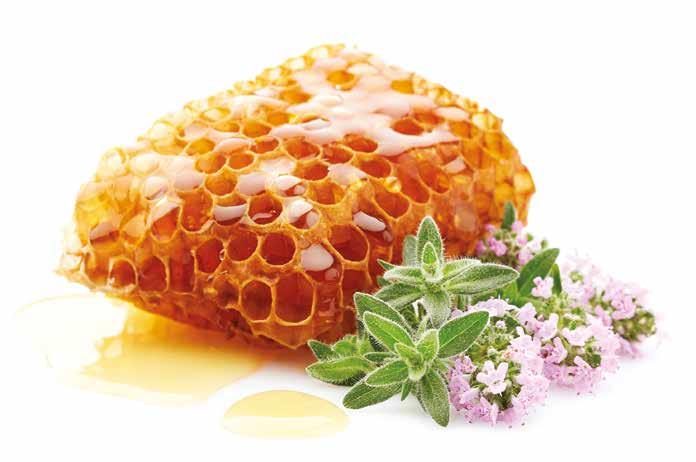
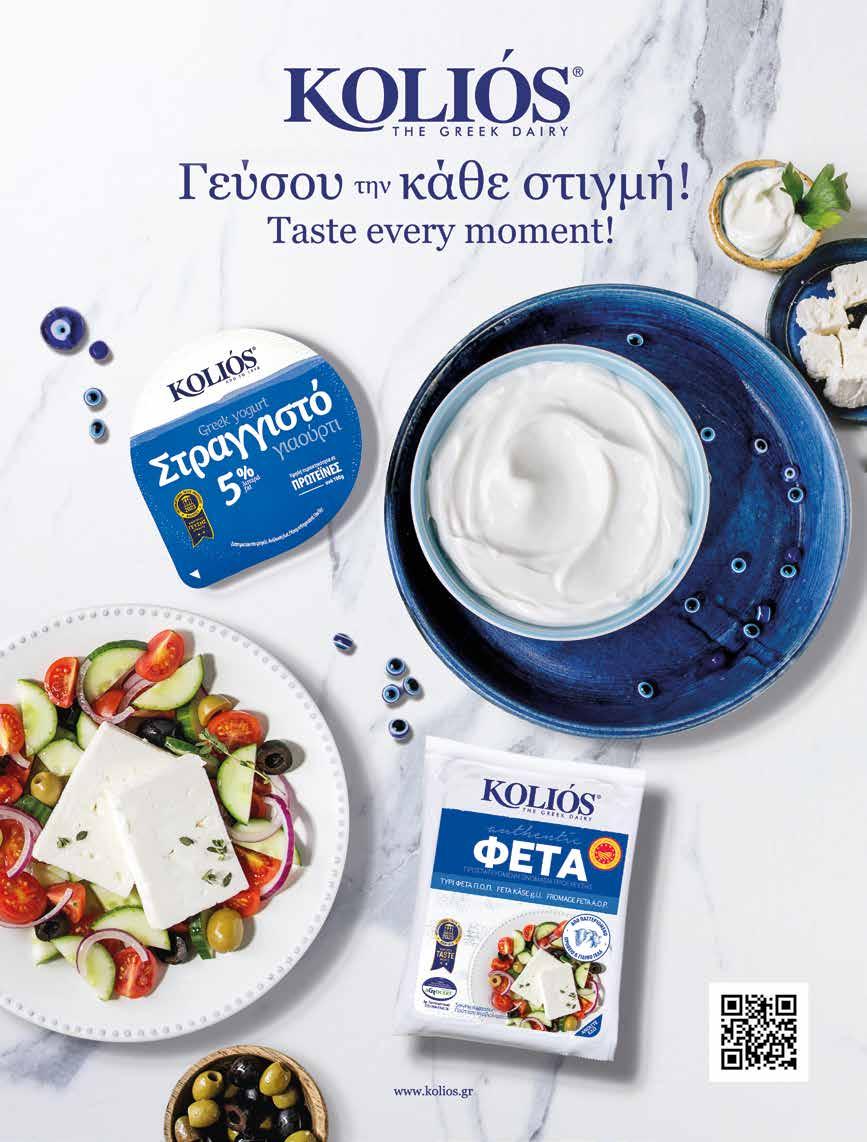
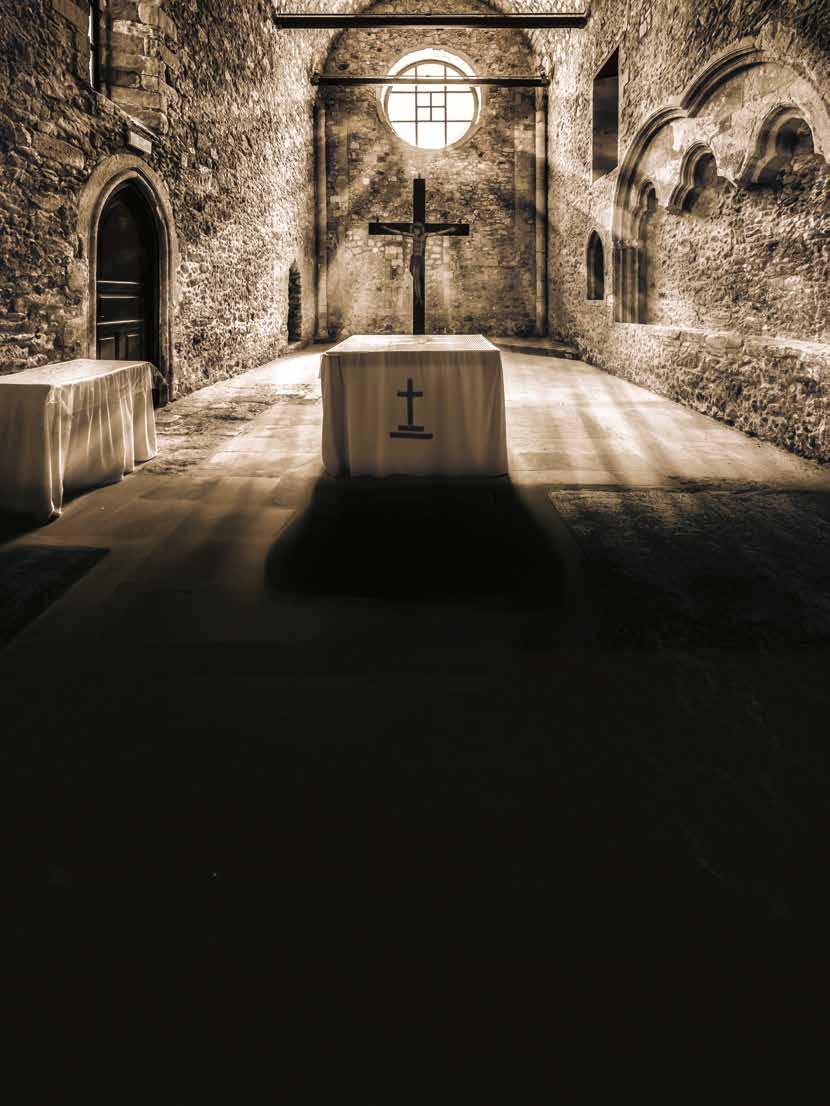
WE REVIEW THE HISTORY OF THE CHURCH OF SAINT PETER OF DOMINICANS, THE PRESERVED MONUMENT THAT DOMINATES THE COASTAL FRONT OF HERAKLION, AND ITS ADVENTURES FROM THE VENETIAN ERA TO THE PRESENT DAY.
EVA PETROPOULOU
It stands imposing to the south of Sofoklis Venizelos coastal avenue, catching the eyes of passers-by. In its long history, the church of Saint Peter of Dominicans has changed hands, use and form, experienced prosperity and decline. However, following maintenance and restoration work in the 1990s, it was finally given the historic status it deserves.
Our guide through the past and present of the monument, Ms Athina Kyriakaki-Sfakaki, is a qualified tour guide, retired bank manager,
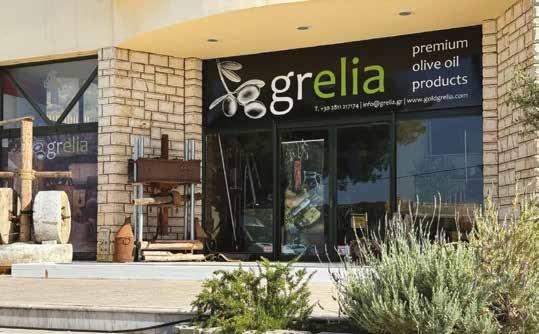
A Benchmark for Cretan Excellence
In a land where extra virgin olive oil is the norm, Grelia sets the ultimate standard. With over 30 international awards, excellence here isn’t a coincidence -it’s the result of a family philosophy rooted in deep respect for the terroir.
The Tasting Experience
Grelia offers two distinct yet equally essential initiations into its world.
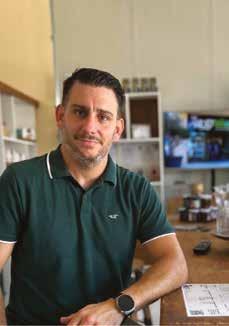
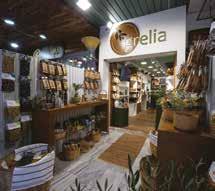
Ηράκλειο)
Grelia
Grelia Store (1866 st, Heraklion):
An urban taste atelier where Ms. Renata Kypriotaki doesn’t just serve -she educates the palate.
Under her expert guidance, visitors decode the complex organoleptic profile -from notes of freshly cut grass to the peppery finish that reveals high polyphenol content. A truly academic approach to taste.
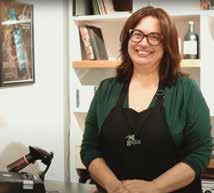
Grelia Fabrica
Grelia Fabrica (Ano Hersonissos):
Here, at the heart of creation, Mr. Giorgos Gounaris -in his role as Chief Operating Officer- offers a rare glimpse into the process that transforms the fruit into liquid gold. The tasting experience at the packaging facility is a holistic journey, connecting flavor directly to its source. For the connoisseur seeking true origin and the proof of handcrafted perfection.
Verdict:
A must-stop for the discerning palate seeking authenticity beyond the label. Grelia doesn’t just produce one of Crete’s finest olive oils -it sets the standard.
Here, olive oil is not merely tasted. It is experienced.


The eastern side of the temple, with the sanctuary in the centre and the two pastophoria on either side.
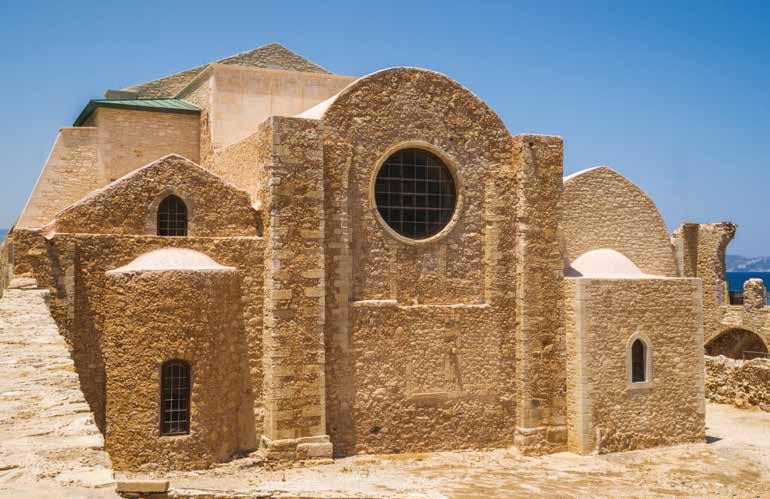
author and president of the Association “Friends of the Holy Church of St Peter”. Therefore, our discussion begins with the following clarifications: “Our association was founded in 2018, by fellow citizens with a keen interest and love for the monument. The aim was, and still is, to highlight it, promote its historical past and integrate it into the cultural life of the city. In this regard, we join forces with the Parish Council of Agios Dimitrios, the legal owner of the property. Οur common goal is to create a religious and cultural cradle in harmony with the sacredness of the site”.
The church was built in the early years of Venetian rule, in the 13th century. How were things in Chandax back then? “The first mention of the monastery is in a document from 1248. After driving out the Genoese and establishing themselves in the Kingdom of Crete in 1210, the Venetians introduced a system of military colonisation. From 1212 to 1252, they carried out four missions of «colonists», offering them fiefdoms in exchange for their military services. The Venetians facilitated the settlement in Crete of all the religious orders of Western monasticism, expecting the conversion of the native population to the Catholic doctrine”.
The church was originally single-aisled, timber-framed, with a long nave and a gable roof, inside which there were four chapels, the headquarters of the brotherhoods of Saint Vincent, the Name of God, Our Lady of the Rosary and Saint Rocco. Its architecture reflects the Western architecture and church building of the time. The earthquakes that have struck Heraklion in the past have caused significant damage to the monument, precisely because of its architecture: “The large dimensions of the central nave of the original building, 54 m long, 15 m wide and 12 m high, as well as the absence of buttresses along the northern and southern walls, contributed to its partial collapse during
E-mail:
● Family owned since 1988 ● All types of electrical equipmen
● Electrical installations ● KNX Automation ● Lighting study
● Issue of Licensed Electrician Certification
Address: Pera Triovasalos, 84800, Milos. Telephone: +30 2287022955 , Mobile phone: +30 6947695732
E-mail: ilek-fot@otenet.gr
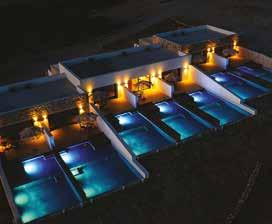
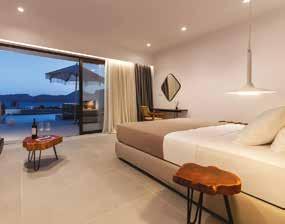
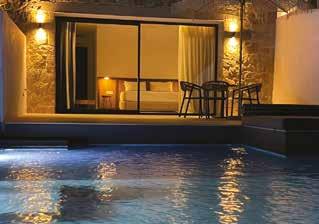

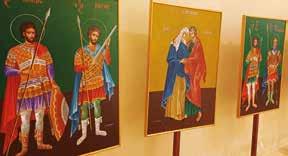
the earthquakes of the 14th, 16th and 18th centuries”.
In the 17th century, especially during the last 22 years of the Cretan War, the dramatic siege of Chandax by the Ottomans, the church was subjected to harsh strains. It was badly damaged by the constant bombing. “In fact, in July 1668, the Venetian workshop for war material, which operated next to the church, was blown up by a Turkish shell, causing casualties to all the workers and serious damage to the church”. After the fall of the city and the final Ottoman domination of the island in 1669, Saint Peter’s was converted into a Muslim mosque, known as Sultan Ibrahim Camii.
The changes that took place in Crete after the achievement of autonomy in 1898, the establishment of the Cretan State and finally the union with Greece in 1913, were also reflected in the church: “Αt the beginning of the 20th century, the Turkish ore furnace that operated in the building was demolished and part of the north-eastern chapel became a water tank. In the area north of the temple was located the distillery Koniordou and later the entertainment centre «Castella». During the 1926 earthquake, the roof of the eastern part collapsed, while a carpentry workshop was opened in the western part. Finally, the monument became the property of the parish of Saint Demetrius near the port of Heraklion with the purchase contract no. 6018/1943”.
The buttresses were built during the restoration of the church. Right: The groin and the south wall of the south-west chapel, where fragments of frescoes survive.
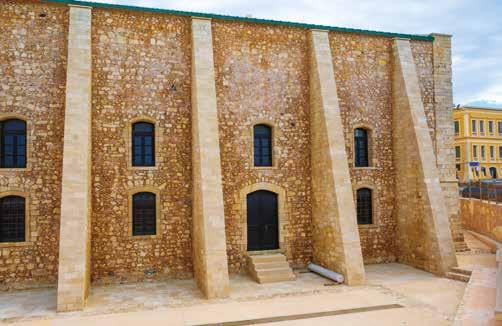
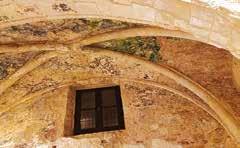
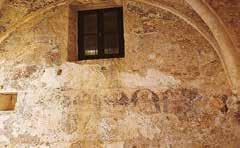
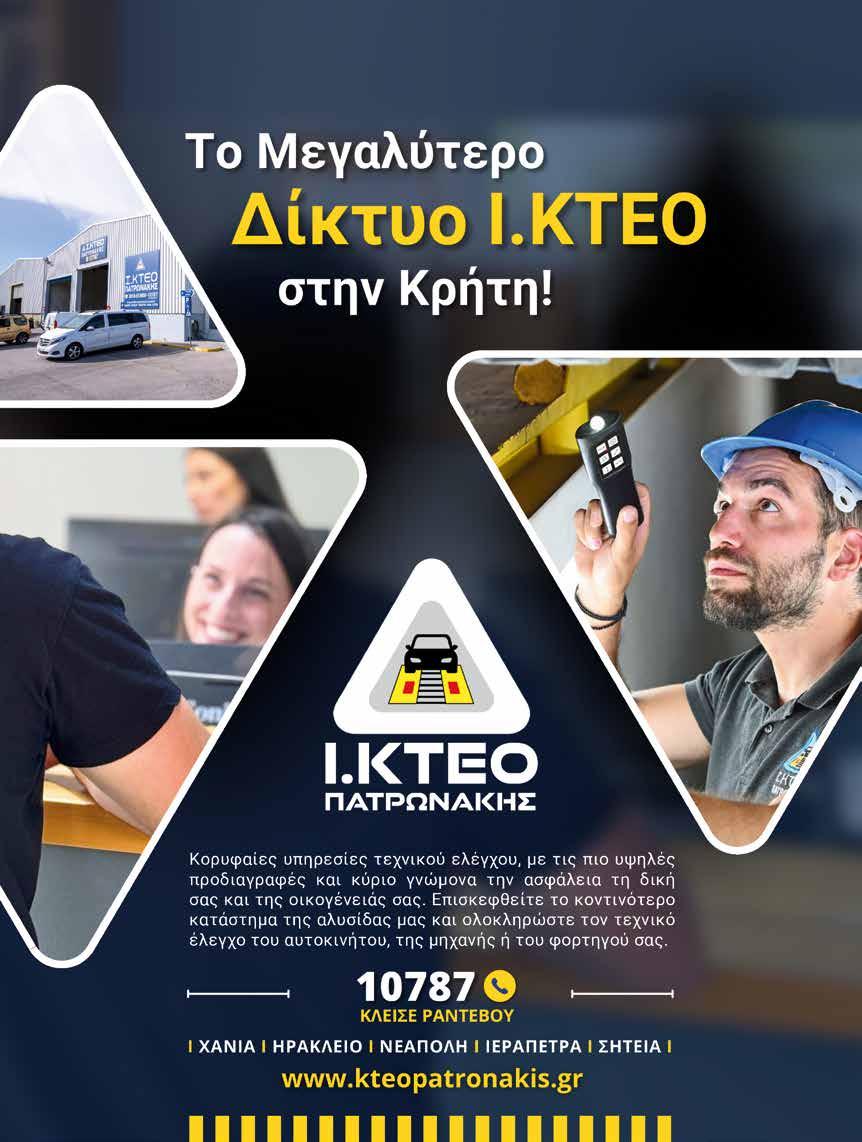
View of the church and part of the excavated buildings in the northern area of the monastery.
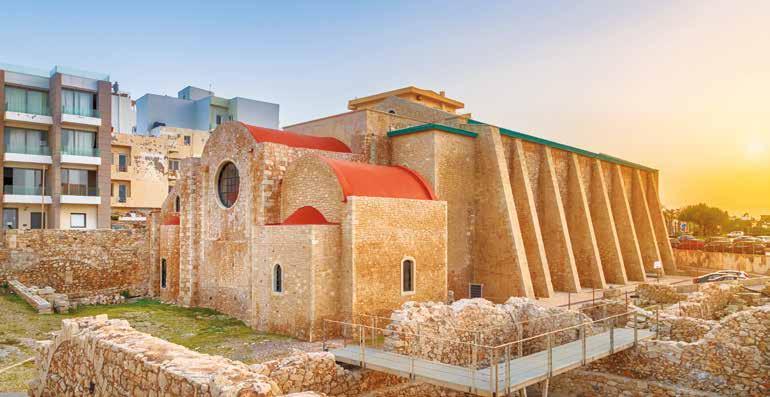
The church remained abandoned from then until the early 1990s, when the decision was taken to carry out restoration and conservation work in cooperation with the Holy Archdiocese of Crete and the 13th Ephorate of Byzantine and Post-Byzantine Antiquities. This marks the beginning of archaeological excavations in the temple and its surroundings. Ms Sfakaki informs us that “Inside the church were discovered 29 box-shaped tombs of Venetian officials and nobles, while fragments of frescoes from the 14th and 15th centuries were preserved: the Crucifixion, The Platytera (Virgin Mary), Angels, The Nativity, Saint Peter of the Dominicans, Saint Catherine and the Apostles Constantine and Helen”. An Ottoman stone sculpture has been preserved on the southern wall of the temple, while archaeological excavations in the area have revealed tombs from the 2nd Byzantine period and traces of settlement from the Arab occupation (9th-10th centuries AD).
From August 2024, the southern pastophorion houses the collection of portable icons donated to the church by the doctor and illustrator Michalis Tsapakis on the occasion of the inauguration of the northeastern chapel dedicated to Saint Irenaeus. “The south-western chapel of Agios Nikolaos has been «adopted» by the Heraklion Port Authority, which has almost completed the necessary restoration and equipment” explains Ms Sfakaki. What more could be done to promote the monument? “There are many difficulties that prevent the organisation of bigger events and the continuous access of the public to the monument. There are no sanitation facilities, the building needs to be waterproofed, cracks in the buttresses inside the church need to be repaired and the disabled lift needs to be replaced. The acoustics of the room are also problematic. We have contacted experts at the University of Patras to carry out a study to improve the acoustics during speech events, first and later during musical events. Our cooperation with the Archaeological Service, the Region of Crete and the Parish Council is ongoing”.
ThechurchisopenonthecelebrationofSaintsPeterandPaul(29June) andoftheHolyApostles(30June).Itisalsopossibletovisittheinterior ofthechurchbyappointmentwithMsSfakaki(+306944330023).







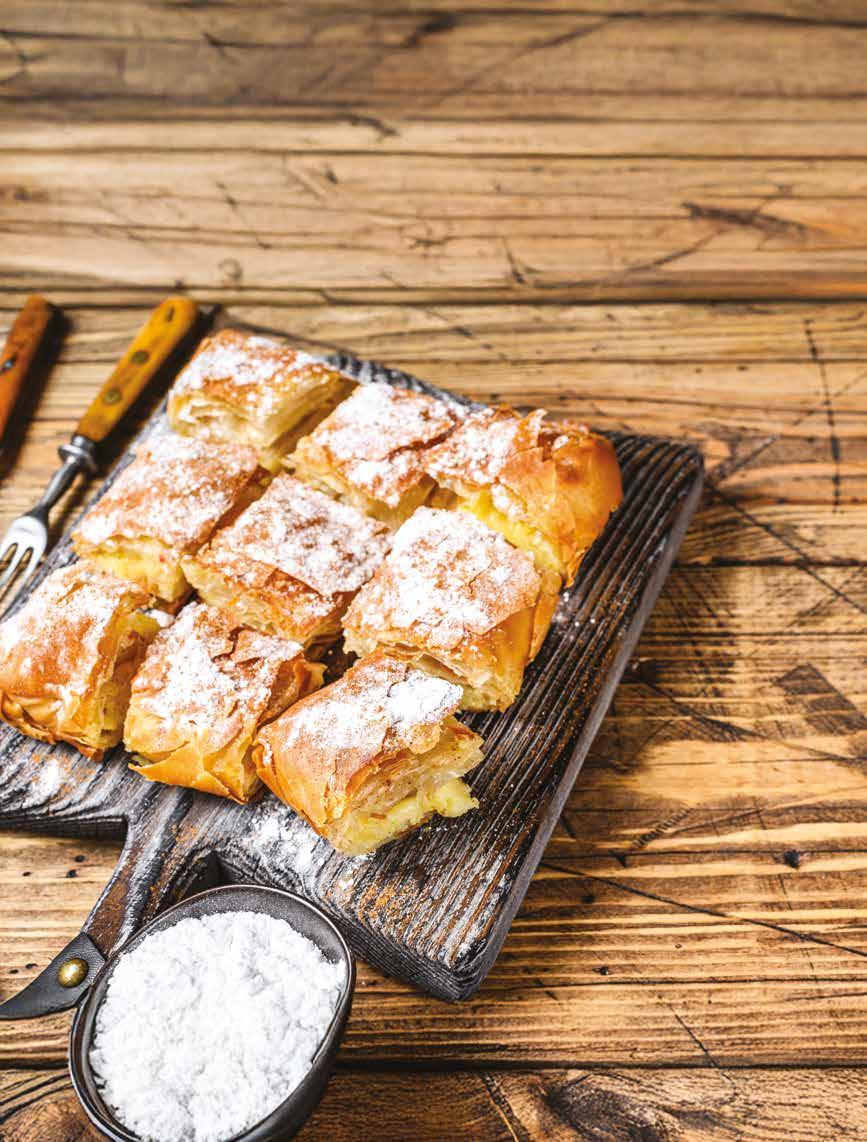



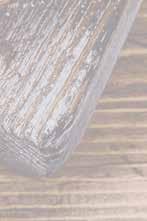


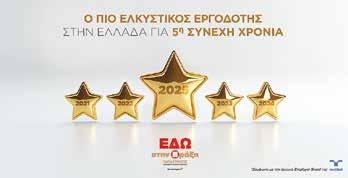
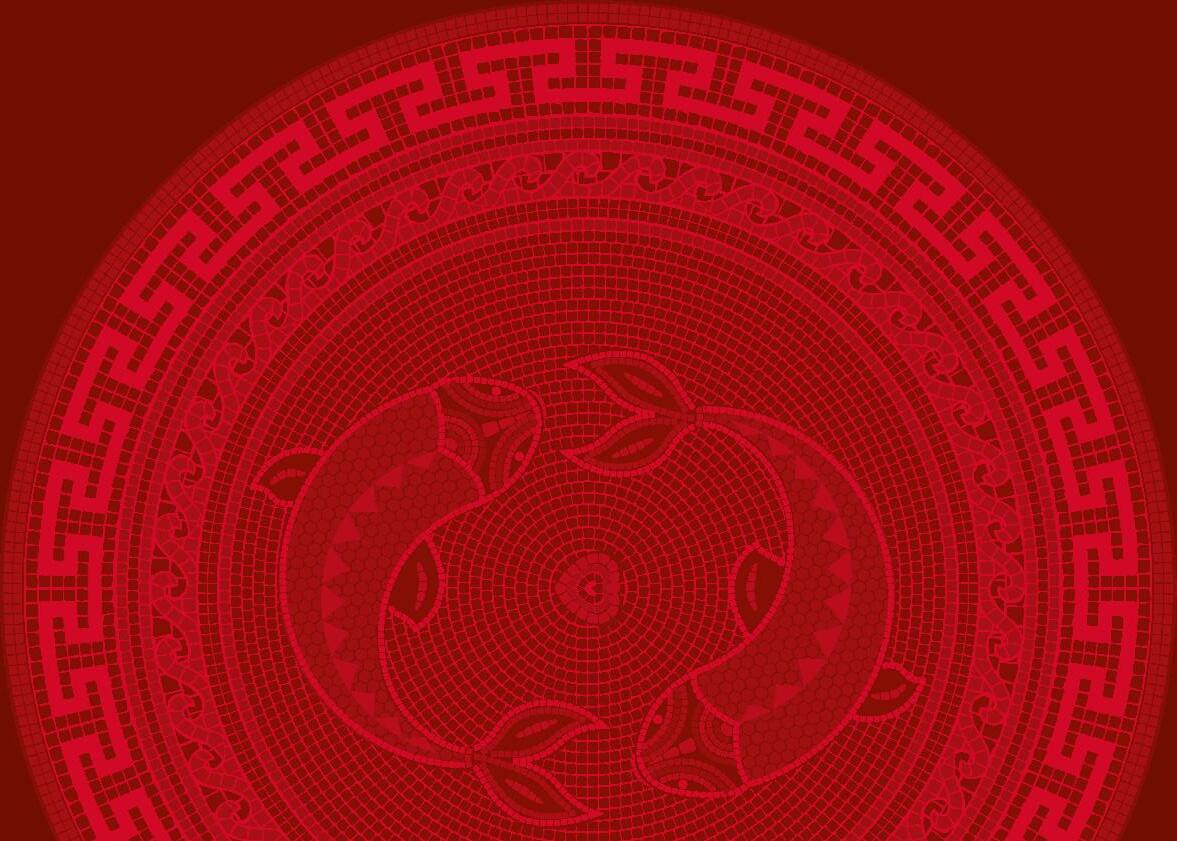

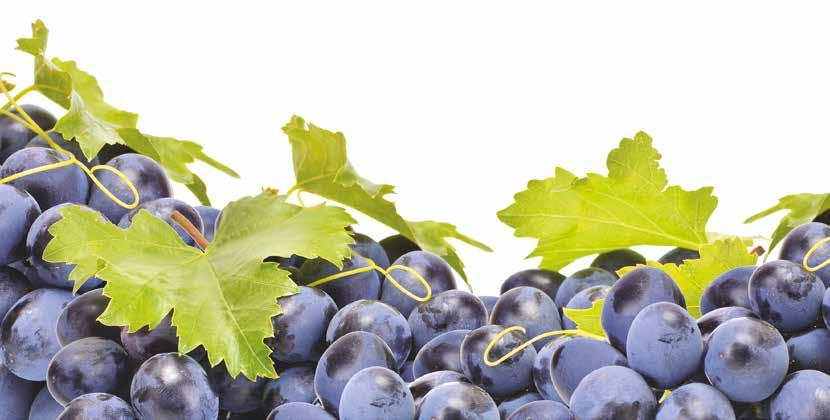
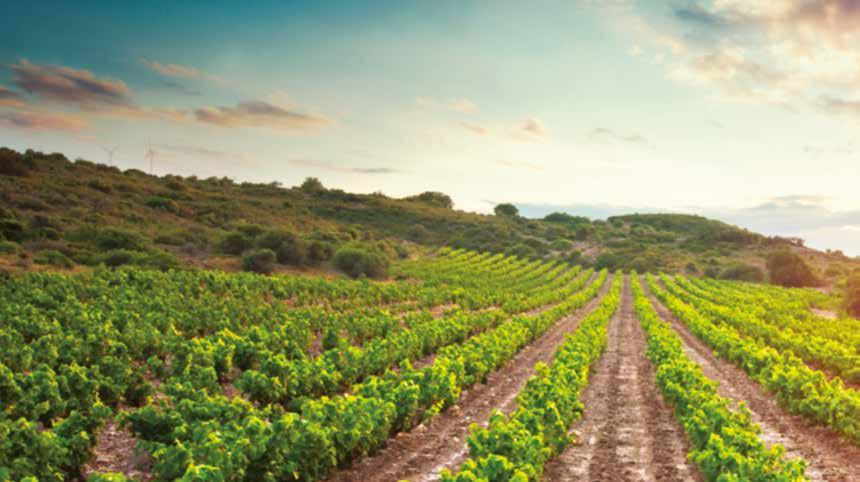
Following the Cretan paths and looking for wines produced by young winemakers who honour their family tradition, we found three wineries in Heraklion that shared interesting insights into the wonderful process of turning grapes into wine.

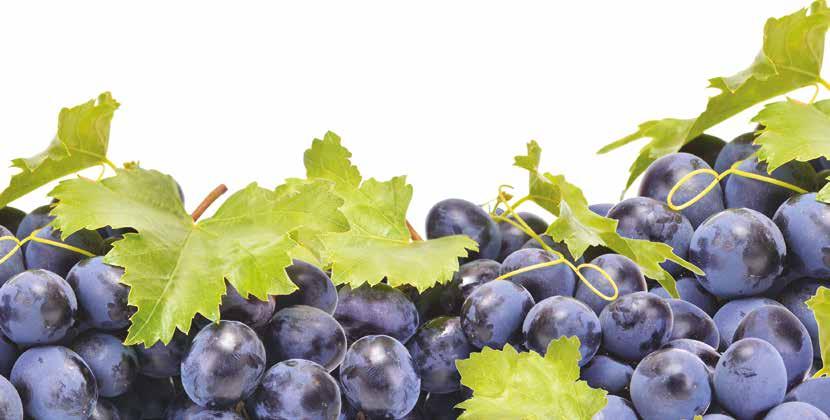
YOUNG AND ACTIVE WINEMAKERS FROM HERAKLION WHO ARE CONTINUING THE FAMILY TRADITION SHARE THEIR PHILOSOPHY AND EXPLAIN HOW THE LAND OF CRETE INSPIRES WINEGROWERS TO ACHIEVE GREAT THINGS. πλευρές
Drakos and George Garakis - Garakis Winery

- Garakis Winery
They come from a family with a long tradition of winemaking: “We may be the first generation of winemakers as the winery only started in 2021, but we are the sixth generation of winegrowers” they tell us. The story of Drakos and George Garakis begins 25 years ago, when their father, Manolis, opened the
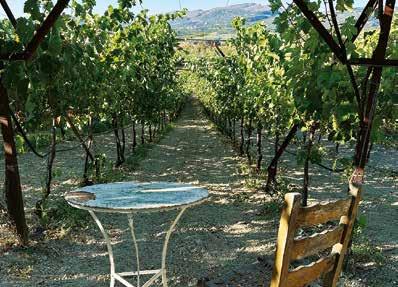
family’s traditional distillery. After completing their studies, the two brothers became more involved with wine and started the winery. After all, they had always loved wine and had wanted to create their own.
They primarily produce wines made from native Cretan grape varieties, such as Vidiano, Muscat of Spina and Mandilaria. Their goal is to showcase their character through their wines and achieve a high-quality result. They enjoy experimenting and discovering the dynamics of local varieties. What unique features do their vines have that give their wine its special character? “One of our main advantages is that we have our own vineyards, which enables us to control the quality and quantity of our raw materials fully. Our vines are also grown organically, without the use of chemicals. Finally, all work in the vineyards is carried out by hand”. They explain how the land of Heraklion is transformed into the aromas, taste and body of wine: “The land of Heraklion, and especially our village (Kounavi) where all our vineyards are located, has a unique terroir. The soil consists of limestone with good drainage and relatively low fertility, characteristics that ultimately favour the vine, resulting in a low yield and high quality. There is enough sunshine for the grapes to ripen properly, but the summer winds also cool the vineyards, which means minimal irrigation is required. Our close
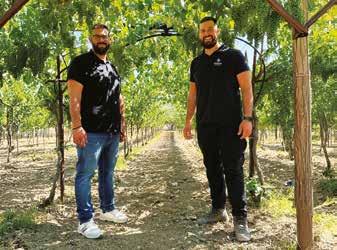
proximity to the sea also mitigates extreme temperatures, which is another advantage. All of the above contribute to our wines having fresh, cool aromas and notes of the island’s herbs, as well as a full, balanced taste and a body that combines strength and elegance”. Their approach to wine is founded on three principles: Respect for nature, and the quality and authenticity of raw materials. After all, they identify as vine growers before they do as winemakers. Their aim is to convey their philosophy to each bottle, creating a unique experience for consumers.
They particularly enjoy the wine tastings they organise: “We are open to visitors every day. We love showing people around our place and serving them our wines. The whole family is here and ready to welcome visitors. They will even get to taste the goodies from the winery’s wine cellar during the summer months!”.
www.garakiswinery.gr
Instagram: @garakiswinery
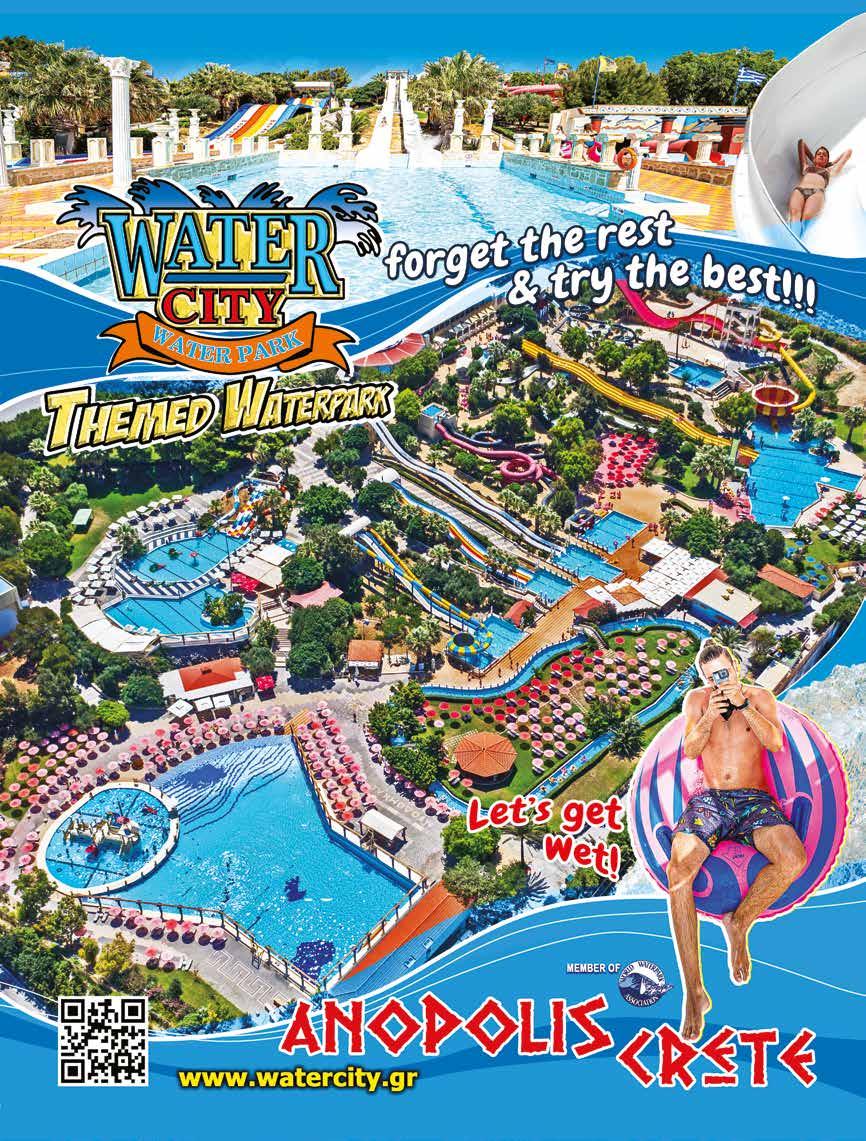

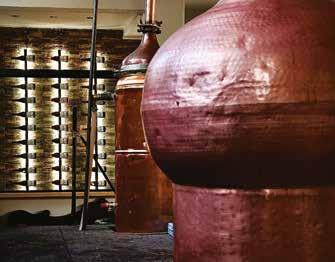
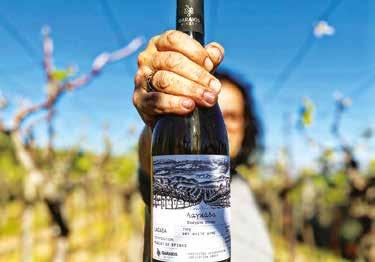
www.garakiswinery.gr
Instagram: @garakiswinery Ισίδωρος
- Thalassinos Microwinery
Isidoros followed in his family’s footsteps, which led him to achieving his lifelong dream: “My decision to work in the wine industry was not a spur-of-the-moment. My family has been involved in the primary sector for more than 50 years, mainly cultivating organic vines for the production of traditional tsikoudia. Growing up, I wanted to continue the family tradition and initially pursued studies in beverages and spirits. I then worked in laboratory control and various other areas of the production process in wineries and vineyards. Through experimental vinifications, I aimed to create a wine that reflects authenticity, naturalness and devotion to my homeland”.
Thalassinos Microwinery specialises in natural and organic wines produced in small quantities. The winery has a strong focus on expressing the terroir, sustainability, and
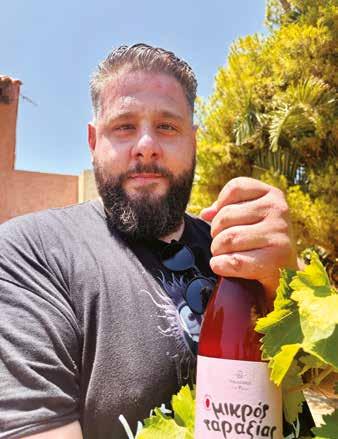



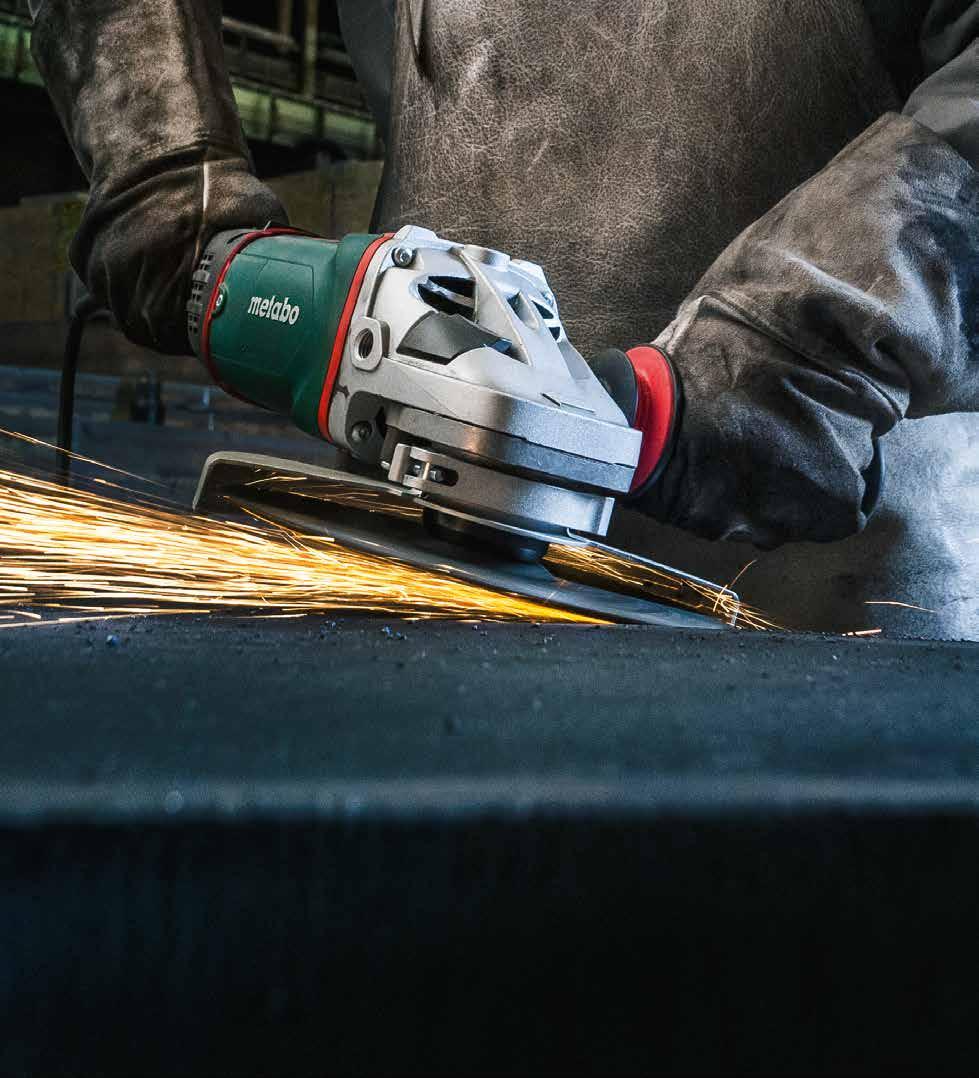
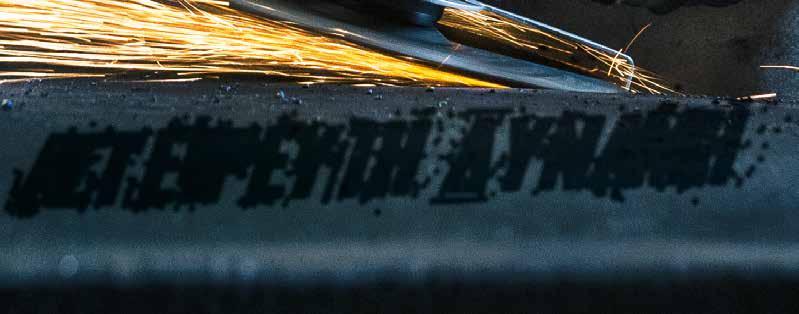

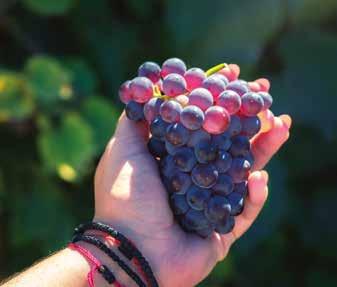
non-interventional vinification. We come across lowintervention wines –orange, white, rosé and red– with an emphasis on indigenous varieties, spontaneous fermentation without commercial yeasts, skin-contact extraction, and ageing in amphorae or stainless steel tanks.
The wines are unique thanks to the special characteristics of the vineyards. These elements are inextricably linked to the Cretan terroir, cultivation methods and a philosophy of non-intervention. The vineyards are located at an altitude of 500-950 metres on mountainous, sandy clay and rocky terrain. Native varieties include Liatiko, Vidiano, Muscat of Spina, Kotsifali and Mandilaria. Biodynamic and regenerative cultivation methods are employed, with no fertilisers, pesticides or irrigation. Vines grow in a highbiodiversity ecosystem, alongside natural crops, plants, bees and weeds.
As he explains “The land of Heraklion, with its unique geological and microclimatic features, offers wines of complexity and intensity, with cool acidity, vitality, energy and balance. The old vineyards, cool sea breezes and biodiversity convey the
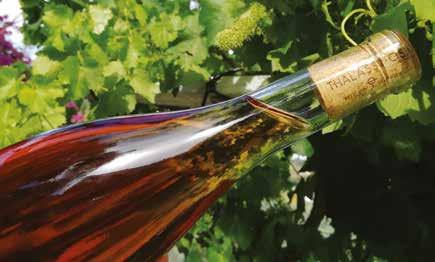
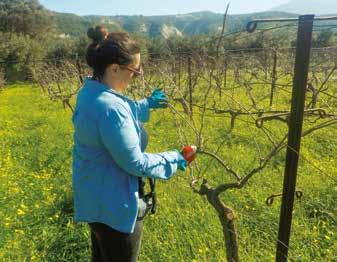
variety’s authentic expression and the place’s character”.
As for his philosophy: “My aim is to make a wine with soul that carries the memory of the place, the dirt from the fields and the sweat of the winegrowers, as well as the truth of each harvest! At our winery, we choose to work manually, using minimal electricity and adopting a zero-waste philosophy. We believe in minimal or zero intervention. Wine should be born, not made. We respect the land and allow the grapes to express themselves freely, without masks”.
The Thalassinos family holds wine tastings daily by appointment only. Visitors can sample the estate’s wines alongside produce from the estate and other small producers.
In fact, the most adventurous guests can learn about the production process and even take part in it!
thalassinoswinery.gr
Instagram: thalassinosmicrowinery
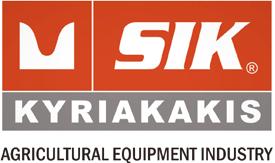


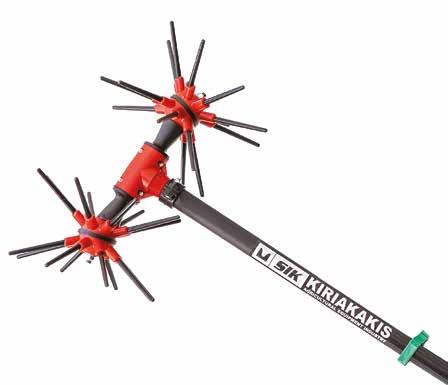

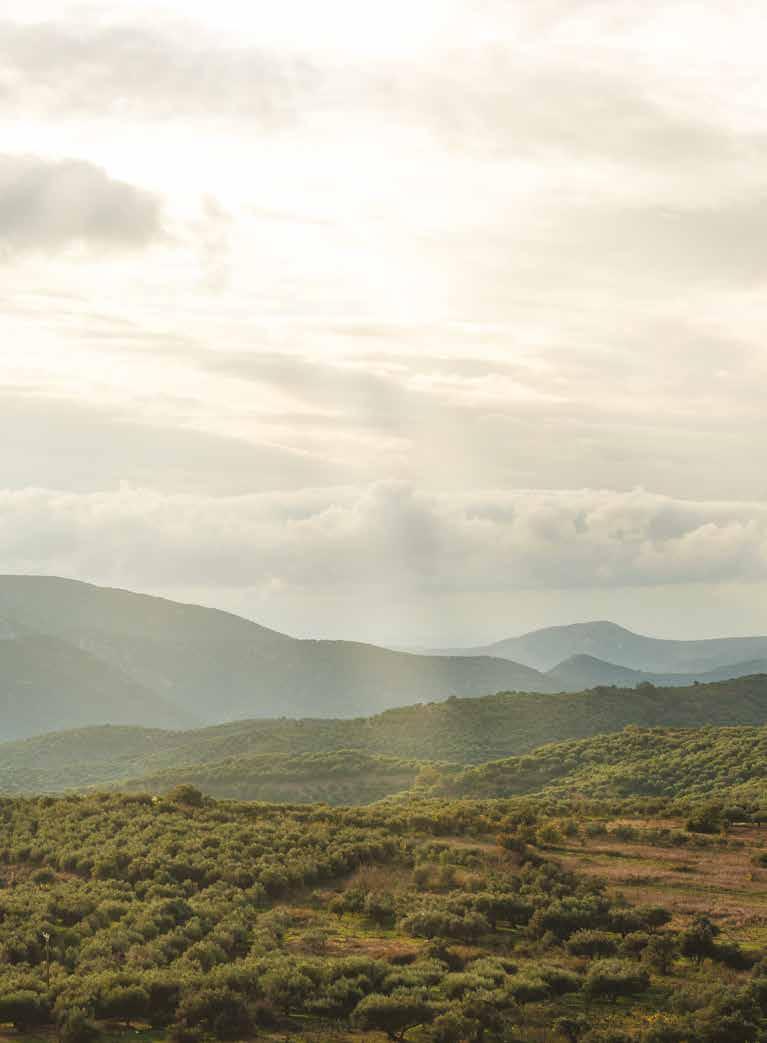

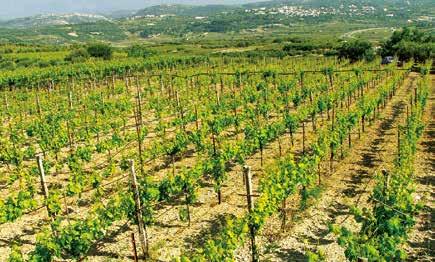
τολμηροί
thalassinoswinery.gr
Instagram: thalassinosmicrowinery
Γιώργος
Από
stilianouwinery.com
- Stilianou Winery
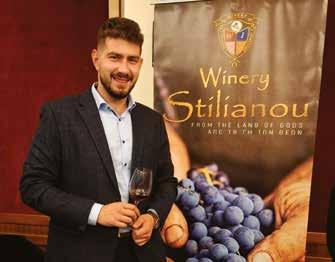
Since 1922, the Stilianou family has cultivated the unique indigenous varieties of Vidiano, Thrapsathiri, Vilana, Kotsifali and Mandilaria in the privately-owned, certified organic vineyards just a few kilometres south of Knossos in the village of Kounavi.
Therefore, for Giorgos Stilianou, working with wine was a natural progression -he studied the subject that he and his ancestors loved. “I followed in my family’s footsteps -I am essentially the fifth generation of wine producers. I grew up in the vineyards and I have many childhood memories from there. In order to build on this family tradition, I studied oenology at the University of West Attica, qualifying as a sommelier with a Level 3 WSPC qualification”.
What special characteristics do these vines have that make the wine so memorable? “All of our vineyards and wines have been certified as organic since 1999. Following this path enables us to respect both nature and people. At the same time, we only cultivate Cretan grape varieties” says Giorgos Stilianou.
His philosophy on wine is also evident in the glass: “We firmly believe that every place has its own unique characteristics. And, somehow, we made the decision to resist the uniformity and standardisation of tastes that globalisation has brought about. The result speaks for itself: we produce wines that showcase the distinctive qualities of local varieties and our country”.
The daily wine tastings they organise offer a holistic experience. Once you reach the top of the hill, the view is well worth the effort, and the taste and aromas of the wines transport you to the past and the present of wine culture.
stilianouwinery.com
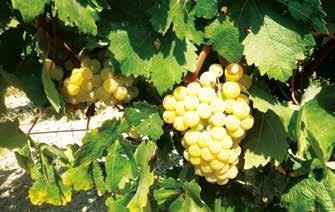









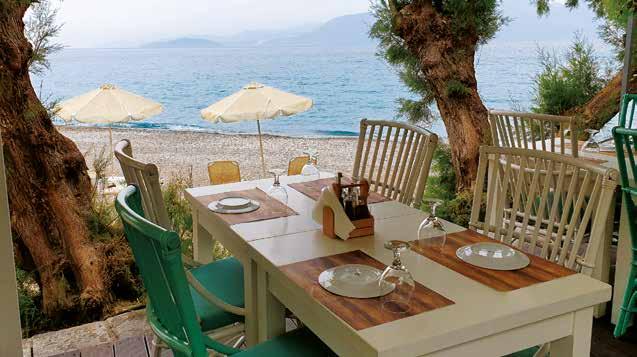
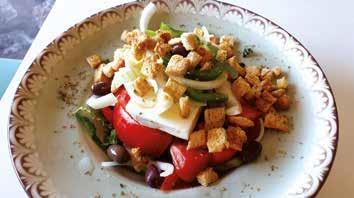
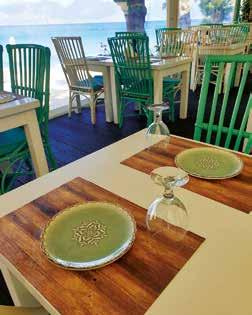
Enjoy delicious meat and seafood on bbq, mama’s cooking of local specialties, an exquisite wine selection and a magical seaside... Family owned, serving with love, since 1978. Your eating place in Agios Nikolaos.
5 Akti Pagalou, Kitroplatia, Agios Nikolaos, tel. 28410 83168
Facebook: FarosFamilyRestaurant
ΣΥΖΗΤΑ
WE ARE DISCUSSING WITH THE PROFESSOR OF ARCHAEOLOGY AND DIRECTOR-GENERAL OF THE ACROPOLIS MUSEUM ON THE OCCASION OF THE EXHIBITION, “ARCHAIC ELITES: WARRIORS AND PRINCESSES”, WHICH IS BEING HELD AT THE MUSEUM OF ANCIENT ELEUTHERNA TO CELEBRATE THE 40TH ANNIVERSARY OF THE START OF THE EXCAVATIONS.
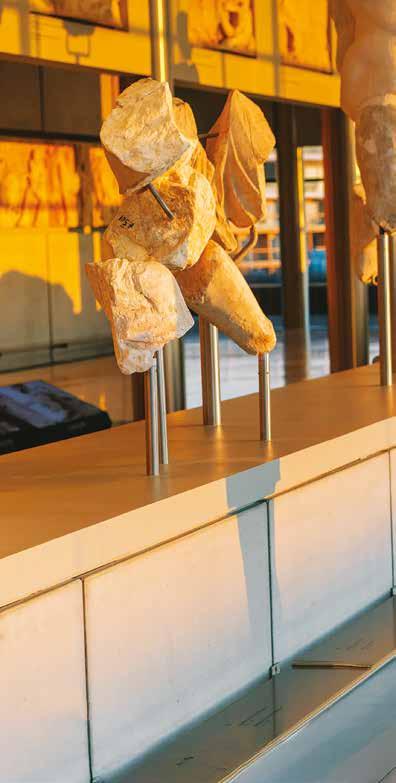
An extremely important exhibition led us to meet Nikos Stampolidis, the eminent Professor of Archaeology and Director-General of the Acropolis Museum. He honoured us by talking about his experience at the great archaeological site of Eleutherna, 40 years after his first excavation there.
Mr Stampolidis, how did you decide, really, where to start your excavation?
When I began the excavation on 8 September 1985, the workers arrived at the site where we intended to start digging very early in the morning at six and a half o’clock, before me and the students. There were three plots of land there; an uncultivated field,
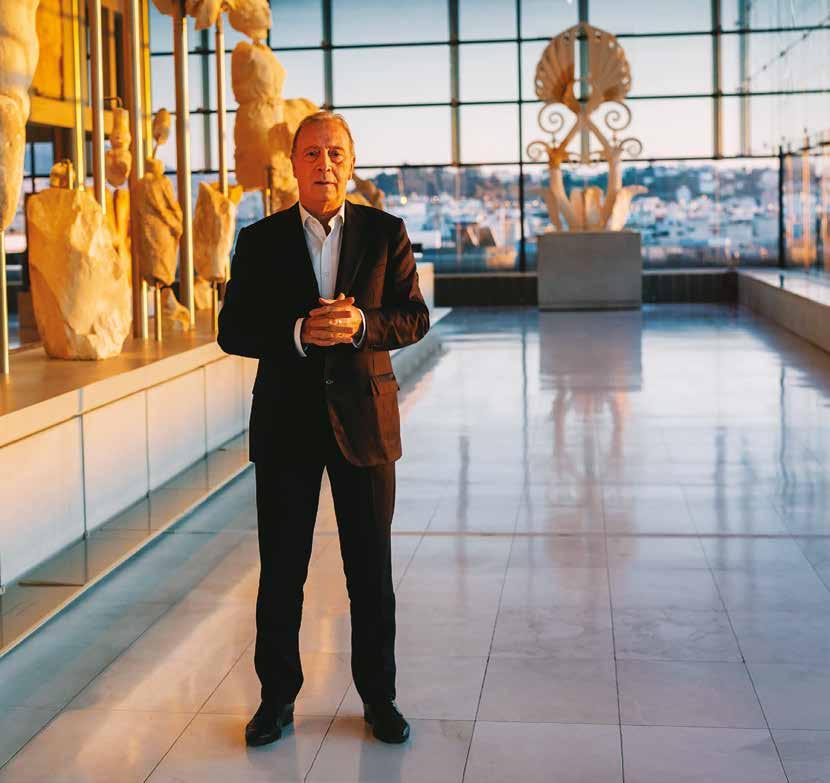
a vineyard and an olive grove. They thought it would be a good idea to start digging in the uncultivated, abandoned field before I arrived with my students.
When I arrived, I told them that they could never start digging without either the chargé d’affaires students, who act as my eyes, or own presence.
So, to avoid disturbing the adjacent vineyard, we went to the olive grove instead. As you ascend or descend the hill, different levels are created in the form of terraces, which are known as “pezoules” in Crete. We decided to dig under an olive tree. Many people asked me specifically why I chose Section A. I explained that on these terraces, which were made using stone retaining walls to WAVE
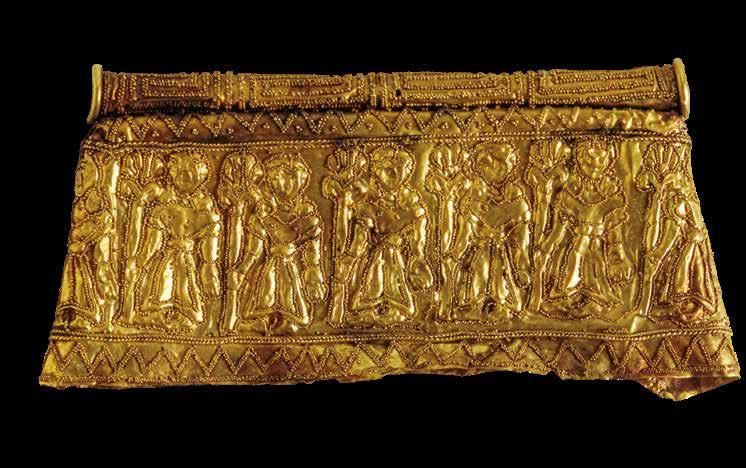
Regolini-Galassi.
Gregoriano Etrusco.
675-650
Regolini-Galassi.
Gregoriano Etrusco.
Above: Gold pendant with depiction of seven female figures dancing in an open-air sanctuary. 675-650 B.C. Regolini-Galassi Tomb The Vatican Museums, Gregoriano Etrusco Museum.
Right: Bronze cauldron (ritual vase for liquids) and stand. Beginning of 2nd quarter of the 7th cent. B.C. Bernardini Tomb Rome. National Etruscan Museum of Villa Giulia.
Below: Phoenician bowl. 675-650 B.C. Regolini-Galassi Tomb. The Vatican Museums, Gregoriano Etrusco Museum.
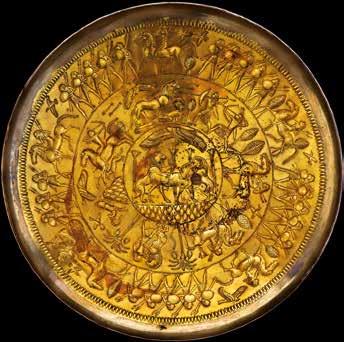
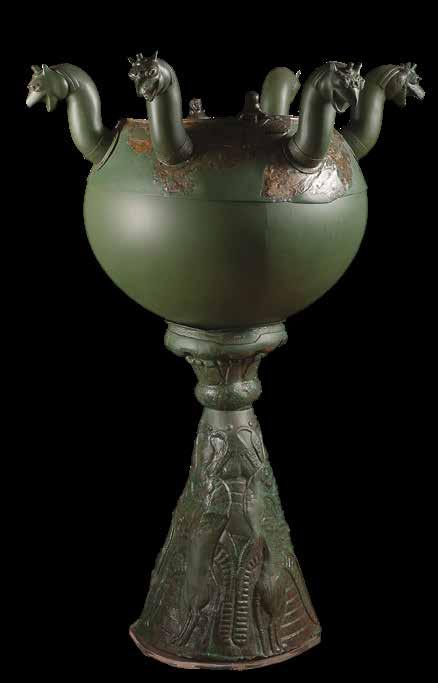
Culture has the power to unite us. It unites when it is not dogmatic
hold the soil and allow crops to be planted, in some places the dirt appeared yellowish, while at the base of the modern retaining walls, the dirt was black-grey. I explained that if you touch the dirt and it doesn’t leave a smudge, it could be rotten leaves from olives or something similar. However, if you touch this black dirt and it leaves a smudge on your hands, it will mean burnt wood. In my opinion, this could indicate either a wooden roof that has collapsed due to fire or the burning of the dead, as Homer tells us. That’s why, with the first excavation of Section A, we came across the crematorium. In fact, it was in the kiln where the Eleutherna warriors burned for over 200 years. As heroes who defended the city, the men, aged 17-18 to 50, should not be consumed by worms, but rather burned so that their smoke would go to the gods. And, of course, to follow the procedure for making a pyre that Homer describes in great detail in the 23rd rhapsody of the “Iliad”. The particular pyre described by Homer, the one of Patroclus, which was built by the two Cretan kings, Idomeneus and Meriones. Therefore, this process resulted in the first discovery of a crematorium located 10-15 cm below the ground’s surface. This is how one decides what to do. Half of correctly interpreting something comes from observing it and thoroughly excavating the space around it. Of course, a whole-surface survey had been carried out across the entire hill the previous year. This hill essentially encompasses all of ancient Eleutherna and measures approximately one and a half kilometres from north to south and one kilometre from east to west.
What impact does the designation of the Minoan Palace as a UNESCO World Heritage Site have on Greece?
Firstly, it was a huge success because our country has been trying to achieve this for years, with the help of the archaeological services, the Ministry of Culture and many other bodies. However, there have always been obstacles and questions from UNESCO. As a result, the file containing information on all the Minoan Palace Centres was increasing in size and growing over the years. Besides, let us not forget that there are six palaces in total, not only Knossos and Phaistos; but also Malia, Zakros, Kydonia and Zominthos. For the first time, the Minoan civilisation, one of the earliest and most important in our country, has been included on
Just as a surgeon operates on the human body, an archaeologist excavates the body of the earth, exploring it not only in physical space, but also in time
UNESCO’s list of protected monuments. This is, therefore, an extremely important achievement.
In what ways are today’s civilisation and modern people connected to the ancient Greek civilisation? Firstly, I liken archaeology to medicine, or rather, to surgery. Just as a surgeon operates on the human body, an archaeologist excavates the body of the earth, exploring it not only in physical space, but also in time. Therefore, time is something very relative. Since each generation spans about 30 years, and the fifth century of Pericles was about 2,500 years ago, we are only 80 generations apart! You know, there is no past without the present and no present without the future. In Greek, the words for “life” and “death” contain the ideas of “defeat” and “future”, respectively, in their morphology. An unknown future. Therefore, everyone can feel however they wish -after all, Isocrates said “Greeks are those who partake in Greek education”. In other words, those who receive an education in the Greek style. How someone embraces it and incorporates it into their life is up to them. After all, what exactly is the Mediterranean? It is a sea, a lake if you will, located amidst three continents: Europe, Africa, and Asia. As Lefebure says “For me, the Mediterranean is routes, not just sea routes, but land routes too”. Rivers that lead to the sea are like roads starting from the mountains and going all the way down to the coast. Therefore, when people travel and communicate, it is not only about trade and products; their horizons are broadened and they gain new knowledge and insights into ways of life -even diet- but also ideologies, faiths and beliefs. In short, there are always precipitating elements of the Byzantium antiquity and so on in our modern culture.
Given that your exhibition brings together many countries and cultures, do you think culture could act as a vehicle for peace in such a turbulent era as the one we are living in today?
You are obviously talking about the first quarter of the 21st century, which we have already lived through. It was a time of economic and human crises, warfare and even pandemics -let’s not forget that. It is indeed a difficult time, and I agree that culture has the power to unite us. It unites when it is not dogmatic, and the ancient Greek culture -I would like to believe the same goes for the more recent culture- is an anthropocentric one. The ancient Greeks created the gods in the image and likeness of humans themselves. The country’s geography also plays a role -mountains, valleys and regions separated from each other, as well as rocky islands of various sizes. In fact, Crete was essentially a continent at that time, so the environment itself gave rise to diversity and exploration. In other words, it was a necessity, the mother of progress. The people who lived on an island had to find a way to communicate in order to improve their lives. This also led to a different way of thinking compared to empires such as the Assyrian and Egyptian, and others in the Near East. It led to democracy. We should also mention that ancient
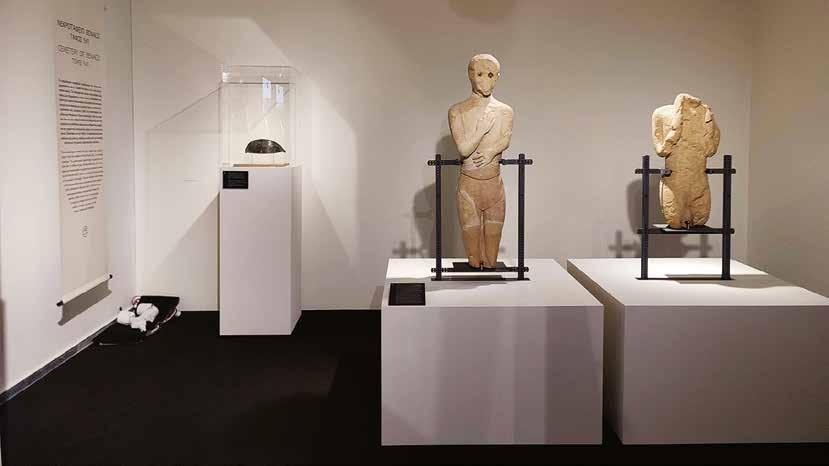
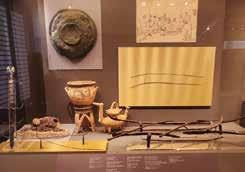
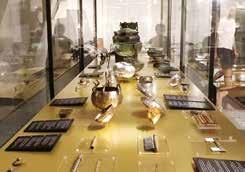
From the exhibition, “Archaic Elites: Warriors and Princesses”.
Greek religion was not dogmatic. You could believe in whichever god you wanted, including foreign ones.
What would you ideally like visitors to remember from this exhibition? Here, I was faced with a dilemma if I wanted something worthwhile to happen. What should I celebrate for the milestone of 40 years? What should I bring back from oblivion? Achievements, finds, human experiences, existential issues and questions. What of all to choose? Because it’s not just about digging up the earth. While you’re digging up, you’re digging into yourself. As the ancient Greeks used to say “dig within”. The point was not only to “find things”, but also to teach patience and perseverance in pursuit of a goal. Do you know what the word “amartia” (sin) means? The verb “amartano” (to sin) means that I am not achieving my goal.
So I can’t devote myself? Or I’m going astray. And so I fail to achieve my goal. So, I have been
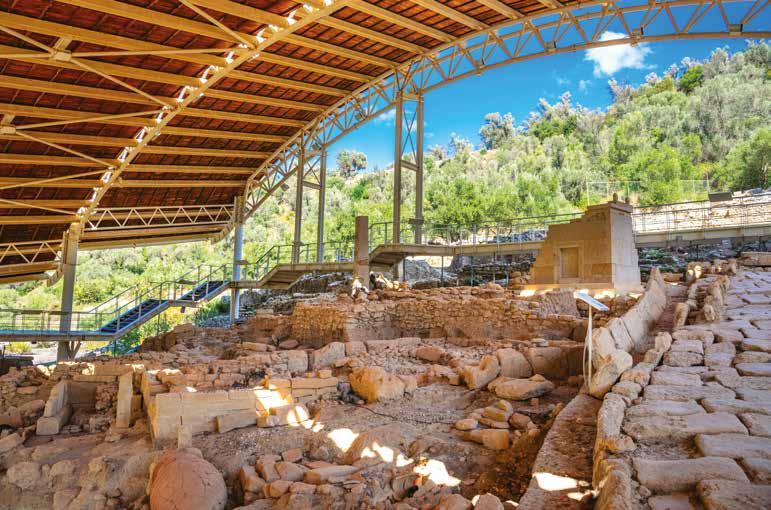
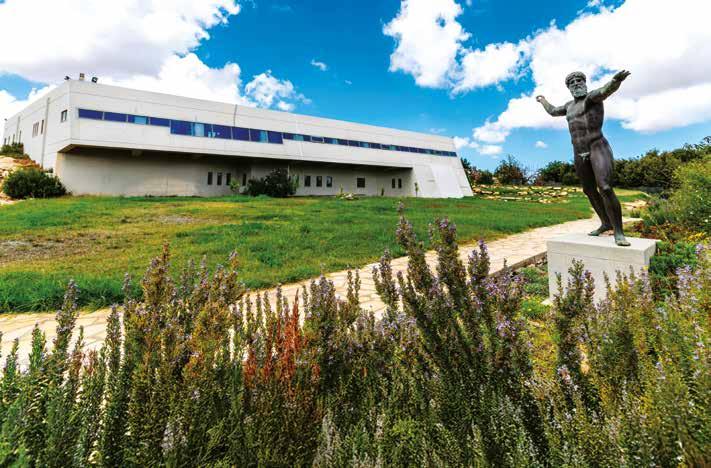
As these 40 years of excavation have shown us, Eleutherna was an open society
pursuing my goal for 40 years. Firstly, I believe that excavations should not be carried out just to produce results, write articles or books, and therefore advance one’s academic or professional career. For me, archaeology is a public good. You must believe that what you discover and how you interpret it should be offered to others in the best way for them to understand it. And to learn and benefit from it. I wanted Eleutherna, specifically Eleutherna, with its findings from the Early Bronze Age (the 3rd millennium BC to the 14th century AD), to receive what it deserves. I did not want Crete to linger in its Minoan past, but to embrace its Homeric, Geometric, Archaic, Classical, Hellenistic, Roman, Early Christian and Byzantine eras too; and this can be seen exactly in Eleutherna. I am currently excavating with my colleagues the early Basilicas from the time of Justinian! Therefore, if someone visits Crete and sees one of the Minoan palaces, they may not need to see all ten. However, if they want to see what happened after the fall of the Minoan and Mycenaean centres, and they come to Eleutherna, they will see what came next. I didn’t want Eleutherna to be just a dot on an archaeological map; I wanted it to be a destination in its own right. For the celebration of its 40 years, I wanted to show the world how Eleutherna participates in the wider Mediterranean landscape. Like an eagle overlooking the Aegean Sea, from its two ports to the west and east. Therefore, I connected it to Cyprus, the eastern Mediterranean, Phoenicia, Egypt, Asia Minor, the Aegean Islands, the Peloponnese, Attica, Sicily, with Magna Graecia, Etruria, Andalusia and the Iberian Peninsula. Because, as these 40 years of excavation have shown us, Eleutherna was an open society. So why did it become famous, I thought. Because the finds at the Orthi Petra necropolis essentially verify Homer and illustrate the “Iliad”. It is no coincidence that in 2010, the magazine Archaeology, included it in the top ten of the world for “princesses”, i.e. aristocratic women of status or priestesses. And I, for the 40 years of celebration and archaeology, I wanted to present the Warriors and the Princesses in all their glory.
TheexhibitionattheMuseumofAncientEleuthernaopenedon29June and will run until 19 October 2025.
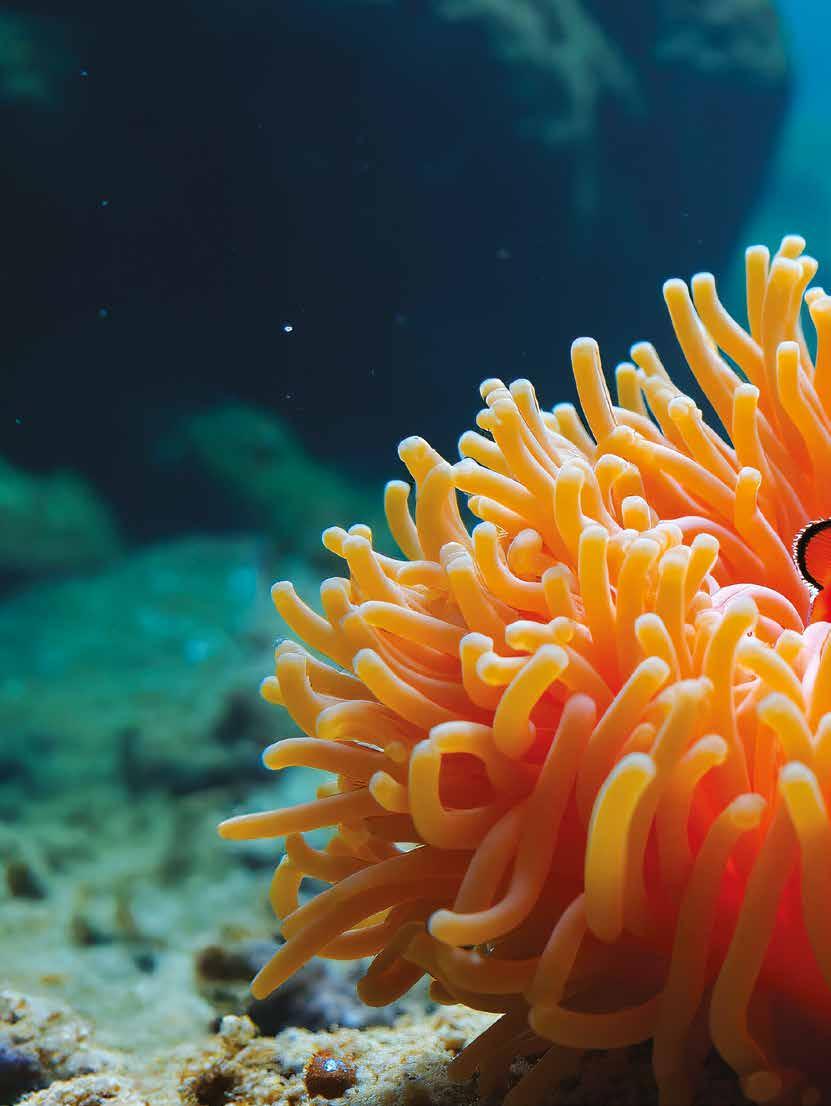

ΒΡΊΣΚΟΝΤΑΣ ΤΟΝ ΝΈΜΟ (και άλλα 1.300 θαλάσσια
A MAGICAL PLACE WHERE PEOPLE MEET THE MARINE WORLD, A CENTRE FOR THE RESEARCH AND CARE OF INJURED CREATURES, A PLACE OF AWARENESS AND KNOWLEDGE: THE AQUARIUM OF CRETE IS MUCH MORE THAN ITS NAME IMPLIES. ΜΑΓΕΥΤΙΚΟΣ
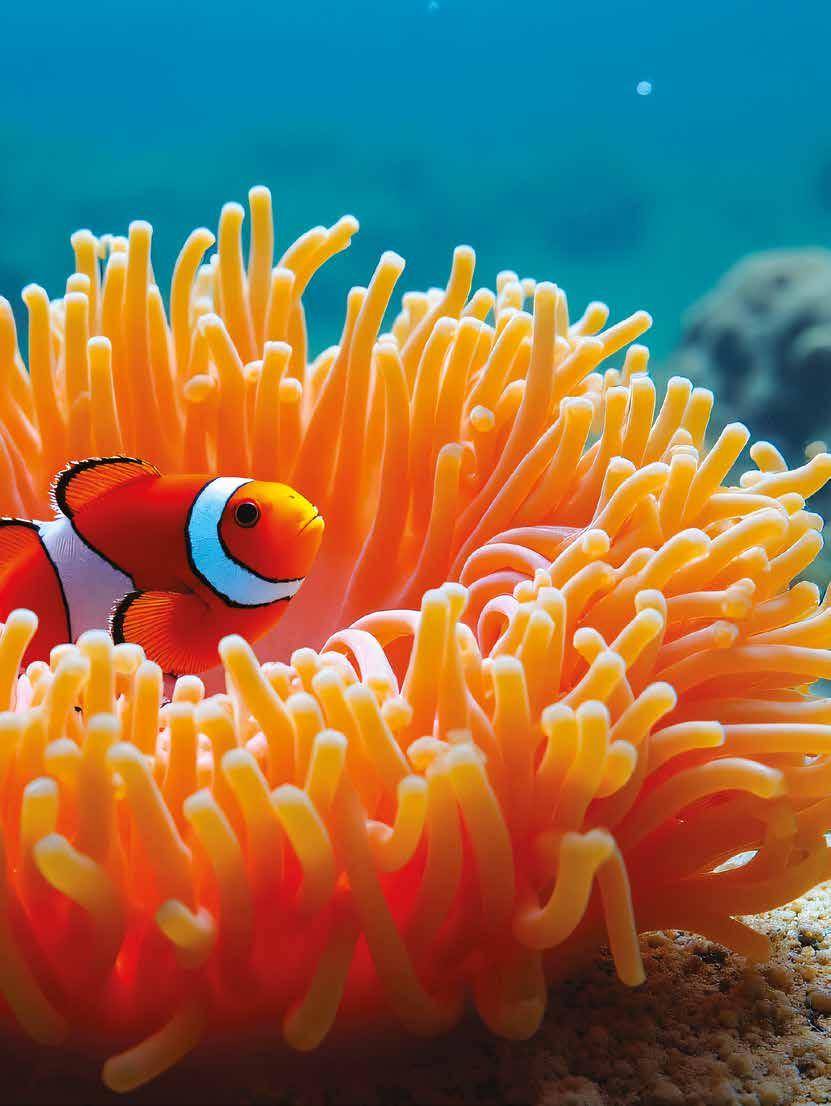







Would you like to see a shark up close without feeling scared? Be mesmerised by a school of luminescent jellyfish and observe turtles being cared for by experts until they are returned to the open ocean?
For 25 years, the CRETAquarium in Heraklion has been offering visitors the chance to experience the magic of the marine world and the opportunity to admire over 1,300 fascinating creatures. It is the largest aquarium in Greece and one of the largest in the Mediterranean. It has been operating as part of the Hellenic Centre for Marine Research (HCMR) since it opened to the public in December 2005. It is located in the north-western part of the former American base in Gournes, Hersonissos, and is part of THALASSOCOSMOS -the largest centre for marine science and the promotion of the Mediterranean marine world. The CRETAquarium focuses on presenting and promoting
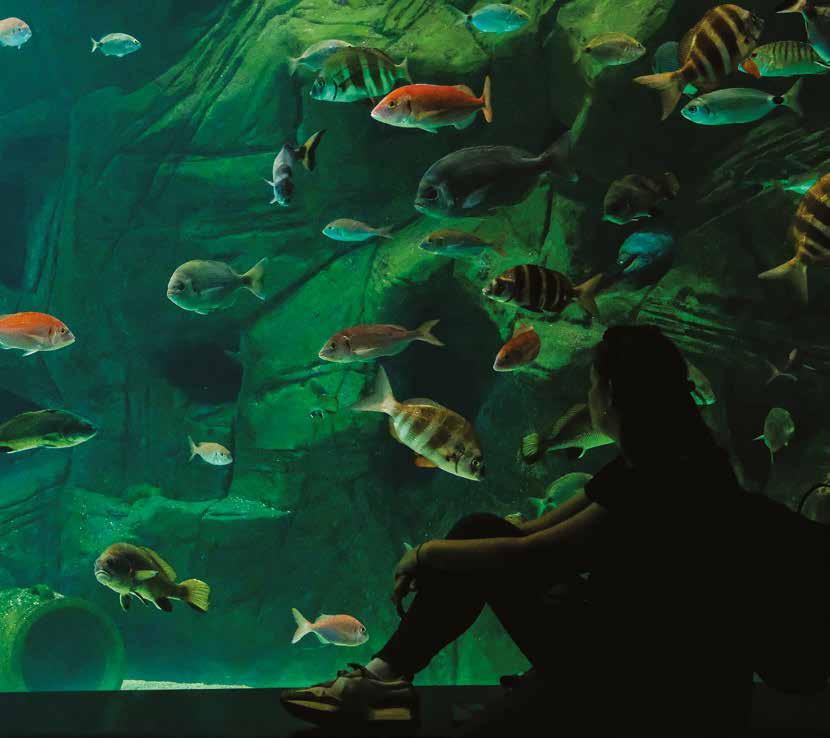
Mediterranean species and habitats, and welcomes a large number of visitors from around the world every year. It houses many wonderful creatures from different Mediterranean species in 62 tanks of various sizes, with a total volume of 1,800,000 litres of seawater. From the large predators -sharks- to the tiny crabs and the spectacular jellyfish, the variety of marine species in the Mediterranean is showcased against the backdrop of the Cretan Sea’s underwater landscapes.
Τhe Aquarium also draws attention to tropical Red Sea and IndoPacific fish that could colonise the Mediterranean, as well as to those that have already entered through the Suez Canal and settled there.
As part of the THALASSOCOSMOS park (the facilities of the HCMR in Heraklion, Crete), the Aquarium of Crete is the largest marine research, technology and leisure complex in the
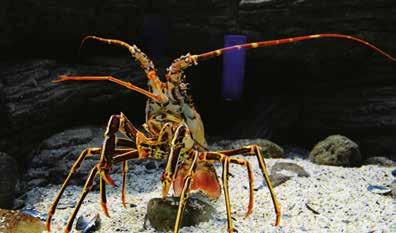
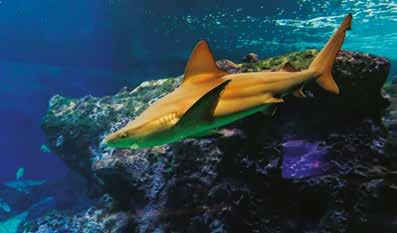

Mediterranean. It bases its operations and development on scientific knowledge and discoveries in marine science. It has clear objectives and is dedicated to scientific research and preserving the marine resources of the Mediterranean Sea. It also has experience in hosting the many visitors who arrive from Greece and abroad every year.
Its aim is to disseminate and popularise the knowledge and innovation produced by the HCMR and the global marine research community. The unique spectacle it offers not only fascinates, but also informs, educates and raises public awareness.
At the same time, it stimulates thought and encourages reflection on the protection and sustainable management of the Mediterranean marine ecosystem. It goes beyond the surface level to offer a literal and figurative in-depth view. Research into the behaviour and survival of marine species that can adapt to controlled conditions continues at the Aquarium of Crete, while ensuring excellent access for researchers and young scientists, making it an incubator of innovation.
The experienced and trained staff convey knowledge about the marine environment in an appropriate, interactive and

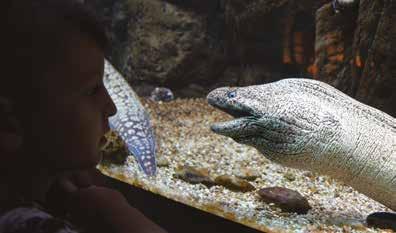
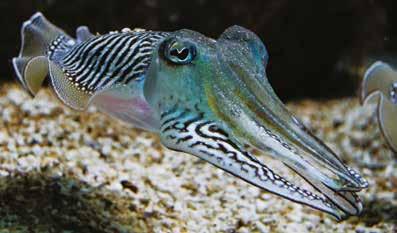
way to all age groups through the design and implementation of innovative educational programmes.
Besides, the Aquarium of Crete aims to travel all over Greece, making maximum use of digital technology to share scientific knowledge with the educational community through new interactive educational programmes and experiential learning.
The Aquarium does not treat the creatures of the sea as exhibits; rather, they are considered integral members of the ecosystem and is always there for them in times of need. Particular effort is made to care for and research endangered and protected species, such as sea turtles. The Aquarium cooperates with the competent authorities, the local port authorities and municipalities, as well as non-governmental organisations, in cases where injured or sick animals are washed ashore and undertakes to transport and care for these animals in its facilities. Once they have been treated, animals that have not been permanently affected in a way that threatens their survival are returned to their natural environment. The process of returning rehabilitated animals to the sea is often carried out in front of an audience, giving aquarium staff the opportunity to educate people about the dangers that human interference poses to the marine environment.
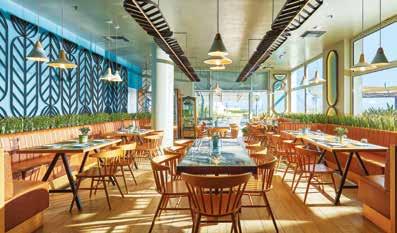
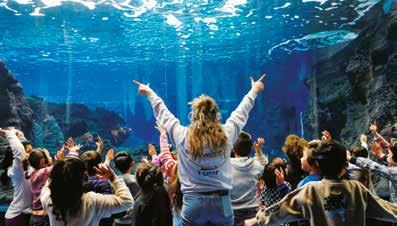
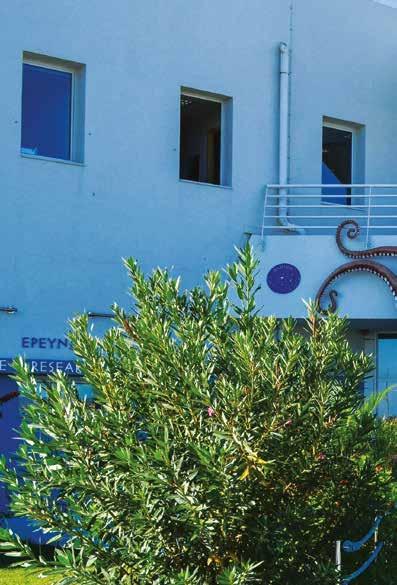
The Aquarium of Crete is an ideal facility for conducting marine research on living organisms. It is well suited to hosting a wide variety of species, many of which have not been studied extensively. Scientific staff and HMRC scientists carry out studies in its facilities on issues related to the impact of climate change on marine organisms, as well as the recording of growth rates, reproduction, behaviour and life cycles of fish and other organisms. Many species breed in the aquarium, helping to enrich its tanks with organisms born there. Recent spawns include clownfish -like the beloved “Nemo” from the popular animated film- as well as tropical species such as cardinalfish, seahorses, grey triggerfish, jellyfish, etc.
The Aquarium of Crete’s unique virtual reality experience, set in a specially equipped room, is designed to amaze every visitor! We have the opportunity to observe a 24-metre-long whale up close and find ourselves surrounded by a school of luminescent jellyfish on a coral reef. To explore the dark depths of the ocean with a special lens and discover some of the strangest and scariest species that live there. In other words, to become part of the marine world, developing a deeper and
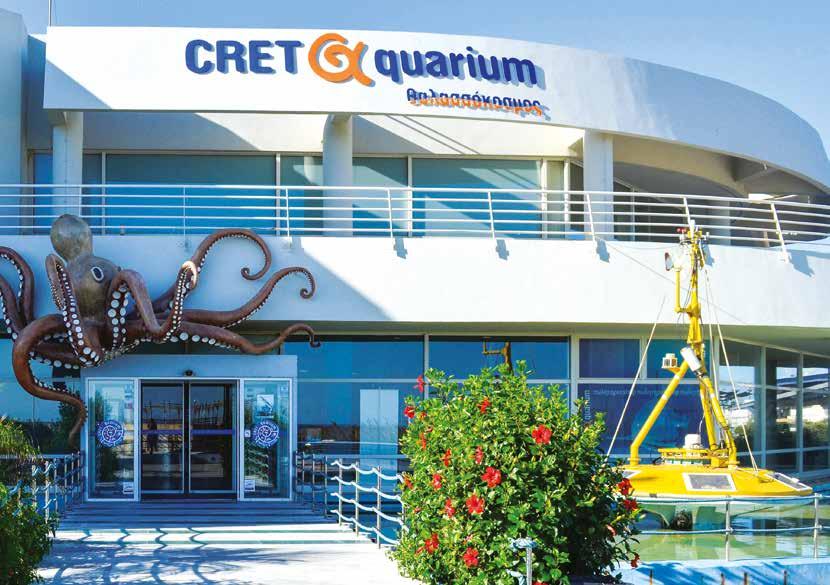
more meaningful relationship with the aquatic element! It is also worth noting that the Aquarium of Crete’s premises are available for various social events for all ages, as well as conferences and meetings. For younger visitors, the Aquarium organises children’s parties featuring unique, educational and experiential games, offering an unforgettable, high-quality experience.
The Aquarium of Crete adheres to ethical guidelines for the welfare of its resident marine organisms, providing an environment where these creatures can interact with humans. The implementation of targeted awareness actions provides multiple benefits, both for visitors who can study, observe and learn about marine organisms, and for the organisms themselves, who, thanks to the care they receive, are able to increase their life expectancy and reproduce. Particular attention is paid to raising public awareness of species that are threatened not only by human activities, but also by other factors such as climate change. By raising awareness, we can empower citizens to substantially influence the protection of organisms and the aquatic environment, and life on the planet in general.
ΩΡΙΜΟΤΉΤΑ ΚΑΙ ΓΟΉΤΕΙΑ
THE CRETAN-BORN ACTRESS HAS SUCCESSFULLY OVERCOME EVERY CHALLENGE IN HER ACTING AND SINGING CAREER. SHE TALKS TO US ABOUT THE CHALLENGES OF HER ART AND MOTHERHOOD.
PHOTOS: ANDREAS SIMOPOULOS
STYLING: SOPHIA TSAKIRI
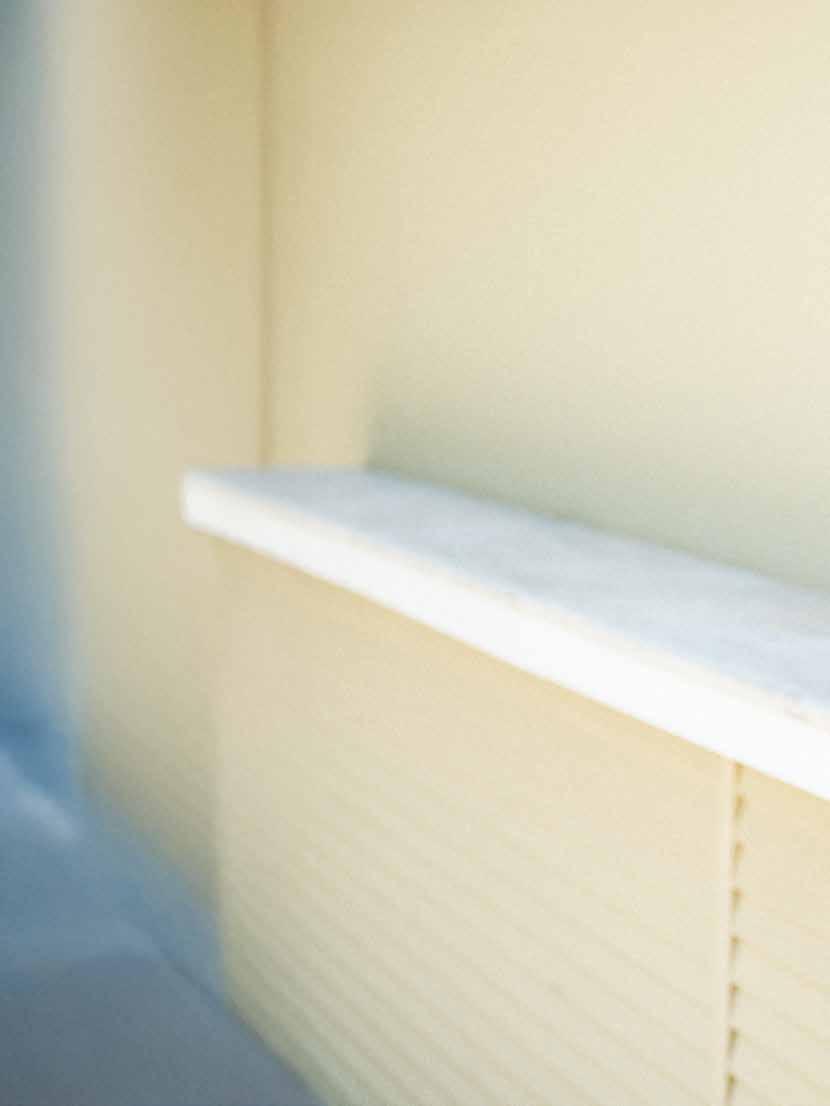
HMORPHE
MAKEUP / HAIR: MORPHE
Κaterina Papoutsaki is not only beautiful in a special, Mediterranean way, but she is also kind, down-to-earth and genuine. She has matured in her priorities and decided to take risks and challenge herself in projects that she believes will advance her art and lift her spirits.
Where will we be seeing you this year? Have you made any plans yet?
We have started rehearsing a new musical by Karamouratidis and Evangelatos, which is to be staged at the Acropol Theatre and directed by Smaragda Karydi. I’m very happy to work with her because we played together in the “Greek National Team”. I love her dearly, she’s an incredibly talented person and I’m really happy we’ll be working together again. I’m also very happy to be doing a musical, with comedic elements.
You do many different things, adapt easily and cope extremely well. Does this variety stem from character, circumstance or choice?
Generally speaking, I would say that I am a flexible person. I am always striving to evolve. I like trying new things and having new experiences, which of course on so many levels stops when you become a parent -and that’s okay, but at least at work I can still
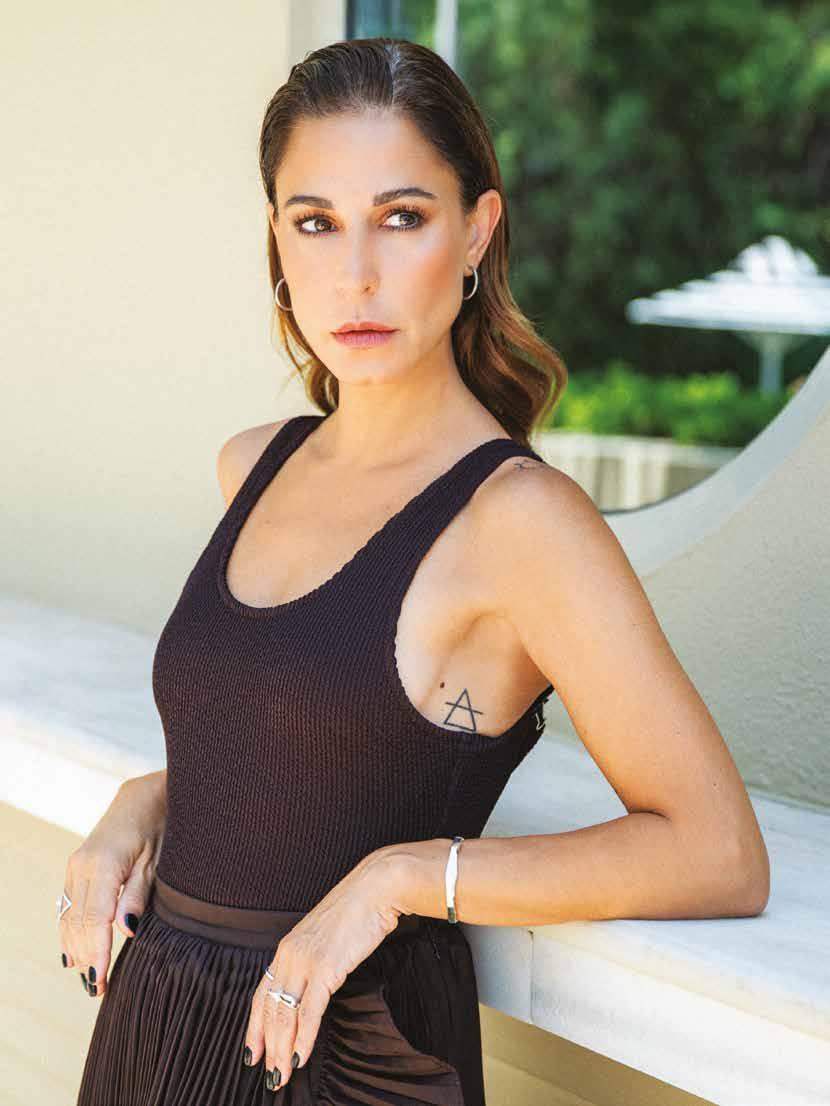
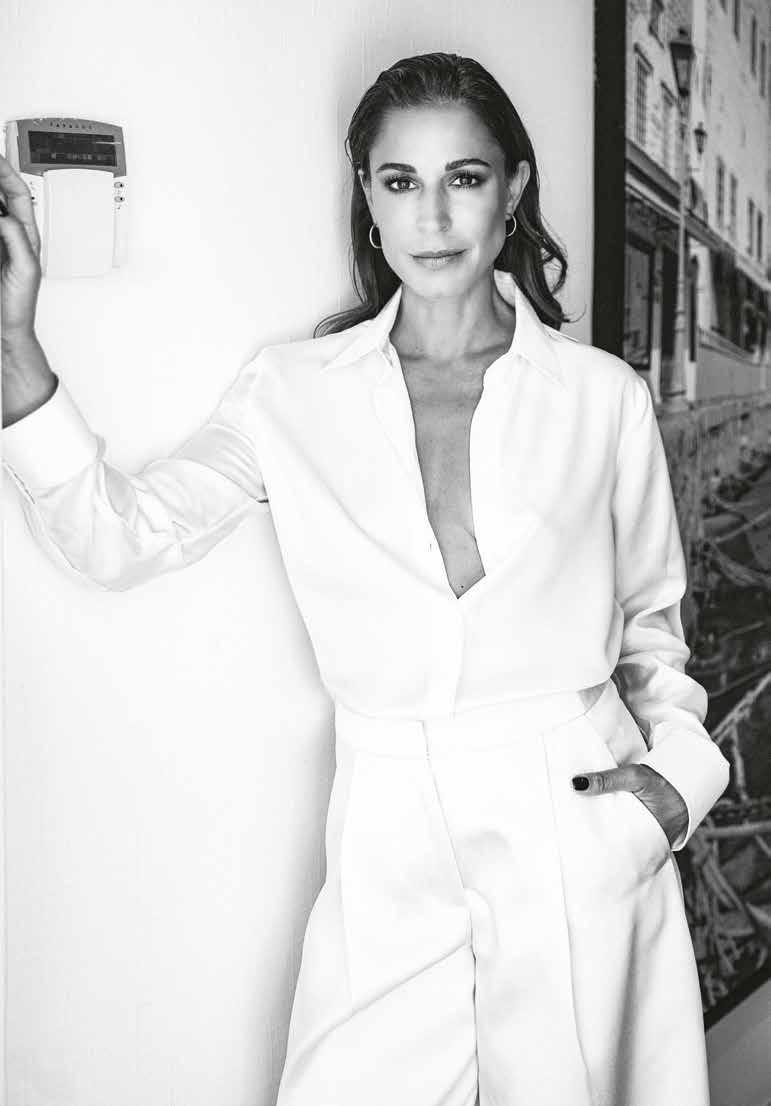
do that. Although, I also choose to try new things and have new experiences with my children. However, as an actor, I can say that I definitely enjoy challenging myself by trying different things. I am not afraid of it; quite the opposite, in fact -it is something I actively seek out. For example, Evangelismos was a musical but with a very different approach. Last year, I performed in “Fear” in the Downstairs of the Neos Kosmos Theatre, which was completely different to anything I had ever done before. It was essentially a piece of work that we made ourselves. Its structure was based on experiments involving the camera on stage, which yielded a very particular result. Admittedly, it was a very interesting process that I experienced with Giannis Papadopoulos and our director Marios Kakoullis. It was very liberating and creative.
Both in “Evangelismos” and in “Fear” you created very strong and difficult roles. After the show, do you find it easy to leave them behind? I can’t say that they don’t affect me, particularly when I’m seeking them out and trying to figure them out. In other words, I will think much more deeply about things I had not previously considered or I will draw parallels. You know, in seeking to step somewhere emotionally you discover your own pieces of potential trauma. This whole process can awaken memories, but it can also help you to solve issues that trouble you and feel relieved. In fact, “Evangelismos” touched me very much, I must admit, because the last few years have not been easy for me. That is to say, it was difficult and heavy for me on the one hand, but redemptive on the other.
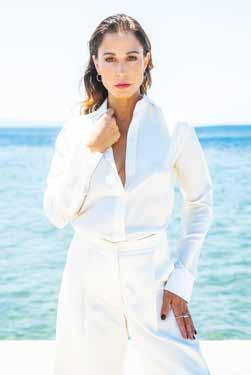
What is the most challenging aspect of this job? When people do not get along harmoniously. For me, it is very important to strike a balance, not to exert power and to foster an environment of hard work. That’s how I am: I am disciplined, but in a democratic and healthy way that promotes respect for the individual. The aim is to create groups based on love, unity and solidarity, rather than antagonism and jealousy, which I cannot stand. I can say, however, that I have not been particularly affected by them. Because I am the kind of person I am, I contribute to a group’s positive atmosphere. Also, I think that people only show their claws when they feel threatened. Personally, I don’t consider backing down to be defeatist; it’s a sign of emotional intelligence. I’m not interested in pushing forward; I value calmness and cooperation more. After all, “first” and “forward” may or may not come up. We are here to evolve, not just to push forward.
As an actor, I definitely enjoy challenging myself by trying different things
What has changed your work over the years? Where do your major changes lie?
I feel like everything has come together harmoniously. However, I can say that the TV series “Our Best Years” was a major moment in my professional life, as almost no one had a job during the pandemic, yet we were still working. So, I was very lucky both mentally and artistically, because it was an excellent job. We also felt useful and that we gave joy and hope at a time when we were stuck inside, feeling dark, frustrated and stressed.
Is singing a talent you’ve had for a long time, or did you discover it later in life?
I started singing with my dad on the guitar from a very young age. I stopped for a while when my parents divorced, as I was sad, but I started again when I went to drama school. I actually started taking classical singing lessons a while ago, and I’ve continued ever since. I changed teachers and tried different genres before ending up with Giannis Skoulas, with whom I have been working on vocals for many years. It’s something on which I’ve worked very hard.
Can acting and singing ever be compared?
No, they’re completely different and I can’t compare them at all. Singing is something different that I really enjoy, and I can combine it with many other activities. I have performed live at Sfiga and Stavros tou Notou, as well as at other concerts. I participated in the tribute to Greek cinema at the Odeon of Herodes Atticus, and generally take part in interesting projects as they arise.
You have two sons -one aged six and one aged twelve. How would you describe your relationship with your children and what are your anxieties about them?
I feel anxious about the amount of screen time children have. But this is the reality of today’s world, and it’s not easy to completely cut this out. I mean, the more you forbid some-
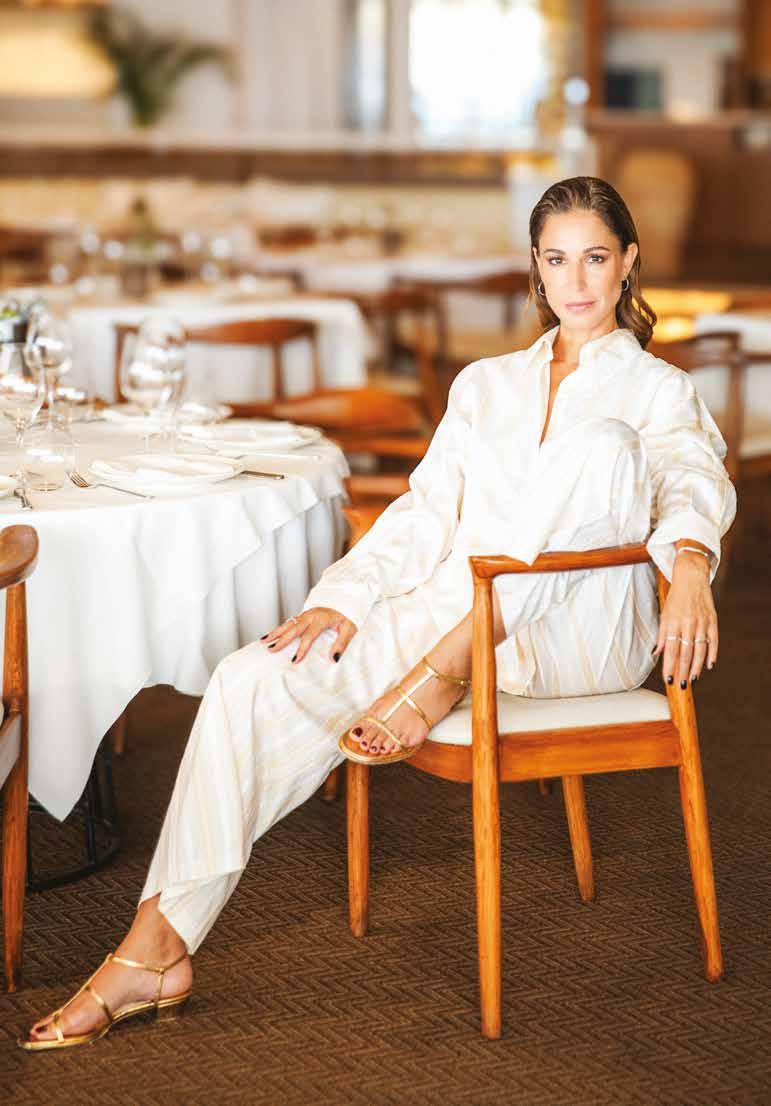
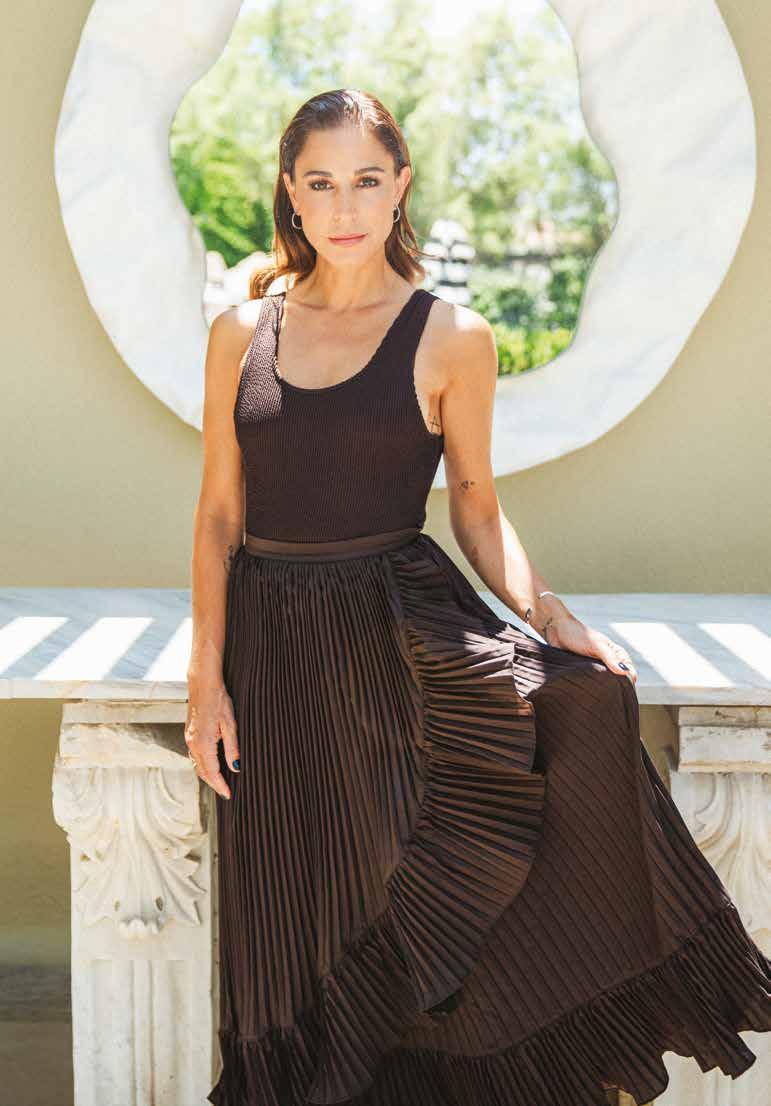
thing, the more idealised it becomes. Moderation is necessary, but the most important thing is encouraging conversation. To make your children as strong as possible, so that they are not afraid and do not feel the need to seek confirmation in the wrong way, in other words, to look after their mental health. So that they feel adequate and self-sufficient. I think the most important thing for a parent is to be able to trust their child. How do you build a relationship with him so that he feels comfortable talking to you? So far, I feel that this is something I have earned -and I stress “so far”. I talk to him very honestly, and we communicate openly and frequently. Even for my own experiences, failures and mistakes. I also tried to explain to him that what you see is not necessarily the truth. The image someone presents is not necessarily an accurate reflection of who they are. There are things behind it that we don’t know, and it’s good not to judge someone based on the surface. We should show solidarity with others, put ourselves in their position, and not accept or unwittingly engage in bullying. We should be careful and sensitive towards others. We spend a lot of time talking about friends and their relationships. I don’t think there’s anything more important than him telling me something and then saying, “Don’t discuss it with the other mums. I’m telling you because I trust you”. It is also important that they feel you are there to support and encourage them, not to judge them.
Do you often have to miss spending time with them because of work? No! I don’t miss out on time with my children because I choose not to do too many things at once. That is, when I appear on television, I do not perform in theatre or I only do it for a while like last year, which only lasted one month. I don’t do the full theatre season anymore, which runs from Wednesday to Sunday. Next year, we will play on Mondays and Tuesdays. I have turned down many creative and beautiful opportunities because spending time with my children is much more important to me. Clearly, it is a matter of choice and priorities. I don’t negotiate on this, and most producers now know that I won’t be able to because of the children.
You are from Sitia. What does Crete mean to you?
I spent every summer of my childhood in Crete. Swimming, carelessness, walks… I always remember laughing and having fun while growing up. I realised how special the people of this beautiful place are. They are generous, open-hearted and extremely hospitable, and I don’t think you’ll find anything similar anywhere else on earth. I believe that everyone who visits Crete loves it forever because its sweetness and warmth are rare and difficult to find.
We would like to thank Papaioannou Restaurant (2 Iliou Street, Vouliagmeni 16671 Athens, www.papaioannou-restaurants.com) for the hospitality.
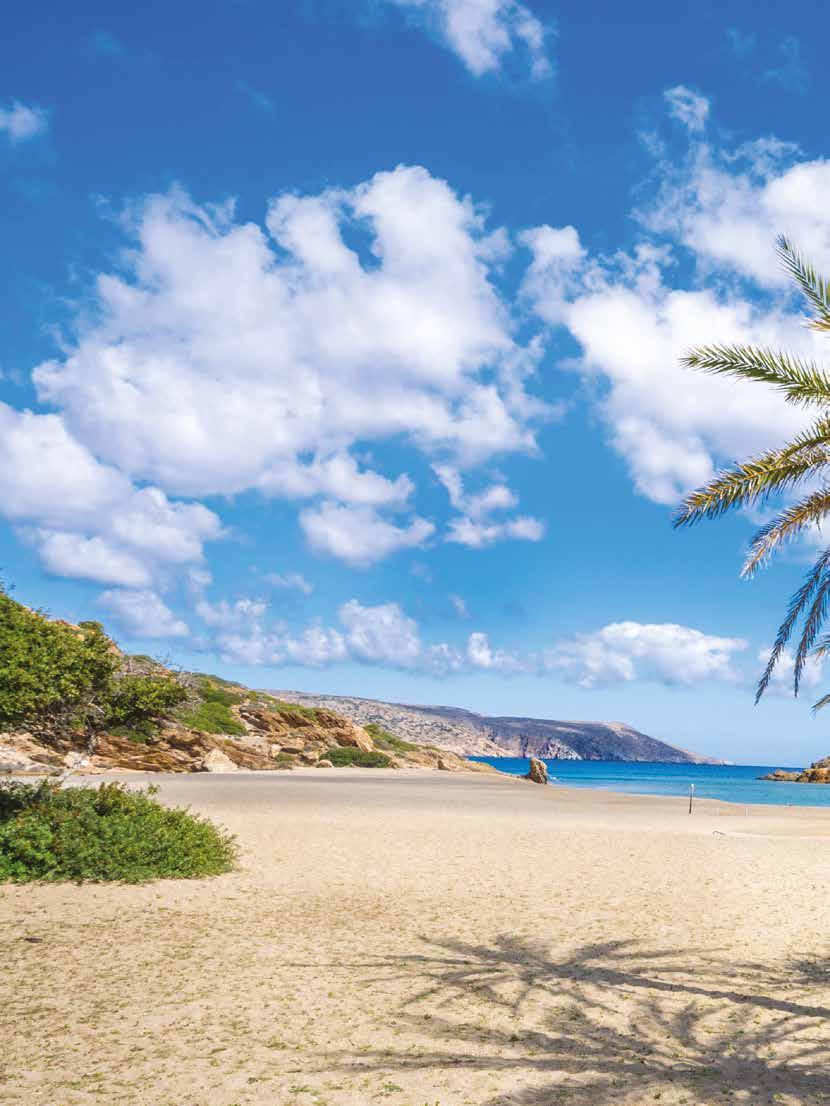
THERE’S NO NEED TO VENTURE FAR TO EXPERIENCE EXOTIC BEACHES -CRETE BOASTS UNIQUE OPTIONS THAT RIVAL THE MOST FAMOUS ON THE PLANET.
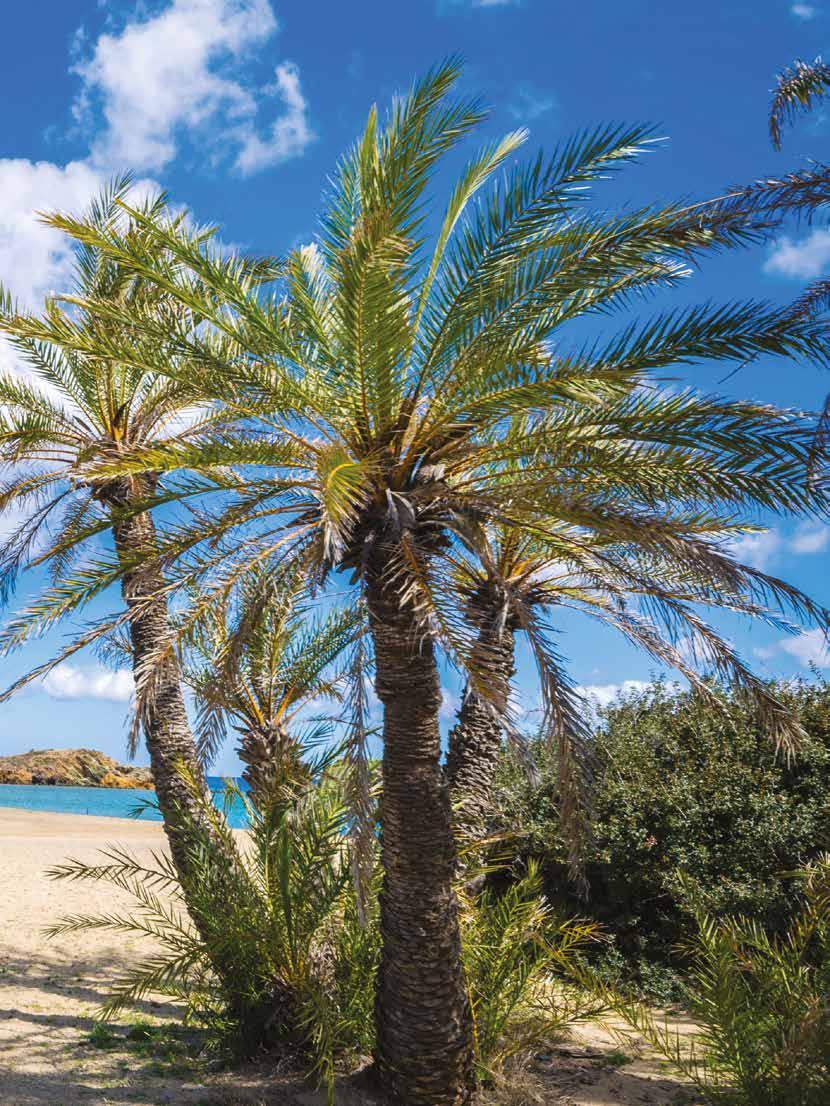
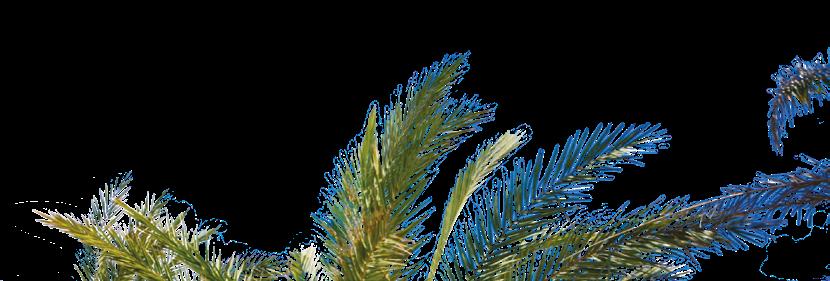
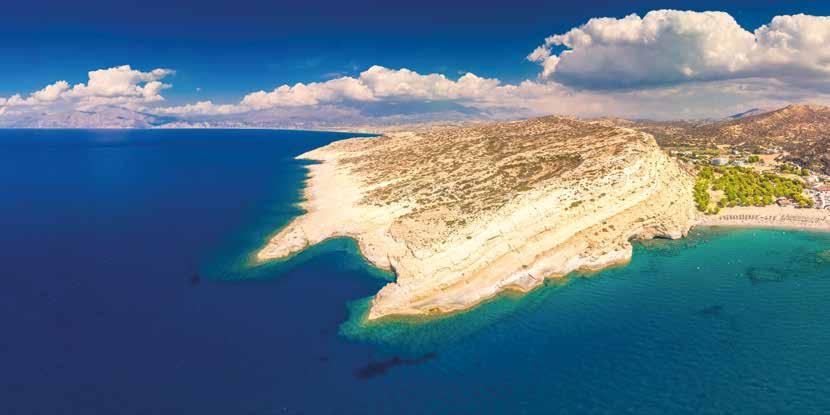
Exotic paradises with deep blue waters. Myriads of shells give white, golden or rose-coloured sandy beaches their hues. Imposing white or crimson rocks emerge from the sea. Impressive palm trees stretch all the way down to the beach. Rivers flow into the sea, and ponds reflect playful images of the clouds and lush nature around them. Uninhabited islands with pristine nature and crystal-clear waters in the most beautiful shades of turquoise. Calmness, serenity and isolation, but also a friendly mood. Crete knows how to provide an unforgettable holiday experience with a Caribbean twist -and no passport is required!
Matala and Red Sand Beach
The legendary beach, famous for its limestone caves carved into the rock, a trademark of the “flower children”, still attracts crowds of travellers today. Although it is now fully organised, its exotic nature remains highly appealing. So is the exotic Red Sand Beach (Kokkini Ammos), a popular nudist destination that can be reached by hiking along the approximately 800 m marked path from Matala, crossing Kastri Hill (or via the sea). The turquoise waters provide a stunning contrast to the secluded sandy beach and the red rocks that surround it, which are characteristic of the area. If you stay until sunset, you will surely be enchanted by the spectacular view, just as the hippies were in the 1960s and 1970s.
Location: 62.8 km from Heraklion
Access: By car to Matala
Kommos
The golden Kommos, once a Minoan port, retains its wild,
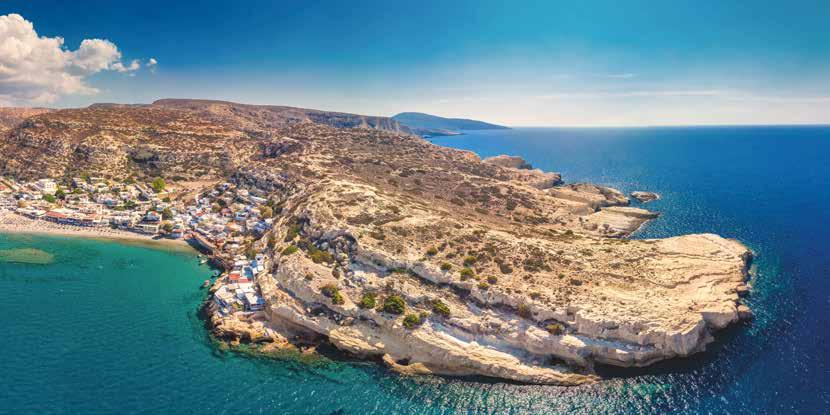
exotic beauty in the bay of Messara. It boasts impressive sand dunes, tamarisk trees, cedars, aromatic lilies of the sea and clear turquoise waters. The loggerhead sea turtle (Caretta caretta) comes here to lay her eggs. The scenery becomes even more spectacular as the sun sets behind the Paximadia Islands, which seem to change shape as you look at them. The impressive islet of Volakas, which emerges from the water, reminds us of the mythical Cyclops Polyphemus, who threw a huge rock at Odysseus’s ship in an attempt to prevent him and his companions from escaping.
Location: 65 km south of Heraklion, 2 km north of Matala Access: By car
Vai Beach and the Palm Forest
With its exotic landscape of palm trees, oleanders and lentisks; its unique wetland of playful ponds and migratory birds; and its sandy beach of wild beauty, sleek white rocks and blue waters, Vai is truly unique. Just as unique is the palm forest with the palms of Theophrastus that covers 25 hectares -the largest in Europe. The morning dive into the crystal clear waters, opposite Peristerovrachos, the beautiful skerry rising out of the blue, is definitely the best when the beach is quieter; a real paradise.
Location: 24 km east of Sitia, 6 km from Palekastro Access: By car
Mazida Ammos and Argilos
One of the “secret” beaches of Lasithi; which explains why it is relatively isolated. It is located in the Xerokampos area of Sitia. The largest beach of the area with the strange name (a corruption perhaps of “mother earth”), is really an exotic oasis -white sand, soft as powder, with fragrant sea lilies and tamarisks,
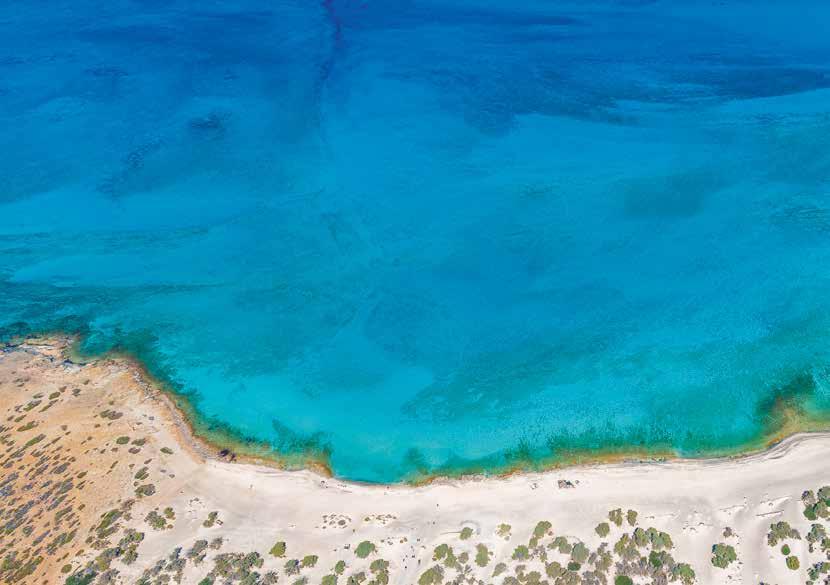
shallow, calm waters, with bluish shades, and a wonderful view of Cape Trachilos and the three islets that emerge from the sea. The Xerokampos area boasts many other beaches, large and small, that look like postcards from the most exotic places. Among them is Argilos Beach, with its crystal-clear, warm waters of the Libyan Sea that change from light blue to sapphire and shades of green. As its name suggests, those in the know apply white clay found on the rocks or deeper in the sand to their bodies. They let it dry like a face mask with beneficial properties, then rinse off in the crystal-clear waters -a “natural spa” in all its glory.
Location: Prefecture of Lasithi, Province of Sitia
Access: By car via paved road
Chrysi (or Gaidouronisi)
An uninhabited island of absolute exotic beauty, measuring seven kilometres in length. Beautiful beaches with golden or powdery white sand, or pinkish sand made up of thousands of small shells, which remind us of distant, heavenly destinations. Crystal-clear turquoise waters shimmering in the sun. An incredibly beautiful cedar forest. And a unique ecosystem with rich biodiversity, protected by the Natura 2000 network. Many species
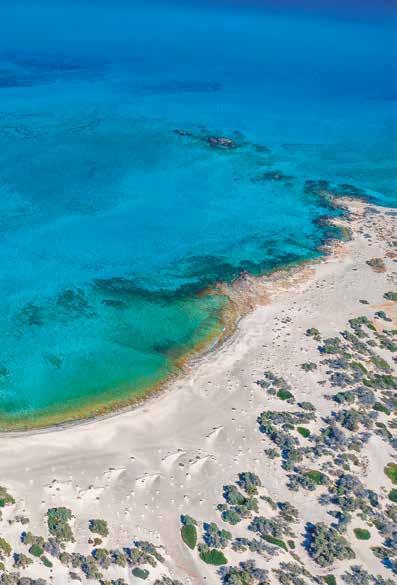
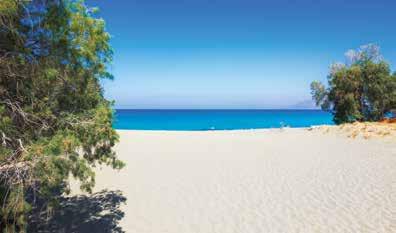
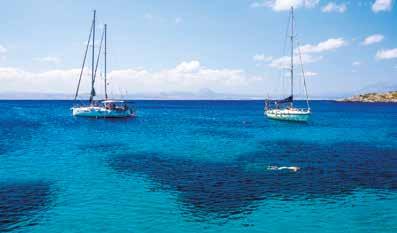
find refuge here, including the loggerhead turtle and the Mediterranean monk seal. The picturesque 13thcentury chapel of Agios Nikolaos and other remnants of human activity on the island from the Minoan era testify to its history. As the sun sets over the Libyan Sea, the island is bathed in a kaleidoscope of colours, creating an unparalleled setting of beauty.
Location: Prefecture of Lasithi
Access: Daily cruises from Ierapetra (staying on the island is prohibited)
Koufonisi (or Lefki)
The definition of exotic. This six-kilometre-long uninhabited island is a real paradise. Tall, shifting sand dunes; tamarisks, cedars and lentisks; sea caves and secluded coves; white limestone rocks; transparent waters in shades of blue and green; otherworldly, idyllic landscapes. Koufonisi has been known since Minoan times for producing Tyrian purple dye from shells found on the island. It was also a place where sponges were fished. The dozens of beaches, with obvious remnants of ancient habitation (a Roman theatre, parts of religious statues, villas, baths and capitals on the seabed), attract restless travellers and nature lovers, who walk along
NATURA.
the marked paths so as not to disturb the rich biodiversity protected by the NATURA network.
Location: Prefecture of Lasithi
Access: By boat from Makrys Gialos
Dia Island
Dive into the impressive, crystal-clear waters, accompanied by seabirds, and explore the wonderful seabed and the hospitable bay of Agios Georgios, as well as the smaller, sheltered bays. The rocky, lacy coastline is characterised by steep cliffs and bushy vegetation. Tranquillity and isolation are the main characteristics of the exotic island of Ntia or Dia. It is an uninhabited island measuring five kilometres in length located off the coast of Heraklion alongside the rocky islets of Paximadi and Petalidi. The protected area of Dia (Natura 2000) is home to chasmophytes, thorny burnets and lentisks, as well as snails, lizards, wild rabbits, kri-kri goats, seabirds, Eleonora’s falcon and the Mediterranean monk seal. The turquoise waters, teeming with marine life, are an ideal destination for diving and snorkelling amongst the colourful seabed. In fact, JacquesYves Cousteau conducted underwater research here (19741976) and discovered traces of an ancient artificial harbour -rectangular rocks on the seabed that researchers called Cyclopean Walls.
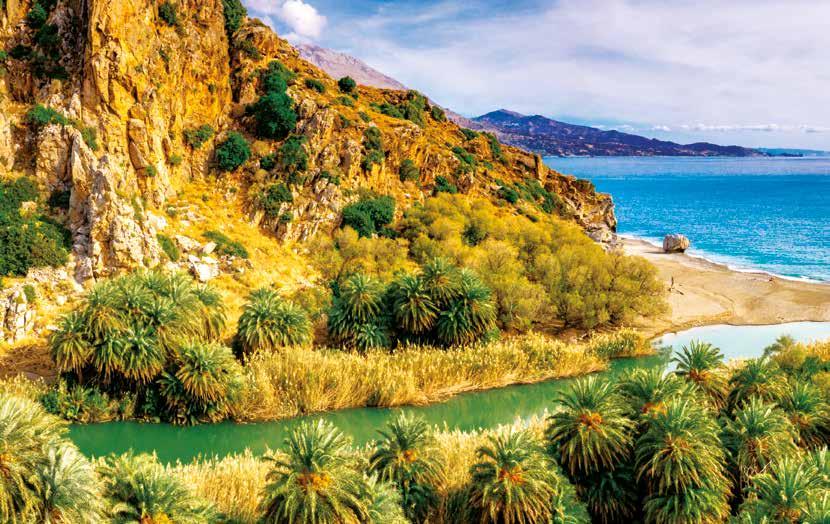
Location: Prefecture of Heraklion
Access: Daily cruises by boat or sailing
Preveli
One of the most famous beaches of southern Crete. Once a favourite destination for hippies, this exotic beach seems to combine all the most beautiful features of nature: a canyon (Kourtaliotiko), a river (Megas Potamos), a lagoon, a wonderful sandy beach (Lake Preveli or Phoenix) and a palm forest (the second largest on the island). Nature here reveals a palette of colours, blue and green and emerald, with the light-coloured sand standing out among them. Walk through the cool river, dive into the turquoise waters of the sea, climb up to the gorge under the shade of palm trees (among them the Theophrastus palms, also known as Cretan palms or Cretan date palms) that have begun to recover after the 2010 fire, and dive into the magical lake with its cool waters.
Location: 32 km south of Rethymno
Access: By car to Preveli Monastery and then a 1530 minute downhill hike, or to Ammoudi and then a 5 minute walk, or by excursion boats from Agia Galini and Plakias
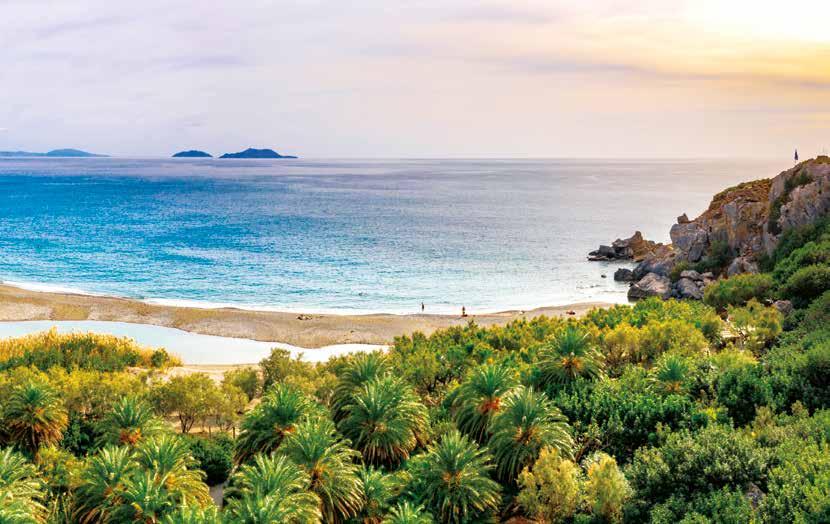
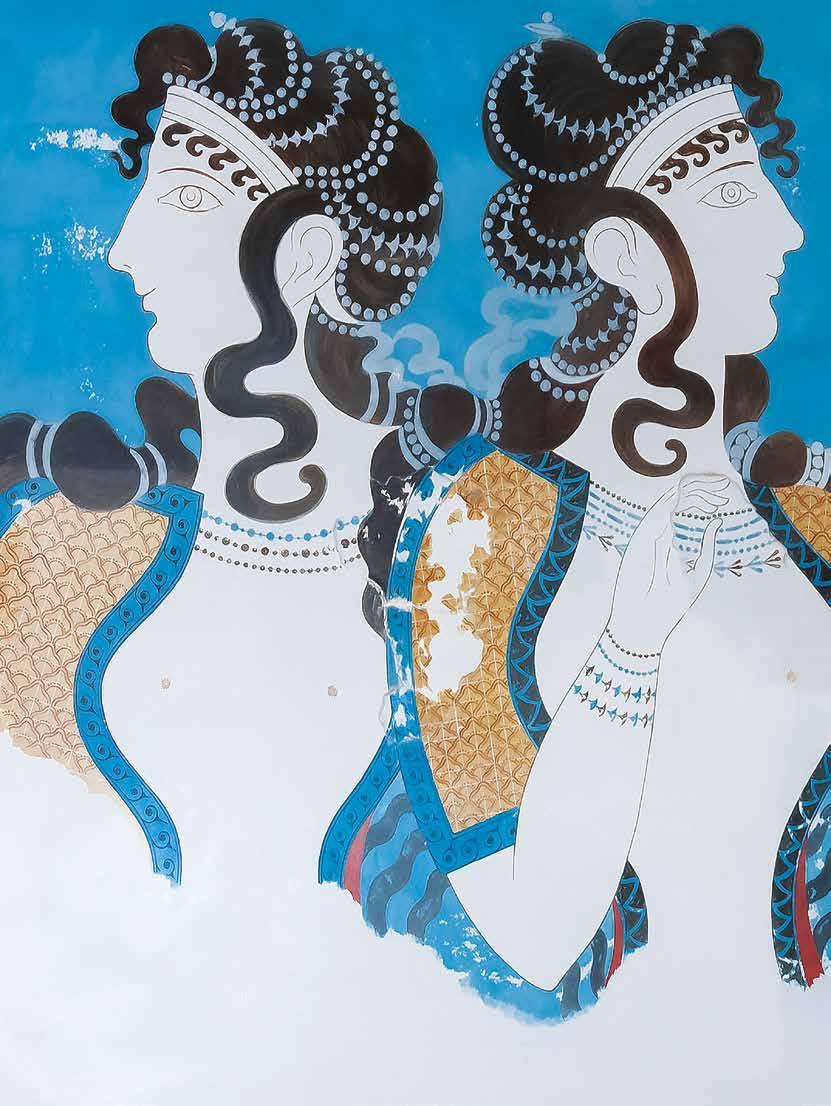
BY MARIA ATMATZIDOY
APART FROM ITS AESTHETIC APPEAL, THE FASHION OF THIS ANCIENT TIME IS IMPRESSIVE BECAUSE IT HIGHLIGHTS THE IMPORTANT ROLE OF WOMEN IN MINOAN SOCIETY.
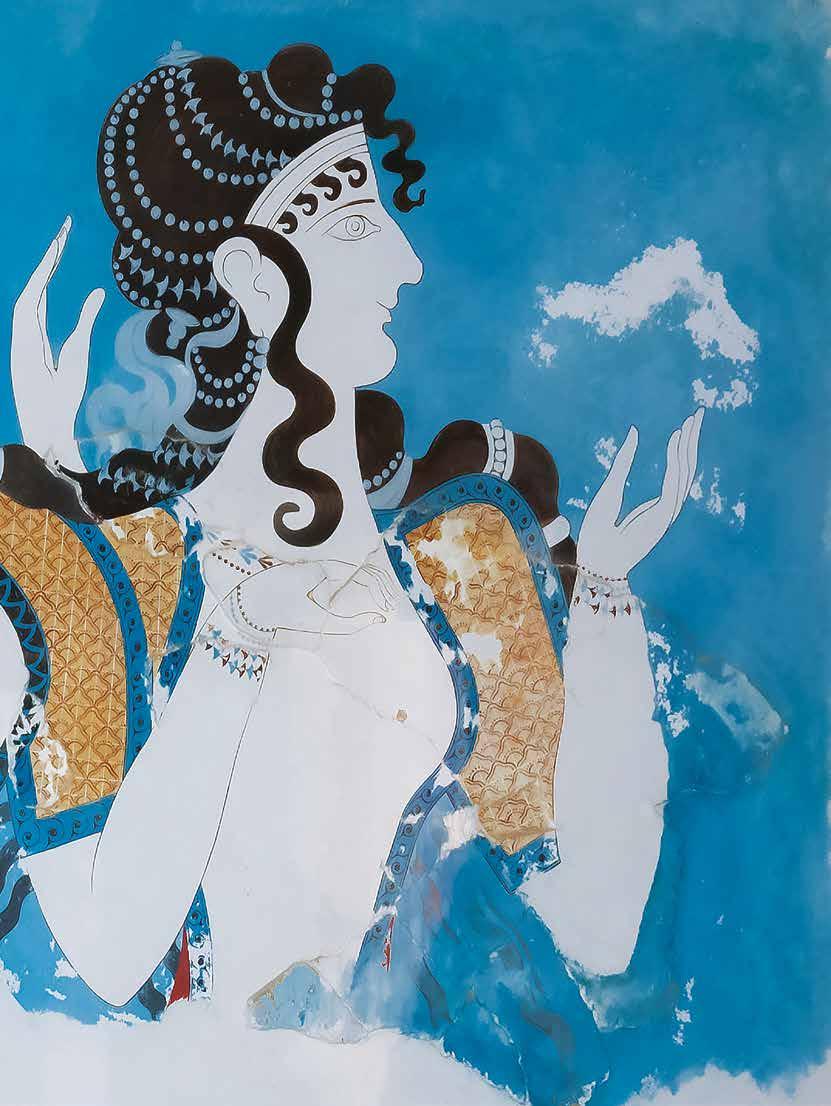
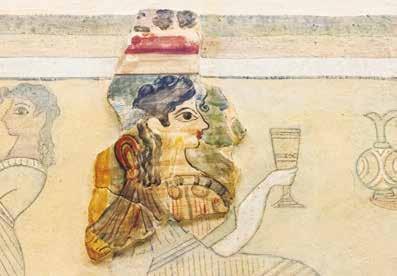
Top: “La Parisienne”, part of a fresco from Knossos now housed in the Heraklion Archaeological Museum.
Right: Fresco with female figures from Knossos. Opposite page, below: Golden ring from the Minoan era depicting a female figure.
TOhe Minoan civilisation was one of the most important in human history. It left an indelible mark on many areas of human activity, including religion, artistic expression and creation. The amazing frescoes in the Minoan palaces of Knossos, Phaistos and Zakros in Crete, as well as in the centres of Cycladic culture such as Thera, shed light on the society that developed and evolved in the different phases of the Minoan world. The frescoes are accompanied by a wealth of archaeological finds, including clay and bronze figurines, burial offerings, objects of daily use and grooming, and seals.
Given its many achievements, it was only logical for the advanced Minoan society to develop its own fashion, which was so impressive that it strongly influenced the women of ancient Thera and Mycenae.
And while it may be strange to use such a modern term at such an early time, it is interesting to see the style of clothing and jewellery chosen by Minoan women, and how they were generally dressed and presented.
The Minoan woman dresses up, laughs, talks, dances and takes part in sports, often dangerous ones. She also participates or more accurately takes the lead in religious ceremonies. Depending on her social class, she wears elegant and luxurious clothes and impressive jewellery made of gold, silver and shiny, colourful semi-precious stones.
The frescoes and figurines vividly depict the “boudoir” of the Minoan woman, showing that the women of Minoan Crete knew how to take
care of themselves. Their apartments had plenty of water for personal hygiene, emphasising their attention to cleanliness and tidiness. Their “makeup” was heavy and elaborate. They used white powder on their faces, natural pigments as red “lipstick” on their lips and cheeks, and black “eyeshadow” to emphasise their eyes. They also painted their nails and wore intoxicating Minoan perfumes. As shown by archaeological findings, it is no coincidence that the Minoans created essential oils from various flowers, such as roses and aromatic plants, like fennel and sage, in the perfume production laboratories of Knossos and Zakros.
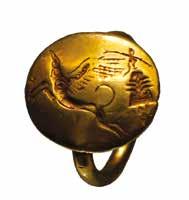
Minoan women used to comb their long hair in an elaborate and impressive way. They would gather it at the back of their heads, leaving small curls to gently frame their foreheads and profiles. Their thin curls were adorned with beads or fixed with spiral hair rings made of twisted plates -often real masterpieces.
Just seeing the emblematic La Parisienne fresco from the Palace of Knossos is enough to admire the young priestess’s white, kempt skin; her insolently raised nose; her fiery red lips; her almond-shaped eyes accentuated with the makeup of the time; her well-formed, arched eyebrows; and her elaborately combed curls. Here, the Minoan woman is depicted as a beautiful, independent woman who is full of grace and self-confidence. It is no coincidence that the British archaeologist Arthur Evans named her “Parisienne”, as she reminded him of the elegant women who frequented the sophisticated Paris of the early 20th century.
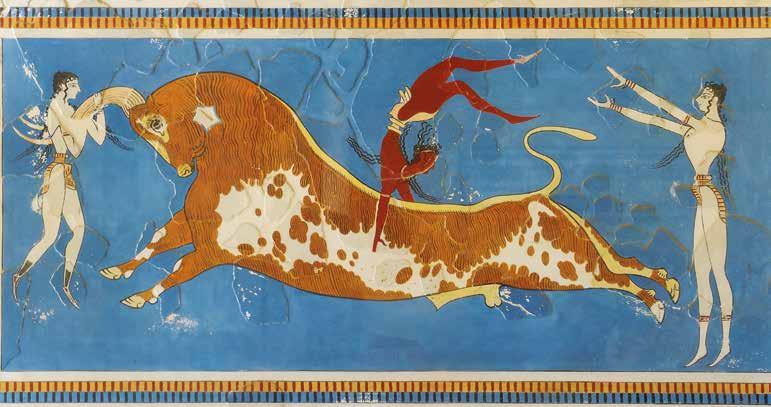
a fresco from Knossos, depicting two women (in white) and a man (in red).
Young women who took part in bull-leaping preferred men’s outfits, such as vests and tight-fitting skirts, which allowed for complete freedom of movement. However, in other social situations, Minoan women dressed in an imaginatively elegant way. The textile industry’s development meant that they could use high-quality raw materials, such as wool and linen. A narrow bodice was fitted to their torso like a welldesigned shirt, with short or long sleeves -transparent or leaving their chest exposed. Their skirts were long, loose and plumed, bell-shaped or pleated, made of striped fabric or with horizontal or converging frills, elaborately decorated with linear patterns and straight or zigzag lines.
The colourful, motif-decorated aprons were worn over skirts, tight belts emphasised the waist and pointed collars on bodices added an elegant touch. Their tall and impressive hats stood out from afar. According to the late archaeologist and director of the Archaeological Museum of Thessaloniki, Evangelia (Liana) Stefani, in her book “Female Dress in Palatial Crete. A Reading Suggestion of a Communication Code”, hats with their characteristic multiplicity were the most prominent part of women’s clothing during the Old Palace period (1900-1700 BC), while later, during the Neopalatial period (1700-1500 BC), hats almost disappeared and dreadlocked hair became the dominant hairstyle, the bodice left the chest completely uncovered and it was the skirt that became the focal point of women’s appearance, with different types and many variations, incredible variety in decoration and a blaze of colour. The dashing attire of the female clay figurines found in the “peak sanctuaries” that functioned on hills and mountains, such as Petsofas Hill in eastern Crete, is evident. These figurines were once painted white, black and red. Like the snake goddesses, the two statuettes with elaborate Minoan garments and all their characteristic details, such as
the bell-shaped striped skirt and the long skirt with horizontal pleated frills, the embroidered apron and the bodice that fits snugly around the torso, leaving the chest uncovered. Not to mention the impressive conical hat worn by the larger female figure.
The combination of different materials, intense colour contrasts and high artistic standards during the Minoan era resulted in jewellery that was truly masterful. This is why Minoan jewellery was such a popular “trend” at the time, influencing the style of the Mycenaeans as well. Even today, it is admired around the world.
Ornate necklaces, diadems, necklet with drop-shaped or spherical beads, pendants and bracelets, chains, rings, earrings and pins, and hair and clothing accessories, all made of gold, silver and copper. Each piece is unique and infinitely impressive. Made from precious and semiprecious stones such as opal, jasper, lapis lazuli, amethyst and agate, as well as ivory, faience, shells and glass, the jewellery and hair combs of Minoan women stood out for their high aesthetic value. The long metal pins used to fasten the garments were also of exceptional beauty, with
Mycenaean”, clearly demonstrating the effects of the Minoan civilisation on the Mycenaean one. Fresco from the Palace of Mycenae, National Archaeological Museum.
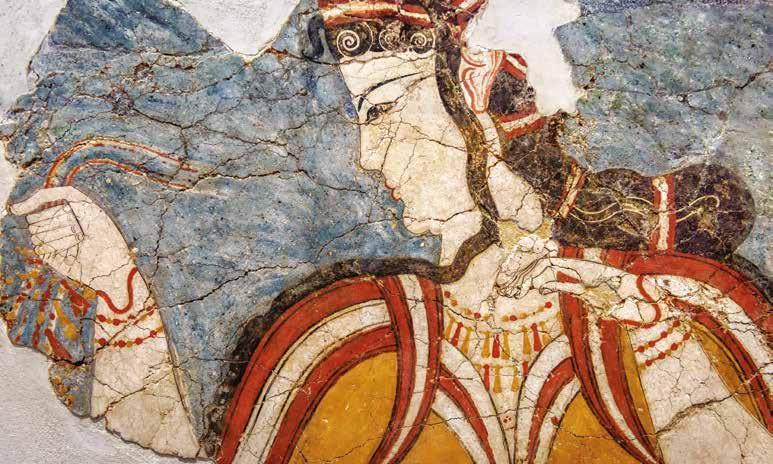
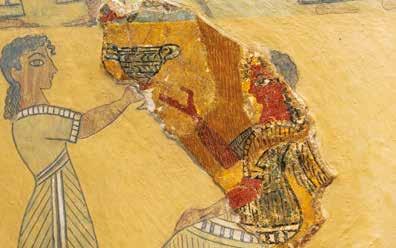
Above: Part of a fresco from the Palace of Knossos with impressive female figures.
Right: Ornately decorated female figures representing mythological themes, inspired by elements of the Minoan civilisation.
Opposite page, below: Golden pendant in the shape of two bees, from a Minoan cemetery in Malia.
the most impressive ones being decorated with gold sheets and plates. The depictions were mainly of living organisms in nature, such as bees, bulls (the bucranium, or bull’s head, was a popular subject for artists), wild goats, and various insects. There were also depictions of flowers, fruits and religious subjects. The gold or silver sealing rings worn by upper-class women (which served as a kind of “identity card”) were real masterpieces, decorated with detailed representations of human figures and motifs from nature, as well as scenes from myths.
Sophisticated Minoan women kept their jewellery in jewel boxes (pyxis). These were made of ivory and metal with gold and faience coatings, while those of the lower social classes had simpler boxes made of clay or wood.
Unlike women in other societies and cultures of the time, Minoan women played an active role in social life. By today’s standards, we would describe them as emancipated. They took part in sports and events such as the well-known bull-leaping. This acrobatic sport with bulls involved risks and required physical strength, flexibility, fitness, skilful movements and immediate reactions, as well as self-confidence and courage. They participated in hunting alongside men, as well as in celebrations, processions, dances, and all musical and religious events, and ceremonies, in which they played a leading role.
“The rights of women in Minoan Crete, their social liberation, and their significant roles in devotion and family life led many historians to describe Cretan society as matriarchal. In his “Republic”, Plato mentions
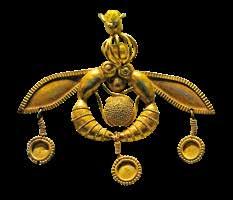
that the Cretans referred to their homeland as the «motherland». The views of Plutarch and Aelian were in agreement” writes Georgios I. Panagiotakis in his book “Woman of Crete - Yesterday and Today”. Although the female presence is much more powerful than the male in terms of archaeological findings (frescoes, figurines, seals, etc.) and there is a plethora of caves and sanctuaries dedicated to the mother goddess, the view of the matriarchal Minoan society has been disputed by many modern scholars. However, it is likely that women were prominent figures who enjoyed appreciation and respect in Minoan Crete. In fact, when we observe the frescoes of the Tripartite Shrine in Knossos, we can see well-dressed and elaborately coiffed women in the foreground. They probably belonged to the palace’s social elite and are sitting to the right and left of the sanctuary, talking to each other in a lively and joyful manner. In the background, we can see many men and women who probably attended an event or religious ceremony. Evidence suggests that women from the upper social class played a dominant role in religious events at that time.
In her book, Dr Liana Stefani writes that Minoan women “actively participated in social developments, and gender was not an obstacle to their involvement in society. In fact, some of them appear to have had the opportunity to play a prominent role in places of collective worship, where they could demonstrate their economic and social status through their clothing and negotiate its improvement”.
FROM WIM WENDERS TO “INDIANA JONES” AND FROM AUTEUR CINEMA TO THE BOX OFFICE, THE TWO-TIME OSCAR-NOMINATED CINEMATOGRAPHER HAS ENJOYED AN IMPRESSIVE HOLLYWOOD CAREER WITHOUT COMPROMISING HIS ARTISTIC VISION.
PHOTOS: ANDREAS SIMOPOULOS GROOMING: MORFE
Phedon Papamichael, the great cinematographer and one of Hollywood’s most important directors of photography, is a man of the Oscars (he has been nominated twice, for “Nebraska” and “The Trial of the Chicago 7”) and of major productions. He has worked with all the actors and directors we admire from afar, successfully balancing blockbusters and auteur cinema. The “Complete Unknown”, his latest film in collaboration with his longtime friend James Mangold, was about the life of Bob Dylan. It was nominated for eight Oscars, was a commercial success in many countries and earned critical acclaim.
How did this impressive journey begin?
I think I was pretty lucky because my father was working with John Cassavetes in Los Angeles. I sent him some photos that I had taken. He showed them to John, who then sent me a letter saying “your photography captures the spirit of a new generation in a classical form… Hope you come and see us soon”. At the time, I was living in Germany with my mother. When I told her that I wanted to leave, she was not happy at all because she had hoped that I would study architecture or something similar there. However, I couldn’t help it. To calm her down, I assured her that I would return in a year. It’s been over 40!
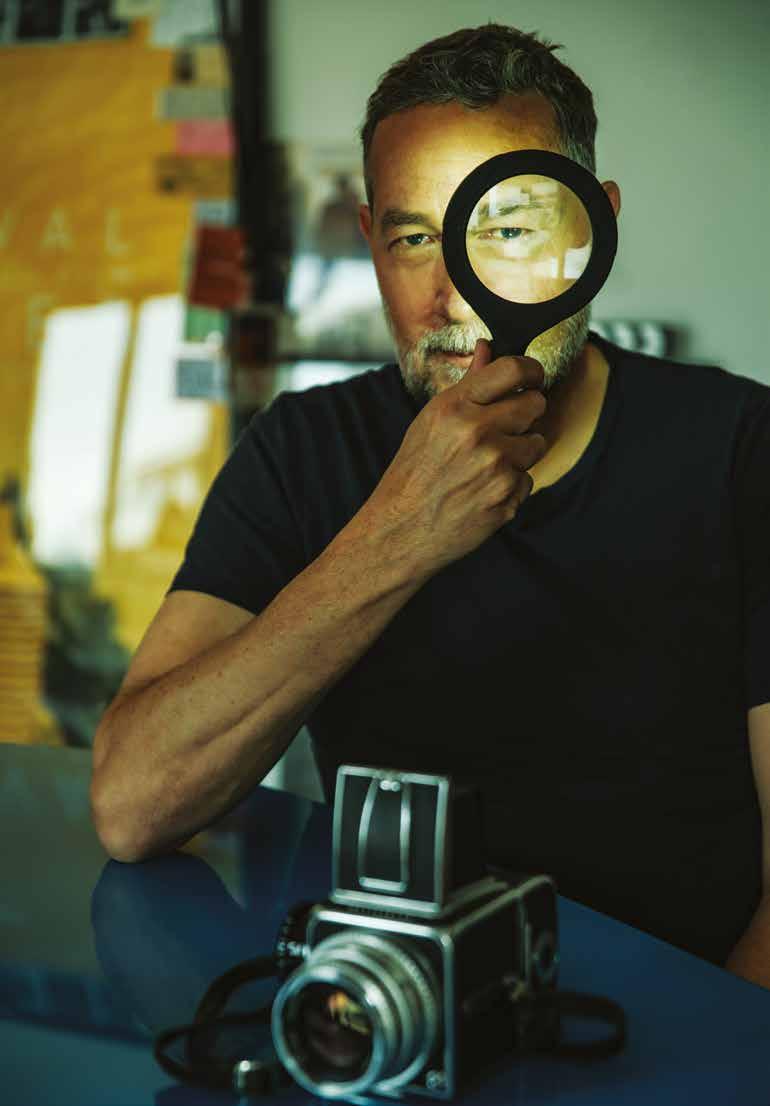
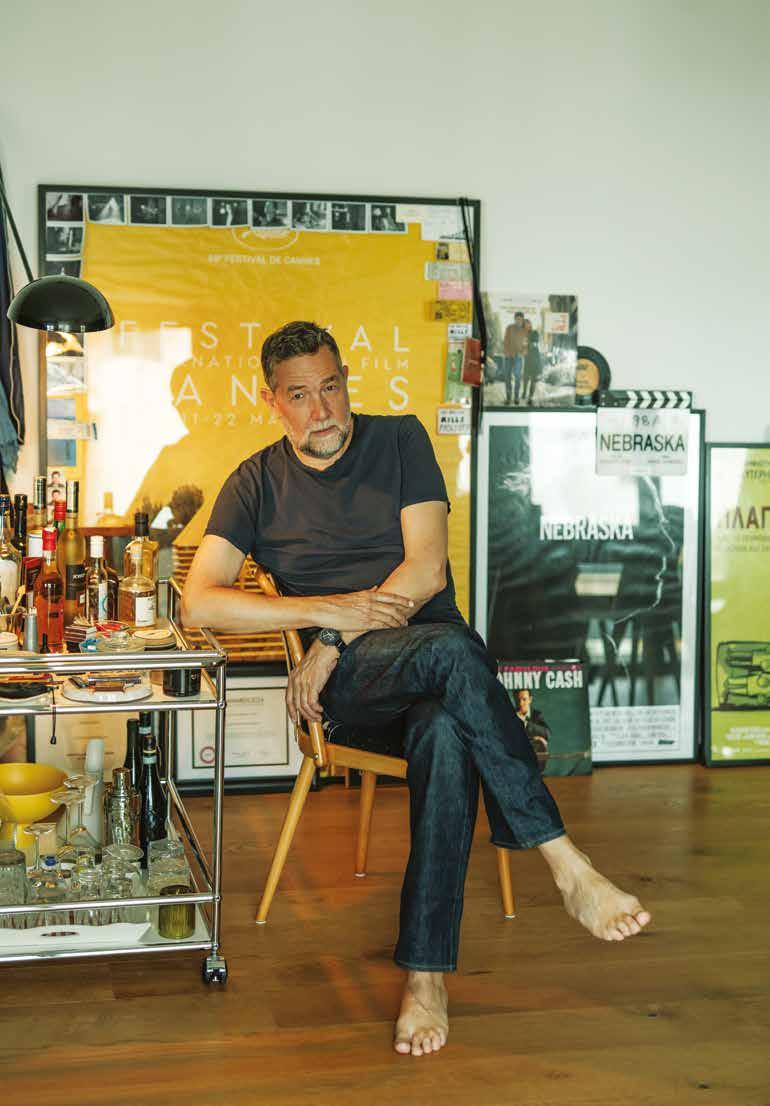
Did you end up studying there after all? Did you study cinema? No, I didn’t do any formal studies, but I did immediately start interning alongside big names. Also, the films of all the great directors -Kurosawa, Godard, Truffaut, Antonioni, Fellini, Bertolucci, Bergman, Buñuel, Tarkovsky and Kubrick- were my biggest “school”.
So you had an “eye” for this job.
I think it’s many things together. I was carrying the European culture within me, I had passion and enthusiasm and an almost inexplicable inclination. When I picked up the camera, I immediately saw the right frame, as we say in our language. It was automatic, instinctive and it’s always there. Also, I was fortunate because, at that time, we had the luxury of experimentation. I tried out different techniques, lighting and colours, and experimented with various atmospheres.
Your latest work, “Complete Unknown”, was also the umpteenth time you worked with director James Mangold. It’s really important to be able to choose the people you’re working with. And when you do, you favour those with whom you generally agree. Who share the same beliefs as you, who have similar goals and want to communicate the same ideas. Mangold and I are similar in many ways. He is also a true artist who makes films in Hollywood according to “European” principles. We also work well together in practice -not only in theory and philosophy- in the sense that we are moved by the same visual images, and we are both directors, we edit the shots -we “see” the same things.
How relevant can a “Dylan” be today?
Don’t you see what’s going on in the world? The universe is about to collapse, and nobody complains. That’s why I think it’s very important that the film starred Chalamet -who, by the way, exceeded our expectations in performance, sang everything live and lived for the film for years- because he’s loved by young people and we hope he got some messages across. Even if they are not interested in politics, we wanted young people to hear lyrics that are so relevant. We have to wake up the world in any way possible and make them understand that we are all in great danger.
Let’s move on to the film that was recently shown in our country and filmed here, “Light Falls”.
It is a production of Stamatis Athanassoulas, whom I have known for years. The film also features the place where it was filmed, an amazing location in Anavyssos; the School of Tourism Professions, which is a truly stunning abandoned building. It’s a very strange thriller with immigrants. The plot involves two tourists who, after swimming in the sea, decide to explore and photograph the building. One is a model and the other is a photographer. The building is occupied by illegal immigrants. At some point, one of them falls into a huge trapdoor, which sets in motion a series of events that serve as a pretext for raising political and social issues that concern today’s society. I don’t want to say anything more, but it involves people who have experienced abuse in their lives and are now abusing others. I must say that Makis Papadimitriou, who takes part in the film, is amazing in his role.
I was fortunate because, at that time, we had the luxury of experimentation
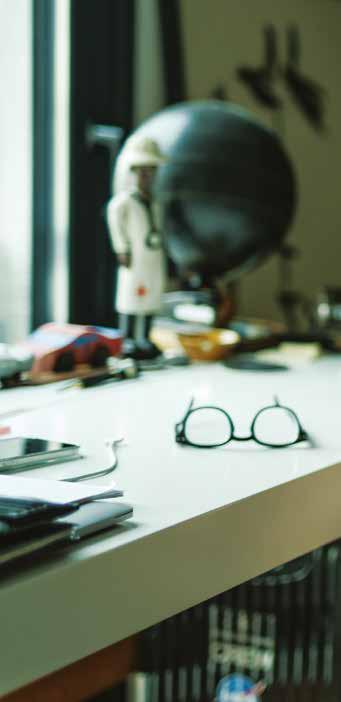
What are you planning now?
I do a lot of commercials, I read scripts and we’ll see. Hopefully, we’ll definitely be doing “Star Wars” with Mangold after 2026 and maybe something else in between. I am also gradually but steadily returning to Greece. My two children are with their mother, Eka, in Georgia, where they will finish school next year and go to study in America. My son wants to be a filmmaker, my daughter wants to be a neurosurgeon. Although I disagree with my son going to study, as I can send him anywhere to learn the job much better, he will obviously still go. We have now rented out our house in Los Angeles, and I am working on finishing our house in Leonidio. Together with the apartment in Kolonaki, these will be our permanent homes from now on. In any case, I state in my contracts that I am now a resident of Greece and I will be travelling back and forth.
The cinematic landscape has changed enormously due to the rise of subscription-based streaming platforms. Ultimately, do you make films for cinema or for streaming platforms?
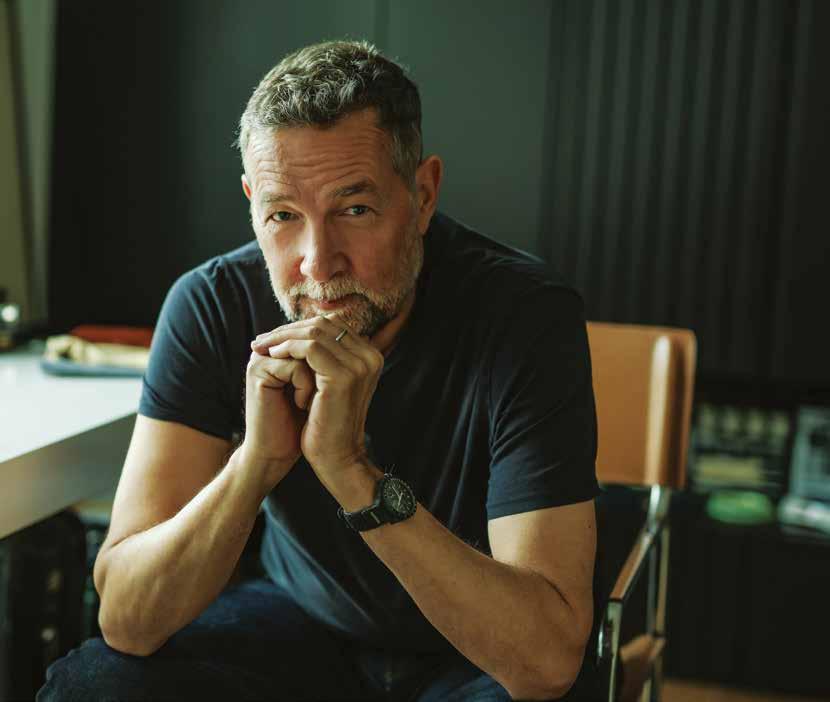
We are a group of directors, including Payne, Anderson, Mangold, Tarantino and Nolan, who are still creating works for cinema. It’s becoming more and more difficult to find money for films that aren’t Marvel, adventure or animation movies. I don’t want to do it and I’ve managed not to do it, but it’s getting too hard now. Of course, the studios themselves need quality films, like Searchlight, which made the Disney-owned Dylan’s Life. So basically the deal is that Searchlight brings them awards, not money, although of course they don’t want to lose money. Even Netflix makes great films that are first released in cinemas, like “Maria”, for example. All because you can’t go to the Oscars if you haven’t been to the cinemas. So you’re not going to make money with the “Brutalist”, but you have to make films like that.
What does this mean for the actors?
They get paid very well for big films, but they need it for their souls and their hearts to make smaller films that they love for other reasons. It’s just that, on the whole, not many people can choose and refuse. In my
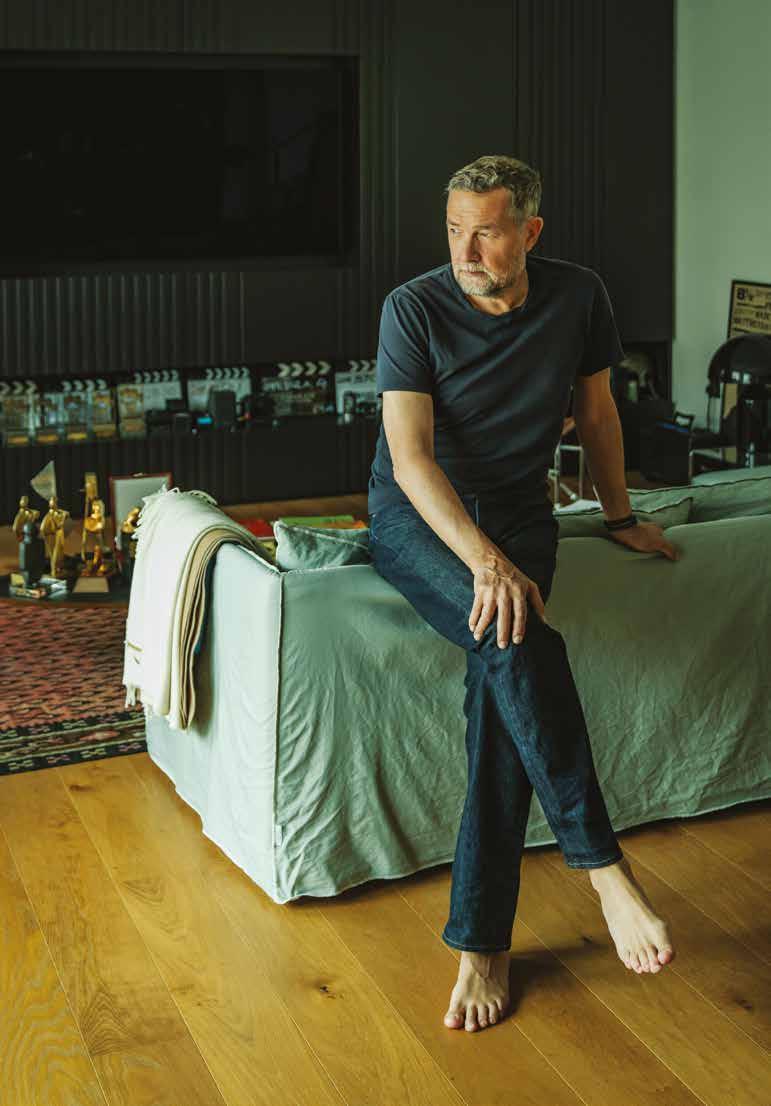
case, I make money from “Indiana Jones” and “Star Wars”, but I don’t want to make so much money as to make more such movies and not do the things I love. And the platforms are important for the audience, because if you have two kids and you go to the cinema with popcorn and something to drink, you’re looking at $200. So what’s fashionable now is huge TVs in the home that act like cinema screens. Even I don’t go to the cinema that much anymore -maybe because I see a lot of films at Festivals. I just wouldn’t want to make a film knowing from the start that it’s going to be on a platform.
In a universe as chaotic as Hollywood, what leads to success? Chance, coincidence, circumstances. Being in the right place at the right time, but also being ready to see it and recognise it as an opportunity and then being able to manage it. You have to have a very strong instinct for both the material and your partners. For example, when I started making more commercial films, at some point I thought, I didn’t go to America just for those kinds of creations, so I made “The Million Dollar Hotel” with Wim Wenders, an arthouse aura film, instead of making another big American film. Of course, I have to say that I was lucky because I started making money when I was very young. Yorgos Lanthimos is also one of the few directors who has managed to get funding to do what he wants to do, the way he wants to do it and within this system. He knows how to work within the system and maintain his artistic integrity. The most important thing for me in my position is to be able to choose directors and even actors. This all comes even before the script.
Who are your favourite stars you’ve worked with -as people or as actors?
Christian Bale; he is a very normal guy, a family man and a composed man. He has a Serbian wife who has nothing to do with the industry and if you want to work with him, you have to know that he doesn’t leave his base, which is Los Angeles. He sets his own conditions to achieve his own balance. Matt Damon also loves his house and his friends -not to mention the fact that they are both such good actors. I should add that I was very impressed with Dakota Johnson when we worked together on “Daddio”, in which she acted alongside Sean Penn -while I expected him to amaze me, it was actually her who won me over.
Tell me one of your quirks when you’re shooting?
I want silence. I also want the actors to be fully engaged and focused. No dawdling, no distractions, no talking, no playing with their phones.
And finally, what does it mean to be a good cinematographer?
Firstly, it’s important to note that I am also a director, which means I can easily understand what the director wants. It is important to build a relationship with them so you can achieve the right rhythm. This will help you understand what should stay in the film and what should be cut, how to move the viewer and which shots best convey your message. You should also be able to showcase the actor’s charisma with your close-ups and always respect the goal of each scene. And not to try to make cinematography more prominent than direction. Success is when people say “What a good film”, rather than “What great cinematography”.

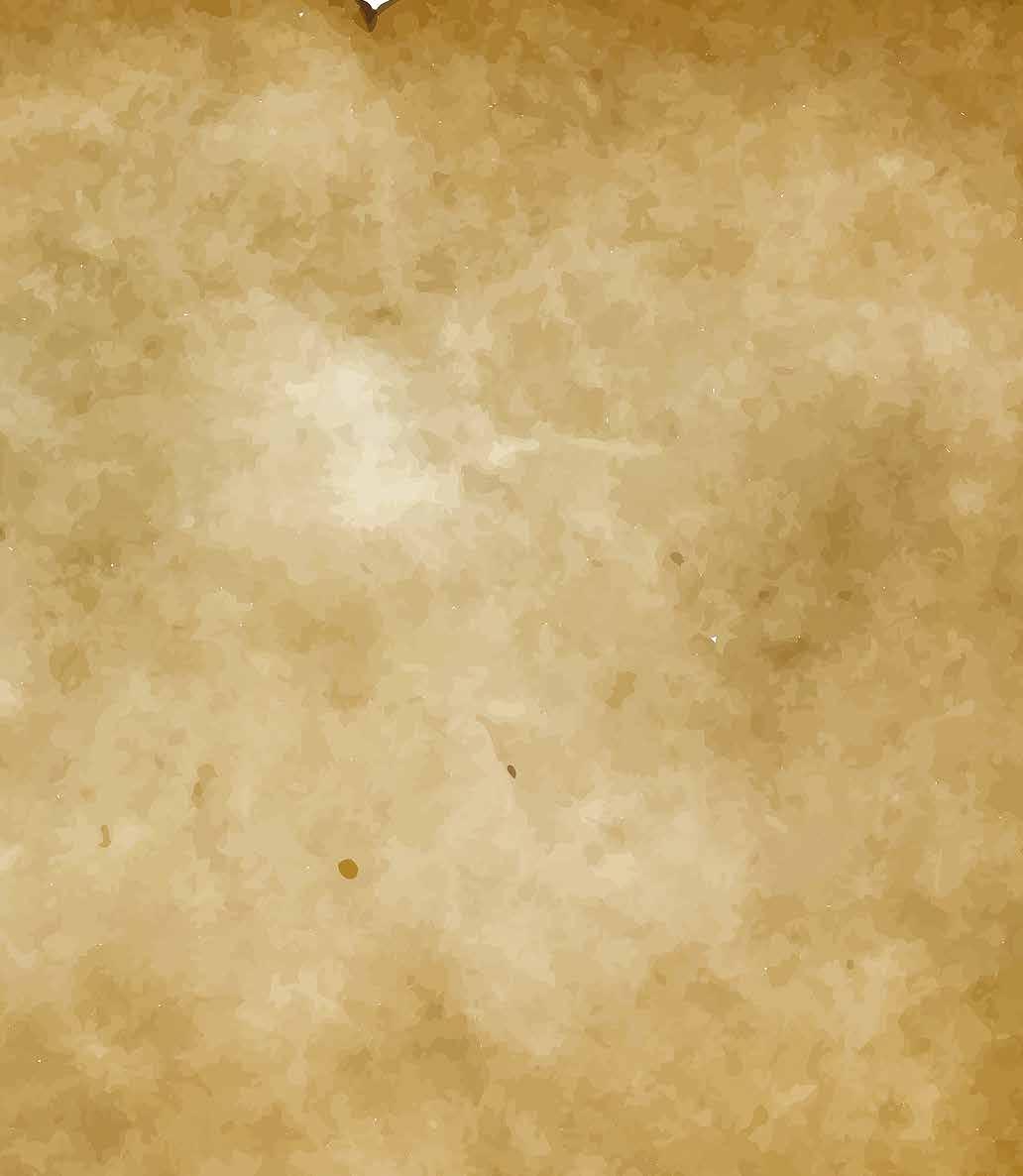
ANCONA AND BRINDISI, TWO BUSY PORTS, ARE NOT ONLY THE IDEAL STARTING POINT FOR YOUR TRIP TO THE ITALIAN HINTERLAND. ΤHEY ARE ALSO TWO SPECTACULAR DESTINATIONS WHERE YOU CAN ENJOY AN UNFORGETTABLE STAY -AND BE CAPTIVATED BY THEIR AUTHENTIC CHARM.
Porta
The capital of the Marche region in central Italy, Ancona is a lively city with an old-fashioned elegance, set in a natural harbour at the northern end of Conero Promontory. From its bustling port to its impressive historic centre, with buildings that are true works of art, from its beautiful parks to its lively beach, Ancona surprises its visitors and invites them to explore.
Our journey back in time begins the moment we drop anchor in the port. Back when Greek settlers from Syracuse arrived here (387 BC), the city was given the name Ancona because the wider area resembled a human elbow (“agkonas” in Greek) -just look at the map today to see for yourself. It flourished during the reign of the Roman emperor Trajan, its port was an important naval base in the Adriatic, and its reputation for its excellent Tyrian purple and smooth wines had spread throughout the ancient world.
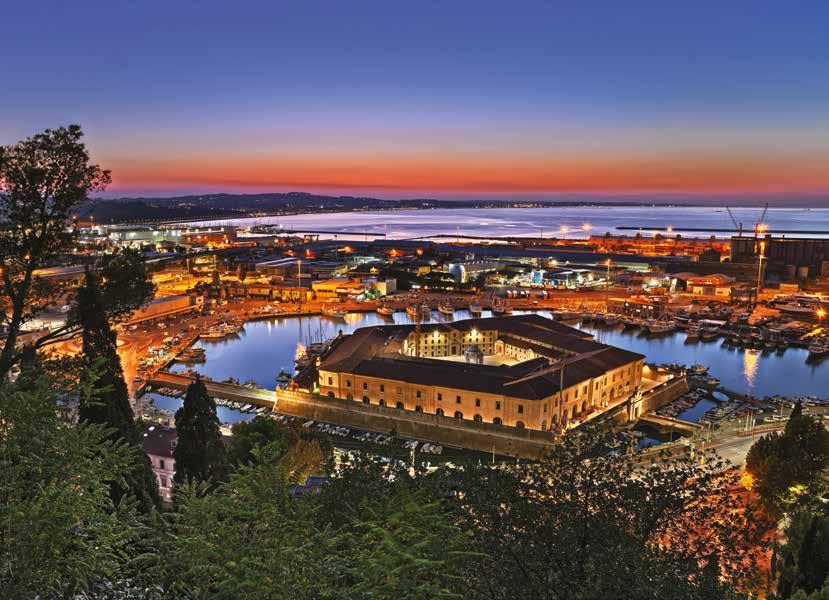
Vanvitelliana,
Lazzaretto,
The picturesque old port of Ancona, lit up at night, with the Lazzaretto in the foreground.
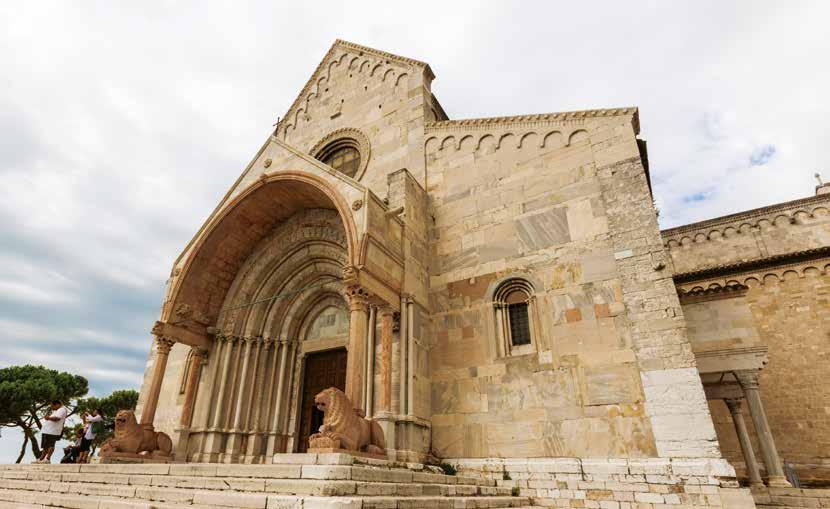
The impressive Cathedral of San Ciriaco on Guasco Hill.
Tiziano
Guercino (1662).
Santa Maria della Piazza,
The places of historical interest are not only numerous but also important. Such as the Porta Pia gate and the Mole Vanvitelliana, or the Lazzaretto, a five-sided fortress at the entrance to the old port, where travellers and goods were quarantined to limit the spread of the plague. Today it hosts cultural events and a unique exhibition space, the Omero Tactile Museum: this museum is specially designed for the visually impaired -that’s why we can touch unique works of art (copies) or replicas of excavated finds and feel even the smallest details, such as the marks of the crucifixion on Michelangelo’s Pietà or the folds of the tunic covering the buttocks of the famous Aphrodite of Milos (Venus de Milo). We continue our stroll through the historic centre with its architectural gems, tasteful shops and welcoming coffee shops. We visit the baroque Cathedral of San Domenico in Piazza del Plebiscito and admire its imposing decoration with impressive copies of Titian’s Crucifixion (1558) and Guercino’s Annunciation (1662). But also the church of Santa Maria della Piazza, the impressive façade of which is decorated with Byzantine reliefs from Constantinople. It is the oldest church in Ancona (12th century), built on the ruins of an early Christian church dating from the 4th century. In the Teatro delle Muse, the Nine Muses adorn the relief friezes, while the imposing Palazzo Ferretti, which houses the Archaeological Museum, features impressive frescoes and important exhibits from the Palaeolithic to the Classical periods. For a dreamy view of the city, we ascend the Guasco hill and visit the symbol of the city, the impressive Cathedral of San Ciriaco –the Romanesque-Gothic basilica was built on the ruins of an ancient temple dedicated to Aphrodite.
At the open-air market in Piazza Roma or the indoor Mercato
To
Κάτω:
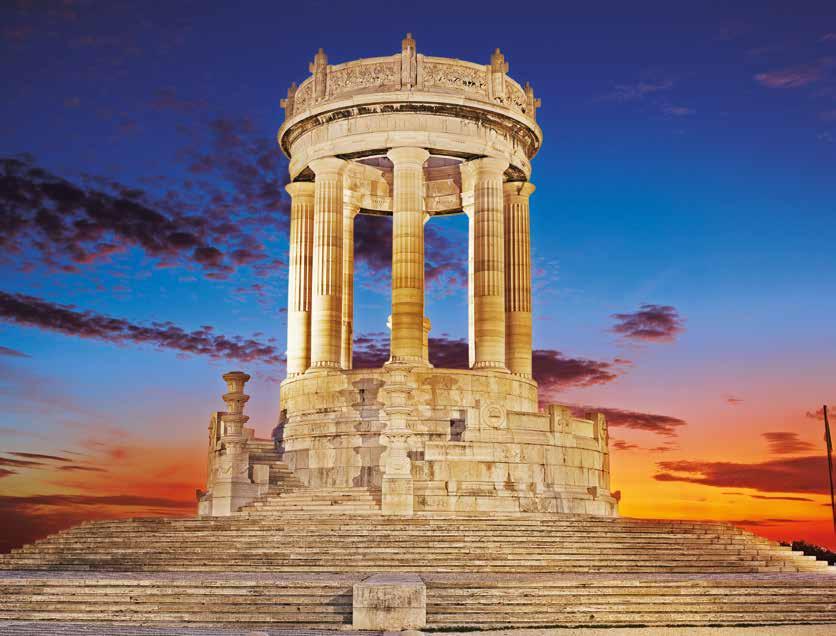
Viale della Vittoria,
The War Memorial, at the end of Viale della Vittoria, illuminated by the colours of the evening.
Below: Steamed mussels are a delicious local delicacy.
Mercato delle Erbe,
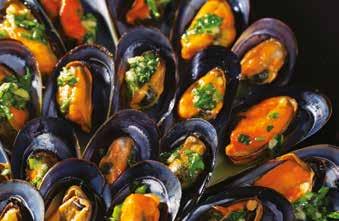
delle Erbe, our senses are flooded with the myriad scents of herbs and local produce. In the cool of the beautiful squares, rich in history, such as Piazza della Repubblica or Piazza Cavour, we find the ideal opportunity to relax with an authentic espresso or to take a walk along the seafront with a view of Trajan’s Arch.
In the lush green Cardeto Park, named after the thistles that once grew here, we can stroll, cycle or have a picnic with local delicacies, pass by
Fontana del Calamo,
Pellegrino Tibaldi,
the historic Jewish cemetery, one of the largest in Europe, and admire the wonderful view from the old lighthouse. We continue to soak up the Adriatic sun in the park and on Passetto beach, perhaps the locals’ favourite. And we are fascinated by the strange rock formations carved by the sea breezes, with strange names such as “Pope’s Chair”. Here are also the more than 500 colourfully decorated “caves” on the beach, where the fishing boats were stored -something like the “wires” of Milos. In the summer evenings, when the setting sun lights them up, it is pure magic. And then it’s time for a plate of authentic fresh tagliatelle or risotto with shellfish, fish or seafood and a glass of cool wine. Or for codfish braised with potatoes, tomatoes and herbs, a delicious local fish soup, the famous brodetto, and a dish of steamed local mussels, the excellent mosciolo di Portonovo. And if we are there in July, we don’t miss the opportunity to listen to renowned jazz musicians from all over the world and to attend amazing performances and concerts as part of the fortnightly jazz festival that has been held continuously since 1973.
Just before leaving Ancona, we pass the Fontana del Calamo, a 16th-century work by Pellegrino Tibaldi, and cool off with the running water from its thirteen impressive fountains; according to tradition, this is the only way to ensure our return to this wonderful city.
Fontana di Calamo,
The impressive fountains of the Fontana di Calamo, a landmark of Ancona.
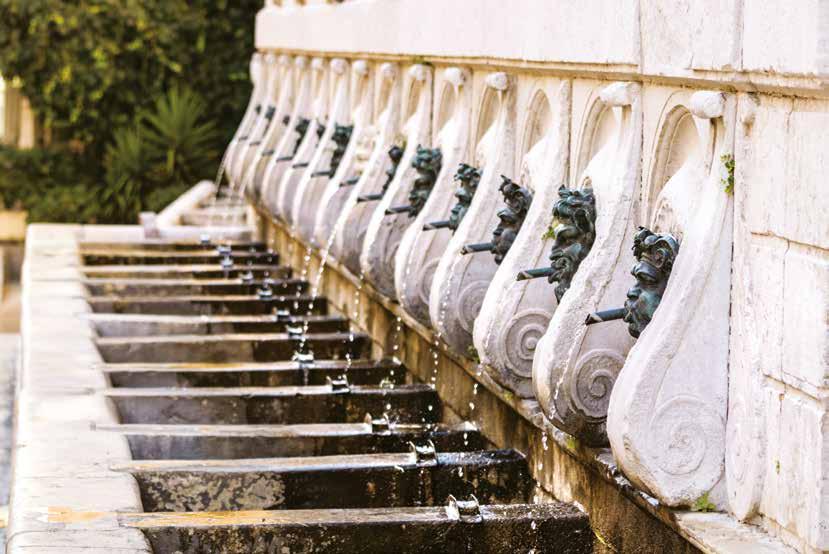
Its name means “toast” in Italian. This is evident in the iconic Brindisi melody from Verdi’s opera “La Traviata”, where everyone clinks glasses in a wild celebration. Brindisi may be an attraction for visitors seeking good, authentic food and genuine, no-frills entertainment, but its name comes from the Latin “Brundisium”, referring to the shape of its natural harbour, which resembles a deer’s head. No matter where its name comes from, Brindisi, Italy’s southernmost port in the Puglia region, has a unique charm.
Thanks to its strategic position, Brindisi has always been considered the gateway to the East. For this reason were built two extremely important roads: the Appian Way (312 B.C.) and the Via Traiana (109 A.D.), which connected the mighty Rome with the port of Brindisi. At the time of the Crusades, it played an important role as a central port of departure for the Holy Land, while its maritime and commercial character is still evident in the modern city.
As we walk through the narrow cobbled streets and mystical arcades, we come across beautiful fountains. Such as the Fontana de Torres in Piazza Vittoria, which was built in the 17th century making use of old materials, such as a marble basin that was used as a bathing pool
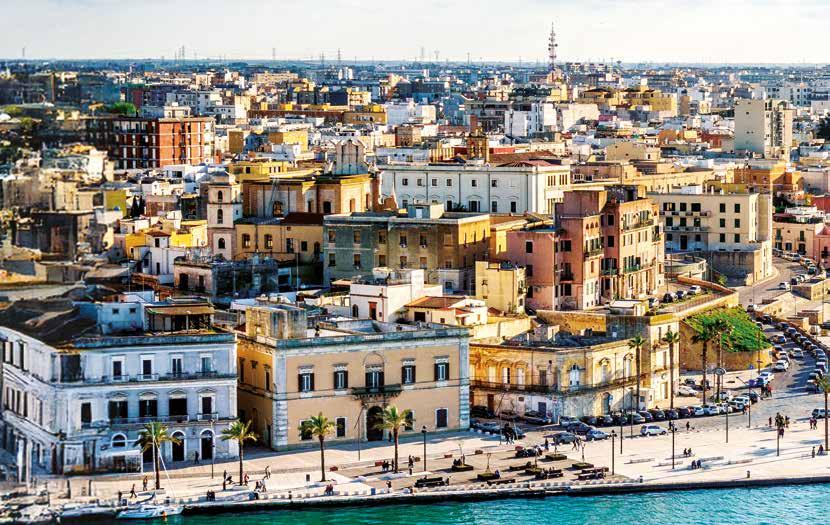
Right: The charming town of Ostuni, with its whitewashed houses, illuminated by a magical sunset.
Panoramic view of Brindisi immersed in the afternoon light.
in the Middle Ages, with its flowing water refreshing the inhabitants of the old town. But also the Fontana delle Ancore, the naval symbol of the city with its four anchors depicting a wild rose, in the lively Piazza Cairoli.
In the heart of the historic centre, in the impressive cobbled Piazza Duomo, we admire the imposing Cathedral, dedicated to St John the Baptist, with its exquisite mosaics and impressive bell tower, as well as the Palace, with its Baroque architecture and characteristic yellowish tones. Next to the cathedral, in an imposing 18th-century building, is the Archaeological Museum, with many vaulted rooms and a beautiful
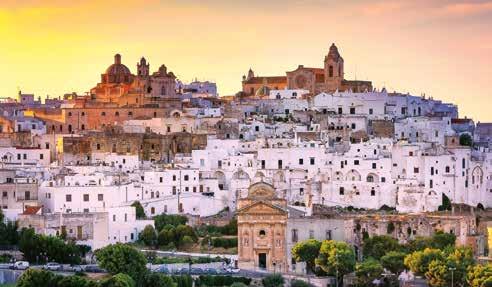
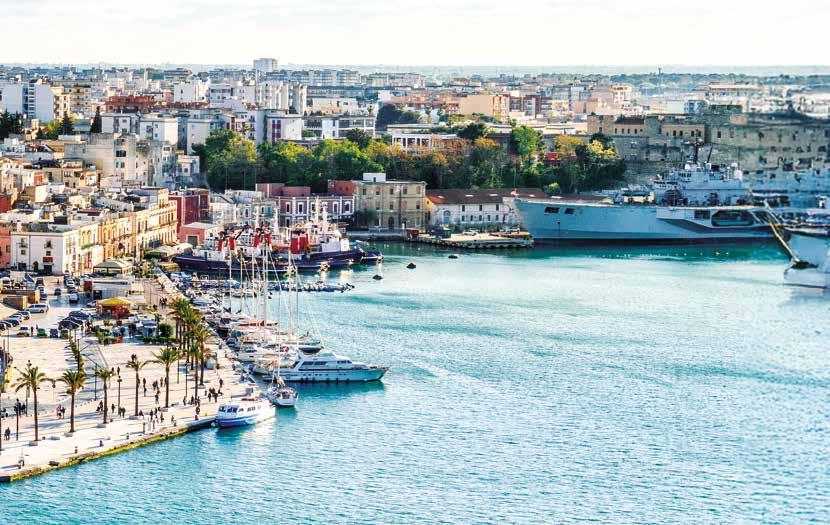
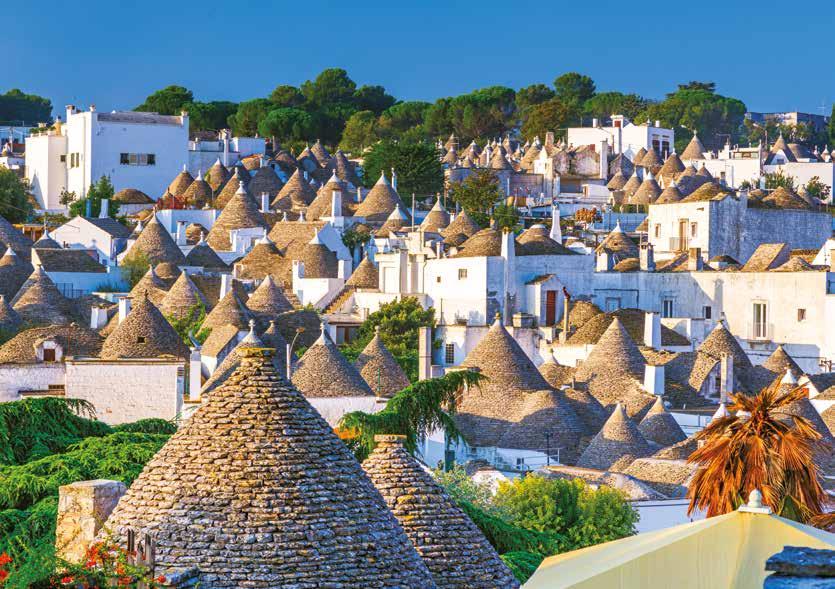
Το Alberobello
(trulli)
Alberobello with its characteristic conical domes (trulli) on the white houses. WAVE
courtyard. Its collection is impressive: around 3,000 bronze sculptures and fragments from the Hellenistic period, important underwater archaeological finds and amazing terracotta figurines.
We continue our journey back in time to visit the archaeological site of San Pietro degli Schiavoni, with the remains of a Roman complex and baths, the round church of San Giovanni al Sepolcro, built by the Knights Templar in the 11th century, and the Castle of Brindisi, built by Emperor Frederick II at the height of the Roman Empire. Near the port, we admire the only surviving Roman Column that rises on the monumental steps of the Latin poet Virgil and marks the end of the Appian Way. Residents and visitors flock here in the summer for cultural events and festivals.
At sunset, what could be more dreamy than a walk along the palm-lined promenade or a boat trip to Casale, on the opposite bank, to admire a breathtaking panorama of the city? As to where to take the best souvenir photos, the Monumento al Marinaio is one of the best options. The evening begins in the historic centre with an aperitivo and an authentic appetizer, such as a focaccia with cherry tomatoes, or a creamy burrata with a buttery texture, or the little taralli, rings of crispy dough with oil. Later on, we enjoy Apulian specialities such as the
Alberobello,
delicious orecchiette, handmade local pasta in the curious shape of a human ear, with a very special recipe of tender, bittersweet broccoli, or the characteristic bombette, pork rolls stuffed with cheese, real “little bombs” of flavour, as their name suggests, but also fresh fish and seafood -no coincidence, since the cuisine of the region has always been closely linked to the sea. Always accompanied by a glass of the famous Apulian wines of the Primitivo, Negroamaro and Susumaniello varieties. A visit to one of the area’s wineries for wine tasting and guided tours is a must.
And as for day trips, Brindisi is an ideal starting point. Alberobello, 80 km from the port, is a UNESCO World Heritage Site with white houses, reminiscent of Hobbit dwellings that capture the imagination. On the characteristic conical domes (trulli) you can see the painted symbols, as protection against the evil eye. Ostuni, 40 km from Brindisi, is a picturesque town built on a hill, with whitewashed houses where only the orange coloured windows and the green plants climbing the walls break the stark white. And, of course, Lecce, 40 km away, the “Florence of the South”, with its baroque architecture –an open-air museum of art and history.
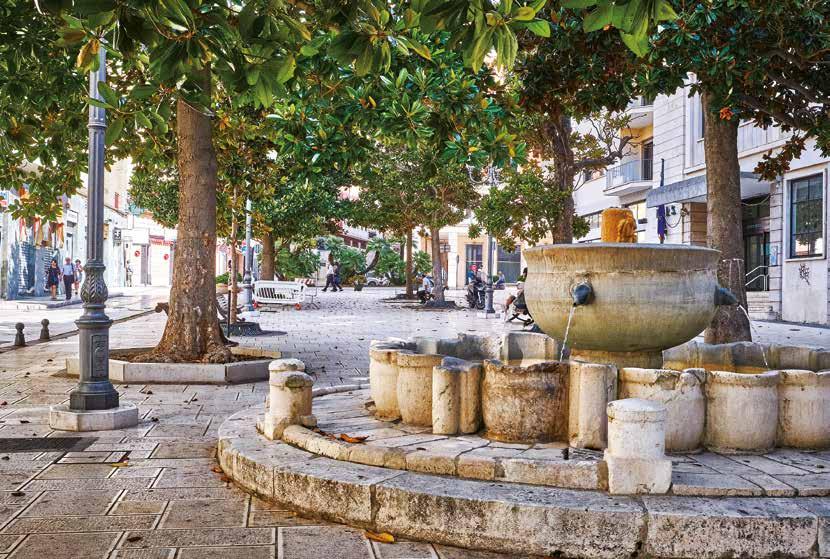
Fontana de Torres στην Piazza della Vittoria.
The iconic Fontana de Torres fountain in Piazza della Vittoria.
ε
With a long history dating back to 1947, the Grimaldi Group specializes in the operation of Ro/Ro (roll-on/roll-off) vessels, car carriers and ferries. It is a dedicated supplier of integrated logistics services based on maritime transport to the world’s major vehicle manufacturers.
Through its maritime services, the Naples-based group also transports containers, palletized/unitized cargo and passengers with a modern fleet of over 130 Ro/Ro and multipurpose vessels, pure car carriers and ferries.
The Grimaldi Group offers a wide network of maritime services for passengers in the Mediterranean Sea, under the Grimaldi Lines, Minoan Lines and Trasmed brands, and in the Baltic and North Sea, through the controlled company Finnlines.
Grimaldi Lines offers maritime connections to the most popular tourist destinations in Spain, Greece, Italy (including Sicily and Sardinia) and Tunisia.
Between Greece and Italy, the company offers frequent yearround services connecting Igoumenitsa to the Italian ports of Brindisi (Apulia) and Ancona (Marche). During the summer, services between both Italian ports and Corfu are operated as well.
Aware of the need to offer ever more innovative, high-quality and competitive services to its passengers, the Grimaldi Group deploys a fleet of modern RoPax ferries, providing cruise ship standard facilities, and new generation state-ofthe-art Ro/Ro-Passenger ferries.
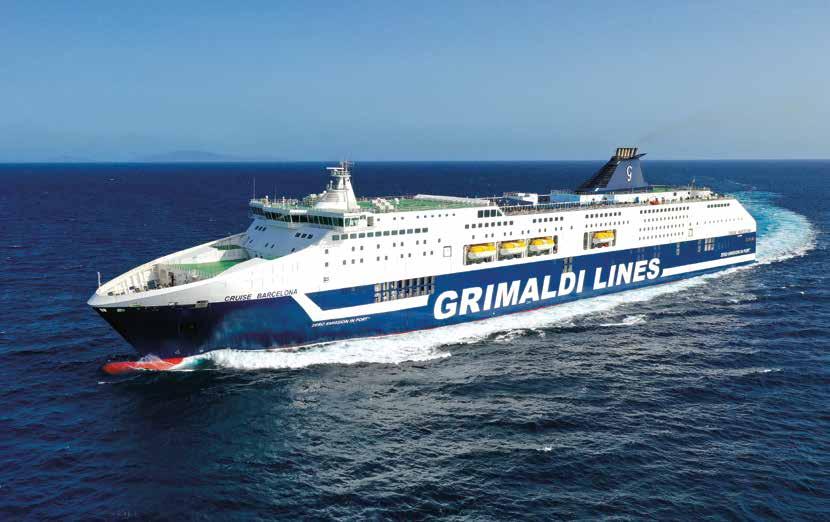
Two of the flagships of the Grimaldi Lines fleet are the Cruise Roma and Cruise Barcelona, both deployed between Italy and Spain on the Civitavecchia-Porto Torres-Barcelona route. Despite being already the biggest RoPax ferries in the Mediterranean, in 2019 they were lengthened and refurbished, which has enabled the two sister ships to transport more than 3,500 passengers.
Both vessels are equipped with 499 large, elegant cabins, 595 comfortable reclining seats, an à la carte and two selfservice restaurants, a swimming pool, a solarium bar and a modern wellness centre with sauna, hammam and massage room. On board entertainment services include a discotheque, a playground area for children and a conference room.
All the Group’s passenger ships perfectly combine excellent comfort on board with low-cost options. Special attention is given to families, groups of friends and students, with fare reductions offered on all routes. In addition, thematic events are periodically organised on board the Grimaldi Lines vessels mainly on the Civitavecchia-Barcelona route, while Grimaldi Lines Tour Operator offers ship and hotel packages in Greece, Spain and Italy (including Sardinia and Sicily).
The Grimaldi Group is the first Italian shipping company to have obtained the SMS, ISO 9001 and ISO 14001 certifications for Safety, Quality and Environment. Recent recognitions received by Grimaldi Lines for its outstanding performance in passenger transport include the World Travel Leaders Award (in 2016) and the Italia Travel Awards (in 2018 and 2019).
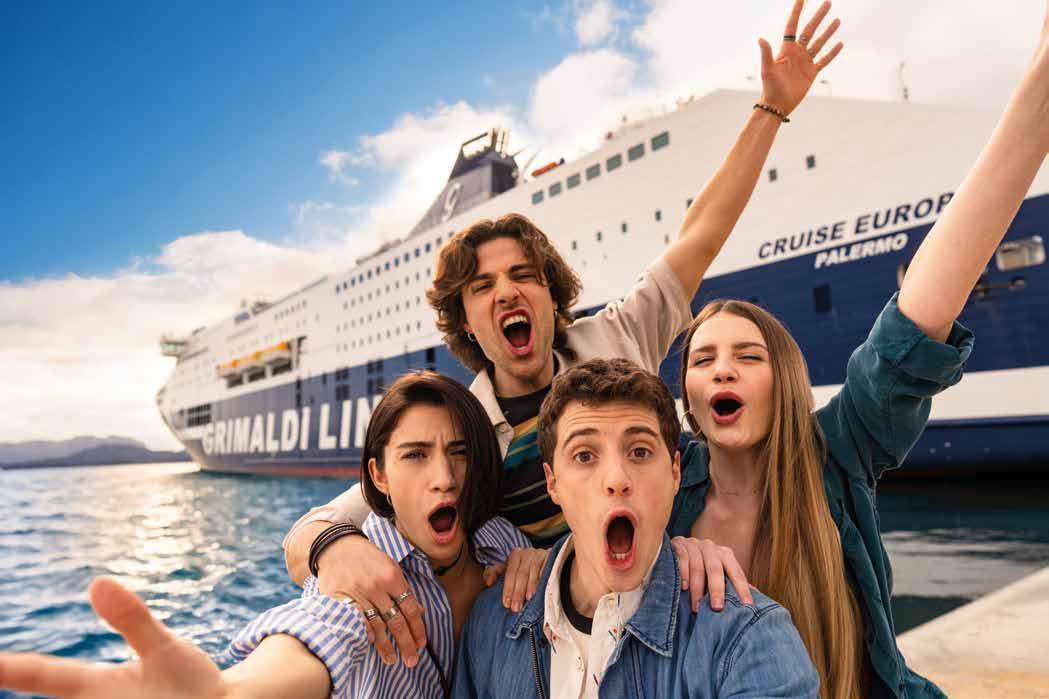


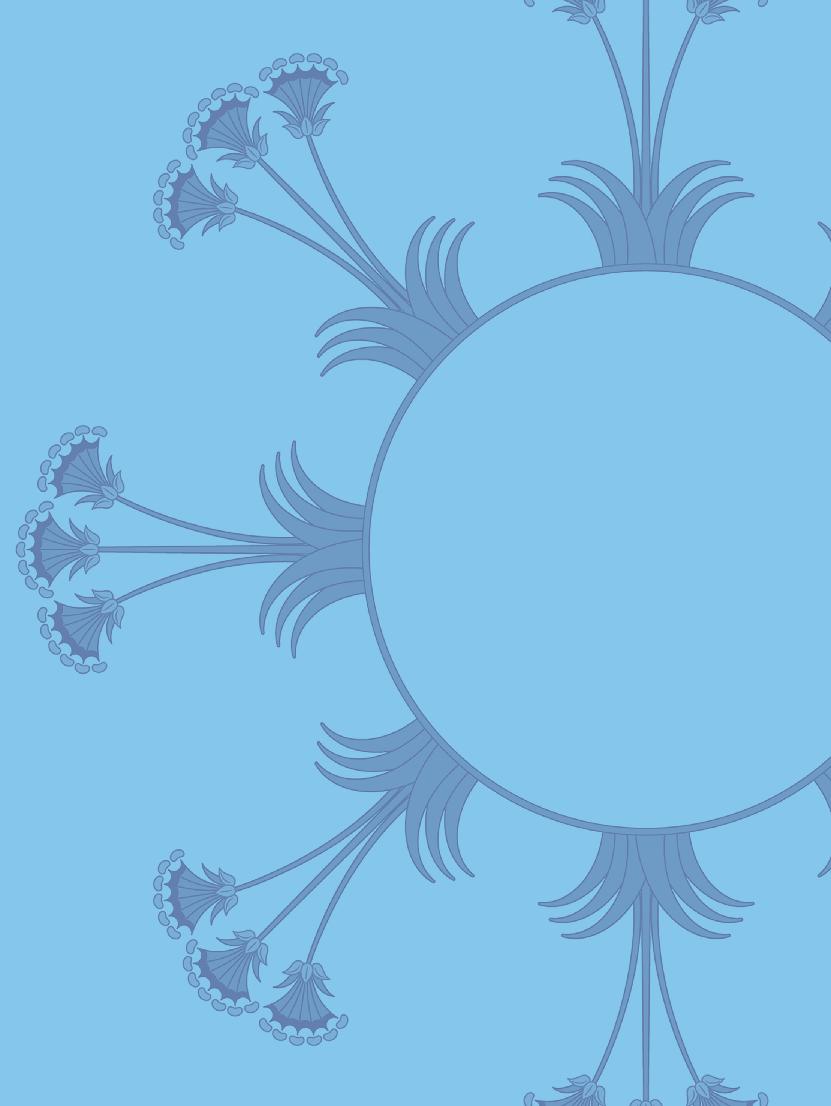
•
•
•
•

Combined Intrarenal Surgery for complete elimination of kidney stones
When conventional treatments fail to remove large, complex kidney stones, the solution is offered by the 4th Urology Clinic, Prostate & Nephrolithiasis Laser surgery, IASO with ECIRS.
ECIRS (Endoscopic Combined Intra Renal Surgery)
It is the Combined Intrarenal Surgery. That is, simultaneous approach to the stone by ureteroscopy and percutaneous endoscopy.

The first mini camera is inserted directly into the inside of the kidney through a five millimetre hole in the skin. At the same time, the second one approaches the kidney endoscopically by ascending the ureter. This allows us to access every part of the kidney with flexible, thin endoscopes without disturbing the delicate interior of the kidney. The use of fine tools is sufficient as the large stone load is removed from the kidney by two simultaneous routes.
Our clinic combines technology and twenty years of experience to offer every available method in a single session. This approach completely eliminates both the stone and the patient’s discomfort.
• The abundant power of the laser is exploited in every part of the stone.
• Complete elimination of lithiasis from the kidney and real relief from the problem.
• Minimum possible “battering” of the kidney.
• No bleeding and no need for transfusion.
• Reduced risk of infection.
• Effective regardless of stone size.
• Immediate recovery and return to daily life.
The world innovation of the ECIRS procedure is the complete supine position of the patient during the procedure. This patient position is the only one that supports the urologist’s comprehensive approach to upper urinary tract pathology. This modified technique eliminates the risk of thromboembolic events and joint stress. It is also the only one suitable for patients with increased body weight.
The ECIRS technique is also applicable to paediatric urolithiasis. In cases where we have formative kidney anomalies or a strong lithogenic tendency, it is necessary to protect the children’s kidneys. The combination of thin tools and a powerful Laser minimises trauma and ensures perfect stone removal.

OΟι

Minimally Invasive Spine Surgery (MISS) and endoscopic techniques represent a breakthrough in the treatment of spinal conditions -offering precise, safe, and faster recovery solutions for patients. The Endoscopic and Minimally Invasive Spine Surgery Clinic at IASO General Clinic, led by Dr. Georgios Vastardis, MD, PhD, is a certified Center of Excellence and an international training hub, welcoming spine surgeons from around the world to master advanced techniques.
MISS procedures are performed through tiny skin incisions (~1 cm), using local anesthesia and causing minimal tissue damage. Techniques include transforaminal injections, disc nucleoplasty, endoscopic discectomy, endoscopic rhizotomy, endoscopic foraminal and central decompression due to spinal stenosis -delivered with exceptional accuracy and minimal trauma. A key innovation is the combination of endoscopy with robotic-assisted navigation. Advanced systems like O-arm and robotic platforms allow surgeons to plan and execute each intervention with utmost precision -placing screws and interbody cages through percutaneous or endoscopic methods, even in complex spinal fusions. Stable spinal fractures due to trauma, osteoporosis, or other conditions can be treated with percutaneous kyphoplasty -an internal fracture repair performed without the need for blood transfusions. Patients typically mobilize independently just hours after surgery. Most procedures are completed within a few hours, with same-day discharge. Patients return to their normal routine quickly, without the prolonged recovery often associated with open spine surgery.
Every treatment is evidence-based and personalized. Following a step-by-step approach, our team aims to achieve the best possible outcome with the least invasive method and the least amount of postoperative pain.
Dr. Georgios Vastardis MD, PhD, Spine Surgeon, Chief of Endoscopic and Minimally Invasive Spine Surgery (M.I.S.S.) Clinic, IASO General Clinic, IASO Group, Athens, Greece
•
•
•
•
•
•

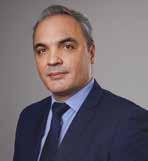
The thorax is the body’s natural “box” that protects the heart and lungs. Deformities such as the pectus excavatum, which is characterised by an inward dip in the sternum, or the pectus carinatum, which is characterised by an outward bulge of the sternum, can occur when chest wall growth does not progress properly.
Parents should seek medical advice if they observe any of the following:
• Difficulty breathing during exercise
• Frequent fatigue
• Chest pain
• Problems with posture
• Psychological impact on the child
Therapeutic Approaches
Treatment depends on age, severity of condition and symptoms. Patients should be monitored by a specialist outpatient clinic (Pectus Clinic), which offers comprehensive care:
For young patients:
• Exercise and posture improvement
• Special exercises to strengthen and improve posture
• Screening for scoliosis in collaboration with a paediatric orthopaedic surgeon
• Use of special belts (back braces) for pectus carinatum
• Vacuum bell treatment for pectus excavatum
For patients over 16 years of age as well as adult patients:
• Surgical techniques such as the Nuss procedure
• Ravitch procedure
• Use silicone implants where necessary
• Minimally invasive, fully endoscopic restoration using the TERPE method.
TERPE (Total Endoscopic Repair of PEctus) is an innovative technique that was presented in 2013 at the International Conference of Minimally Invasive Cardiothoracic Surgery in Prague (ISMCS, Prague, 2013) and was acknowledged for its originality. It was also presented at the Hellenic Society of Thoracic & Cardiovascular Surgeons’ specialised thoracic surgery seminar in 2025. This technique is designed to be performed entirely endoscopically, using a high-definition camera and only two small incisions on the sides of the chest, without the need for metal plates. It is based on extensive clinical and basic research conducted in collaboration with recognised international institutions, the experimental laboratories of the School of Veterinary Medicine at Thessaloniki and the design and construction of new tools and techniques.
As each case is unique, it requires an individual assessment by a qualified thoracic surgeon. If you are concerned about your child, consult a specialist at a reputable medical centre with experience in treating deformities.

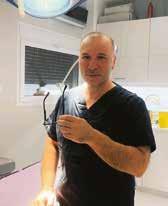
Various innovative techniques are used in modern cosmetic plastic surgery to achieve facial regeneration and rejuvenation. Two of the most popular options are hyaluronic acid injections and autologous fat graft (lipomodelling), which involves the use of microFAT or nanoFAT. While both techniques improve skin texture, volume and youthfulness, their action and intended use differ significantly.
Hyaluronic acid is ideal for restoring volume immediately, hydrating the skin and smoothing out fine wrinkles. The results are perfectly controlled and predictable. It is suitable for people who want a quick, reversible solution without a long recovery period. It is a popular injectable treatment because it can be quickly and easily applied to both small and large areas, such as the lips, cheekbones, temples, nasolabial folds and so on.
In contrast, lipomodelling is an autologous technique that uses your own fat to achieve more permanent results. MicroFAT is used for volume regeneration in larger areas, such as the cheeks and cheekbones, or across the whole face. NanoFAT, on the other hand, is mainly used for its biostimulatory action, improving and rejuvenating the skin thanks to the stem cells and growth factors it contains. It is ideal for cases involving severe signs of photoaging, or for improving the texture of thin skin. MicroFAT and nanoFAT can be combined beautifully for rejuvenation around the eyes, for dark circles under the eyes, and for areas such as the mouth, neck and the neckline.
Furthermore, lipomodelling is recommended for individuals with sufficient body fat who desire a more natural and long-lasting outcome. However, a little more recovery and surgical intervention is required to collect fat using appropriate liposuction methods. This fat must then be filtered and processed using special techniques and tools to produce microFAT and nanoFAT.
Whether to opt for lipomodelling or hyaluronic acid depends on each patient’s individual needs, expectations and circumstances. After carefully evaluating the clinical picture, the plastic surgeon will select the most appropriate technique, or combination of techniques, to achieve an individualised and harmonious result. Both techniques can be combined with each other, as well as with other surgical or minimally invasive treatments, such as facelifts (small or large), blepharoplasty, butt lifts and breast augmentations, Microneedling, HIFU, Endolift and PRP. All of the aforementioned treatments and techniques require an experienced cosmetic plastic surgeon with scientific knowledge, good technique and craftsmanship, an understanding of proportion, and the ability to communicate properly with patients.


What is robotic surgery?
Robotic surgery is the most advanced surgical method, using a robotic system to improve precision and flexibility during operations. It enables skilled surgeons to perform delicate and complex procedures through small incisions with precise movements and improved visualisation of the surgical site, reducing pain and blood loss and speeding up recovery.
What is gynaecological oncology?
Gynaecological oncology specialises in diagnosing, treating and managing cancers that affect the female reproductive system. These conditions include ovarian, uterine, cervical, vaginal and vulvar cancers.
Which gynaecological oncology operations can be performed robotically?
Removal of the uterus and cervix (total hysterectomy); removal of the fallopian tubes and/or ovaries; sentinel lymph node; pelvic and paraaortic lymphadenectomy; and omentectomy.
What role does the da Vinci® robotic system play in treating patients with endometrial cancer, ovarian tumours and cervical cancer?
The da Vinci® Surgical System was approved by the US Food and Drug Administration (FDA) in 2005 for gynaecological procedures. It is the most effective method of performing a hysterectomy with lymphadenectomy for the treatment of endometrial cancer, ovarian tumours, and cervical cancer.
What role does robotic technology play in the treatment of obese patients with gynaecological cancer?
Robot-assisted total hysterectomy is an alternative approach that offers many advantages for obese patients and those with other complex conditions. It reduces the need for laparotomy and enables patients to be discharged from hospital on the first day after surgery.
Are all surgeons qualified to perform robotic surgery on patients with gynaecological cancer?
Robotic surgery requires skilled surgeons, specialised equipment and advanced technology. The robotic system complements the surgeon’s skills, not the other way around. It should be noted that special training and certification in both gynaecological oncology and robotic surgery are required for robotic operations to be performed safely.

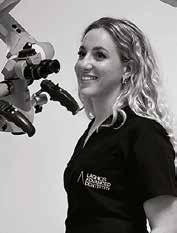
Aswollen cheek, especially if accompanied by pain or fever, is often a sign of a tooth infection. The cause may be an abscess, caries or an impacted wisdom tooth. But when are antibiotics really necessary? Which symptoms should not be ignored? In this article, we answer the most frequently asked questions and explain how you can protect your health with the proper diagnosis and early treatment.
Main symptoms
• Visible swelling: Patients may experience visible swelling on the cheek, which may be localised or widespread.
•Pain: Pain is often severe and can get worse with chewing, pressure on the area or even at rest.
•Increased sensitivity: The affected tooth or adjacent tissues may be particularly sensitive to pain.
•Possible fever: In cases where the infection has worsened or started to affect overall body function, a mild to high fever may occur.
•General condition and weakness: If the infection spreads or remains uncontrolled, it can also affect the patient’s general health, causing tiredness and a general feeling of being ill.
•Systemic complications: In rare but serious cases, the infection can lead to bacterial infection and affect internal organs.
What can I do until I see a dentist?
•Place a cold pack on the outside of the cheek (not hot).
•Avoid chewing on the affected side.
•Do not take antibiotics without a prescription.
When do I need antibiotics?
Antibiotics are necessary when:
•The swelling is severe and spreads to the face or neck.
•Fever or other systemic symptoms are present.
•The tooth cannot be treated immediately (e.g. root canal treatment).
•The infection comes back or does not go away with simple treatment.
•The patient is immunocompromised (e.g., diabetic).
Antibiotics are not always necessary! They may not be needed for local infections that are quickly treated by the dentist.
Do I need to see a dentist if the swelling goes away with antibiotics?
Absolutely and always “Yes”! Antibiotics temporarily treat the infection, not the cause. The abscess or damaged tooth must be treated (by root canal, extraction or other intervention). Otherwise the infection will return.

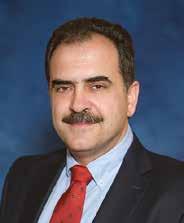
Pregnant women are among the healthiest members of society as they tend to be relatively young, free from underlying diseases, attentive to their diet and diligent in taking iron, calcium and multivitamin supplements. However, we know that the immune system is weakened during pregnancy, placing a particular strain on the cardiorespiratory system. Although women should ideally be immunised before conception, administering specific vaccines during pregnancy protects both the mother and her unborn child from various infections. However, only a small percentage of women get vaccinated during pregnancy. This is partly because many obstetricians avoid informing them and partly because they are themselves sometimes reluctant to be vaccinated. Nowadays, we have considerable experience of using vaccines during pregnancy. Their benefits far outweigh the rare complications they may cause. Evidence suggests that protective antibodies with increasing titres are detected in the umbilical cord just 15 days after vaccination. Although antibodies can also be passed through milk during breastfeeding, it appears that the most effective method of protection is the transfer of antibodies in utero via the placenta.
There are specific vaccines recommended during pregnancy:
a. Influenza vaccine. It is recommended for pregnant women from October to March and offers protection for the first six months of the newborn’s life.
b. Pertussis vaccine. Regardless of previous vaccinations, it is recommended that the vaccine is administered between 27 and 36 weeks of gestation, as this reduces the risk of severe infection in newborn babies for at least the first two months of life.
c. Covid-19 vaccine. It is recommended for pregnant women who have not contracted the virus within the last three to six months and who have no underlying medical conditions.
d. Respiratory syncytial virus (RSV) vaccine. It is recommended for pregnant women predicted to give birth between September and March, as this is the season when the virus is most prevalent. It dramatically reduces the likelihood of a serious neonatal infection.
For all these reasons, it is essential that obstetricians, gynaecologists, midwives and other competent individuals provide pregnant women with the correct information. They should be informed that the vaccines are safe and will protect both them and their foetuses or neonates from serious infections.
Every knee with arthritis is unique and so should be the tools used to place implants for total arthroplasty.
Total knee replacement surgery involves replacing arthritic or damaged knee surfaces with special prostheses. The procedure aims to relieve arthritis-related pain and disability and restore joint function, thereby improving the patient’s quality of life.
The correct positioning of total arthroplasty implants is crucial for ensuring optimal function and durability.
The personalised knee arthroplasty method provides a solution to the problem of correctly positioning knee prostheses, as studies have emphasised the importance of correct positioning for the patient’s postoperative recovery.
The traditional method involves achieving correct positioning using extramedullary and intramedullary rods, as well as calculating specific angles in anatomical structures that are sometimes difficult to discern.
In personalised total arthroplasty, the patient undergoes a special three-point CT scan of the hip, knee and ankle. A three-dimensional representation of the patient’s joint is created using special software.
Next, specialised cutting tools are manufactured that are unique to each patient and fit the surface of the knee implants perfectly. During the operation, the surgeon positions customised cutting tools on the thigh and shin bones and carries out the planned osteotomies.
This ensures that the pre-operative plan is faithfully followed. Thus, total arthroplasty is performed in a personalised and predictable manner for each patient, taking their unique anatomical characteristics into account.
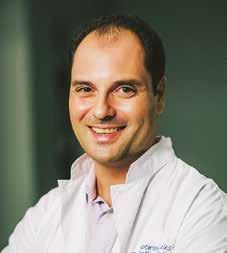
This preoperative study, combined with minimally invasive techniques, results in:
• The optimal placement of prostheses tailored to each patient, which directly impacts their clinical recovery and joint survival.
• Minimal damage to soft tissue and bones, since the prostheses are not aligned using intramedullary rods. This results in less post-operative pain and a quicker return to normal activities.

Sotirios Leles
Attending Orthopedic Surgeon Iatriko Athinon
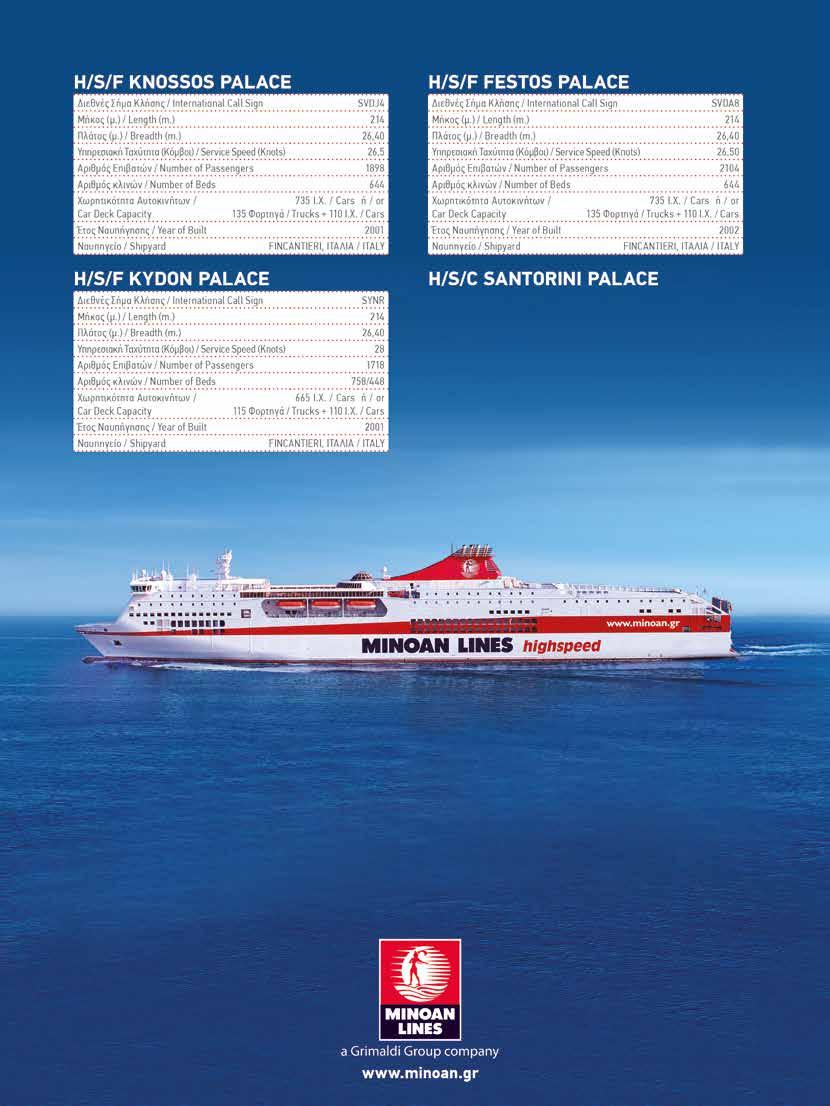
Under a different name, Santorini Palace has been charted out on a long-term basis.
ΜΙΝOAN LINES
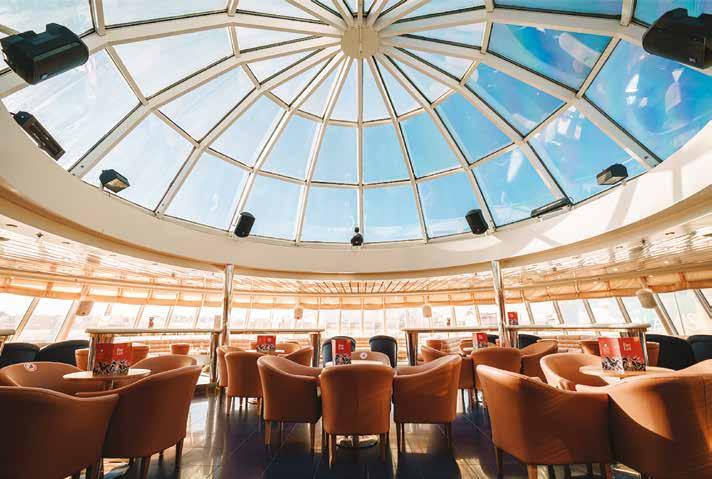
Enjoy
From the moment of embarkation until the arrival at the final port destination, the main objectives of the trained personnel of MINOAN LINES are the safety of their passengers and the assurance of a deluxe and comfortable travel experience. Begin your journey in one of the welcoming, hospitable, modern, comfortable, health safe lounges and public areas of the company’s cruise ferries, savoring your cup of coffee, meal, drink or dessert while enjoying the great blue color of the Greek seas.
The company has already completed 50 years of successful operation, it was founded in the Cretan city of Heraklion in 1972, and its course in the shipping sector began in 1974. Since then, it has played a leading role in the routes it serves and has set the standards in travel innovation, holding a prominent position among the foremost passenger ship companies in Greece as well as in Europe.
Since 2008 MINOAN LINES has been a member of the Italian Grimaldi Group, one of the largest carriers of vehicles and machinery of all types (roll-on/roll-off), containers and passengers in the world. The Grimaldi Group is headquartered in Naples, Italy, with branches in more than 25 countries, 17,000 employees and over 130 vessels approaching more than 140 ports worldwide.
The network of MINOAN LINES covers a wide range of domestic and foreign tourism. With our luxurious and ecological ships, we connect with the domestic routes, Heraklion, Crete and Piraeus and with the Adriatic routes, Greece with Italy. Cruise Ferries KNOSSOS PALACE and FESTOS PALACE make the trip more pleasant and comfortable than ever, connecting Piraeus with Heraklion with daily departures. In addition, a direct connection is offered from Piraeus and Heraklion with the enchanting Milos, in just a few hours, with the floating palaces KNOSSOS PALACE and FESTOS PALACE with daily itineraries all year round.
With regard to the selection of accommodation categories, it is worth noting that MINOAN LINES offers various cabin and accommodation categories on its ships. You can choose to travel in economy class, enjoying the services in the spacious and comfortable lounges of the ship, in the new VIP seats, which offer privacy and comfort in a specially designed area of the ship, or in one of the different cabin categories, depending on your needs, whether you are travelling alone, with friends or with your family. In fact, for those travelling with their beloved four-legged friends, MINOAN LINES offers specially designed Pet cabins if you wish to be with them during the journey.
Also, for lovers of Italy, it is worth noting that the ship KYDON PALACE operates on the route Igoumenitsa - Brindisi. Under the Greek flag and Greek crews, the daily itineraries of KYDON PALACE are operated, in conjunction with the itineraries of EUROPALINK, by GRIMALDI LINES.
Apart from the unparalleled aesthetics and luxury, the high safety, quality and comfort of our company’s vessels, every passenger of MINOAN LINES can enjoy during the trip, a wide range of services.
Shop for select products at one of the stores on board - treat yourself or buy for your beloved ones. Hop on-line on your own smartphone, tablet or laptop from the comfort of your coach or seat, using Wi-Fi services available.
The new à la carte Cretan menu is available on the FESTOS PALACE and KNOSSOS PALACE ships of MINOAN LINES, alongside other
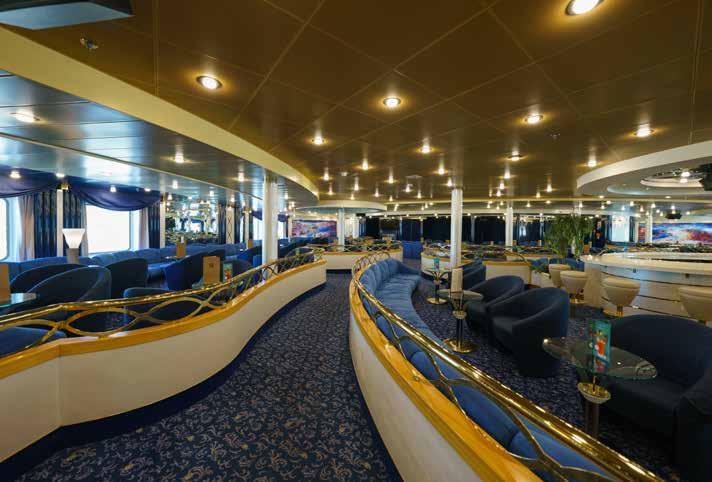
interesting options, on the PIRAEUS-ΜILOS-HERAKLION-MILOSPIRAEUS routes, and is certified with the "Cretan Cuisine" quality label of the Region of Crete. Regarding the meals options, in the two restaurants, A la carte and Self Service, of our cruise ferries KNOSSOS PALACE and FESTOS PALACE, the experienced chefs will travel you with their gastronomic creations and quality ingredients, many of which are produced
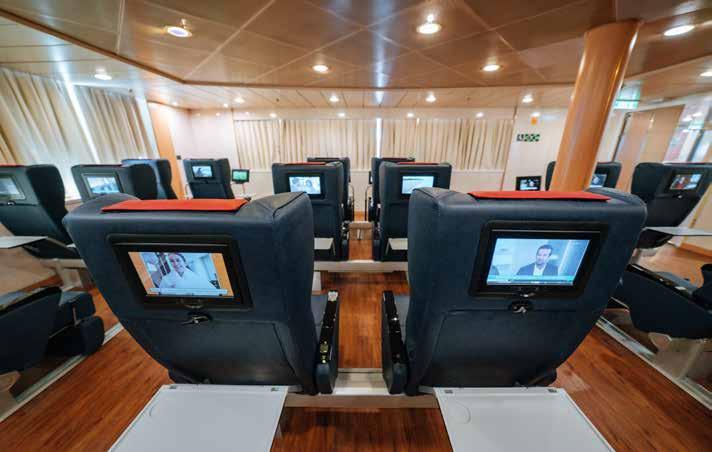
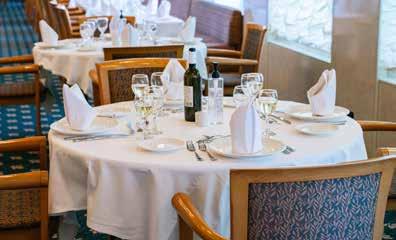
from the fertile soils of the Cretan land. Dining options include an A la carte and a Self Service restaurant, where experienced chefs take diners on a gastronomic journey with their culinary creations, made with quality ingredients, many of them being the fruits of the fertile Cretan soil.
Comfort, luxury and quality services on board are combined with the hospitality and courtesy of our vessels’ staff to travel you quickly and safely to your favorite destinations!
MINOAN LINES, since their establishment, have recognized their responsibility towards society and seek to act and operate actively and consistently within the principles of Corporate Social Responsibility by developing innovative actions and presenting important social work.
The company always strives, based on its anthropocentric philosophy, and with full respect towards its principles and values, to encourage and reward worthwhile initiatives and efforts.
KNOSSOS PALACE, FESTOS PALACE και
Being aware of its social role and in the context of its corporate strategy and commercial policy, MINOAN LINES promotes an integrated, coordinated, quality and significant social work, by setting important goals, actively participating and supporting, on an annual basis, through sponsorships (financial support or free / discounted tickets with the cruise ferries of MINOAN LINES’ fleet) socially vulnerable groups, various cultural associations, social organizations, sports clubs, organizations, educational and charitable institutions, animal welfare organisations, aiming for the prosperity of the society as a whole and its progress.
All in all, we must emphasize that in the rich plan of Corporate Social Responsibility activities, the cultivation of environmental awareness and sustainable development are promoted. MINOAN LINES is the first company in the field of Greek passenger shipping that fully complies with the new requirements of the International Maritime Organization (IMO), having invested and completed the installation of exhaust gas cleaning devices (SCRUBBERS), in the high-speed ferries KNOSSOS PALACE, FESTOS PALACE and KYDON PALACE, converting them into more environmentally friendly vessels.
MINOAN LINES does not just follow developments, it pioneers in them and continues to be on a growth trajectory by investing in the future and development of the tourism product for the benefit of our country.
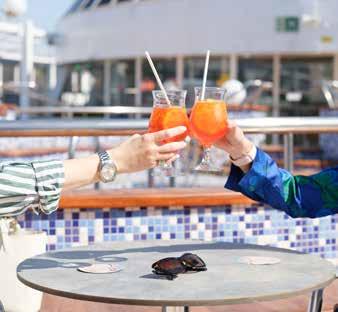



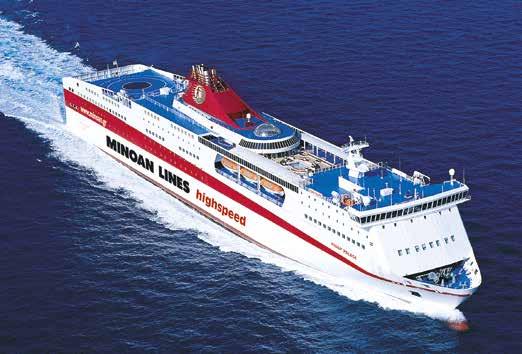
TOURISM
Greek Inspired Gastronomy Restaurant».
TOURISM AWARDS
TOURISM AWARDS
Travel.
ΧΡΎΣΟ
Online Strategy.
Social Media Presence/Παρουσία
Minoan Lines
(Travel Experience),
Online Strategy της Μinoan Lines,
GREEK HOSPITALITY AWARDS 2020 & 2018
TOURISM AWARDS
ΧΡΎΣΟ
ICAP GROUP
TOURISM AWARDS
LLOYD’S LIST GREEK SHIPPING AWARDS 2016
- Passenger Line of the Year».
Μinoan Lines is the most highly regarded shipping company in Greece and Europe. It has won several quality awards and top distinctions for its vessels, services and outstanding professional standards from a number of highly rated institutions and publications, as follows:
TOURISM AWARDS 2025
GOLD AWARD in the “Promotion of Local Greek Cuisine” category, nominated as “Journey to Cretan Gastronomy / Greek Inspired Gastronomy Restaurant”.
TOURISM AWARDS 2024
GOLD AWARD in the category Promotion of Local Greek Cuisine, under the nomination title "Journey to Cretan Gastronomy / Greek Inspired Gastronomy Restaurant"
SUPERBRANDS 2024
THE TOP CORPORATE BRAND in Greece’s transport sector for 2024.
TOURISM AWARDS 2022
GOLD AWARD in the Corporate Social Responsibility Actions category, with nomination title "Minoan Lines is always close to the society and its values!"
GOLD AWARD in the Social Media Presence category, with the nomination title: “Minoan Lines continues its dynamic presence in Social Media”.
TOURISM AWARDS 2021
GOLD AWARD in the Search Engine Optimization (SEO) Strategy category, with the nomination title “Optimization of SEO Strategy in 5 countries”.
GOLD AWARD in the Social Media Presence category. Minoan Lines continues its dynamic presence in social media (Facebook and Instagram).
TOURISM AWARDS 2020
GOLD AWARD for Travel Experience, in the Travel section/category.
GOLD AWARD for the Online Strategy of Minoan Lines, in the Online Strategy section/category.
GREEK HOSPITALITY AWARDS 2020 & 2018
“Best Greek Coastal Shipping company”.
TOURISM AWARDS 2019
GOLD AWARD for the Support of Local Communities and Corporate Social Responsibility actions, implemented by the company, in the Branding / Public Relations / People Strategy category.
GOLD AWARD for the “New Destinations” in the Attractions & Destination category.
CORPORATE SUPERBRANDS 2018-2019 & 2016-2017
“Top Corporate Brand Name in the Sea Transportation Sector”.
ICAP GROUP - 2018 & 2017
“True Leader” in the category “Maritime Shipping”.
TOURISM AWARDS 2018
GOLD AWARD for MINOAN LINES BONUS CLUB, the pioneering and flexible customer loyalty program.
GOLD AWARD for the reduction of the energy footprint of the company's vessels and the protection of the environment.
GOLD AWARD for the integrated On-Line Digital Campaign entitled “Away with the Müllers”.
TOURISM AWARDS 2017
GOLD AWARD in the category “Supporting local communities / Actions of Corporate Social Responsibility”.
GOLD AWARD in the category “Online presence and communication” for the NEW Minoan Lines’ Online Booking System.
LLOYD’S LIST GREEK SHIPPING AWARDS 2016
“Passenger Line of the Year”.




Το πρωτοποριακό ΠΡΟΓΡΑΜΜΑ ΠΙΣΤΟΤΗΤΑΣ ΕΠΙΒΑΤΩΝ των ΜΙΝΩΙΚΩΝ ΓΡΑΜΜΩΝ, έχει συμπληρώσει 496.000 μέλη στα 20 χρόνια επιτυχημένης λειτουργίας από την έναρξη του, αποδεικνύοντας την τεράστια απήχηση του
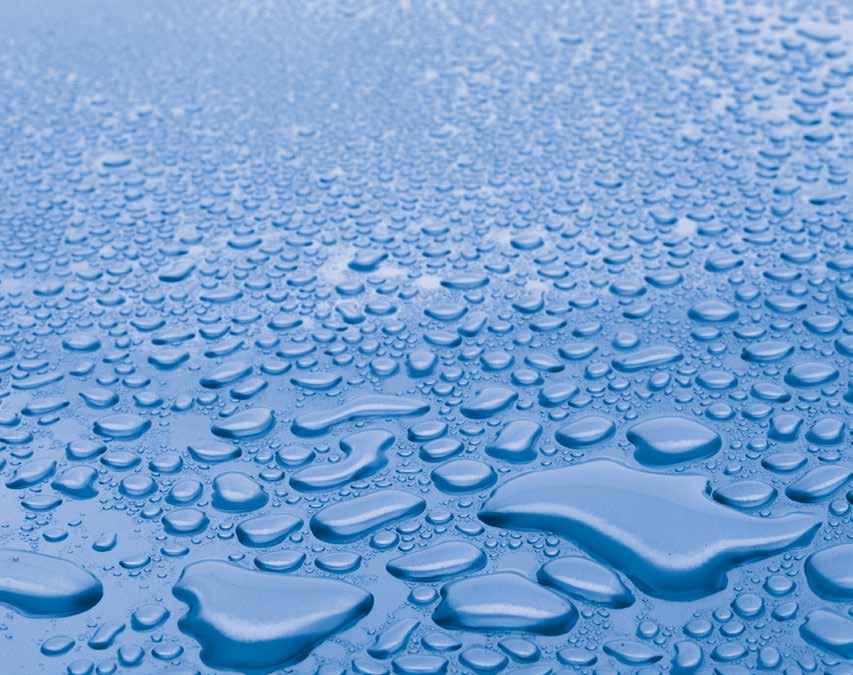
•


The truly innovative customer loyalty program of Minoan Lines now has 496.000 members and 20 years of successful operation from the launch, demonstrating its enormous appeal to the passenger public in Greece and abroad.
Gold Award for Minoan Lines Bonus Club at Tourism Awards 2018 & Silver Award for Loyalty Programs at Tourism Awards 2021 & 2022.
• 10-20% discount on CRETE, MILOS, ADRIATIC routes.
• Free tickets in all accommodation and private vehicle categories.
•10-20% discount at the bars and restaurants on board.
•10-15% discount at the stores on board.
• Promotions and offers only for members.
*Not applicable on ixed dues.
YOUR BONUS CLUB CARD IS AVAILABLE DIGITALLY!
Minoan Lines Bonus Club goes digital! We have good news for you!
As a Minoan Lines Bonus Club member, you don’t need to have a physical card in order to enjoy all the benefits.
Log in to your Minoan Lines Bonus Club account at www. minoan.gr and download your digital loyalty card, print it or save it to your smartphone, tablet or laptop for quick access to your membership details.
Benefits: Not a member yet? Sign up now on www.minoan.gr and get your first 100 points for free!


